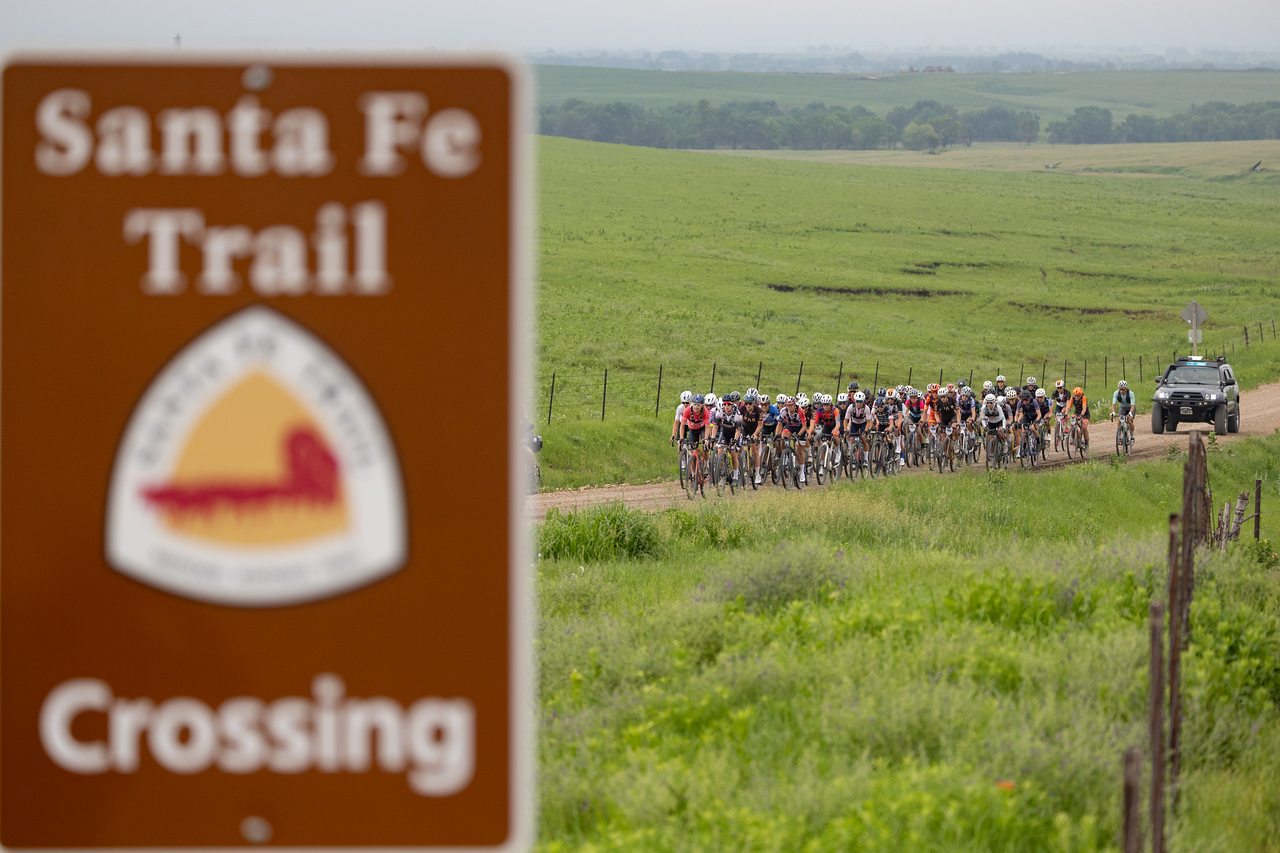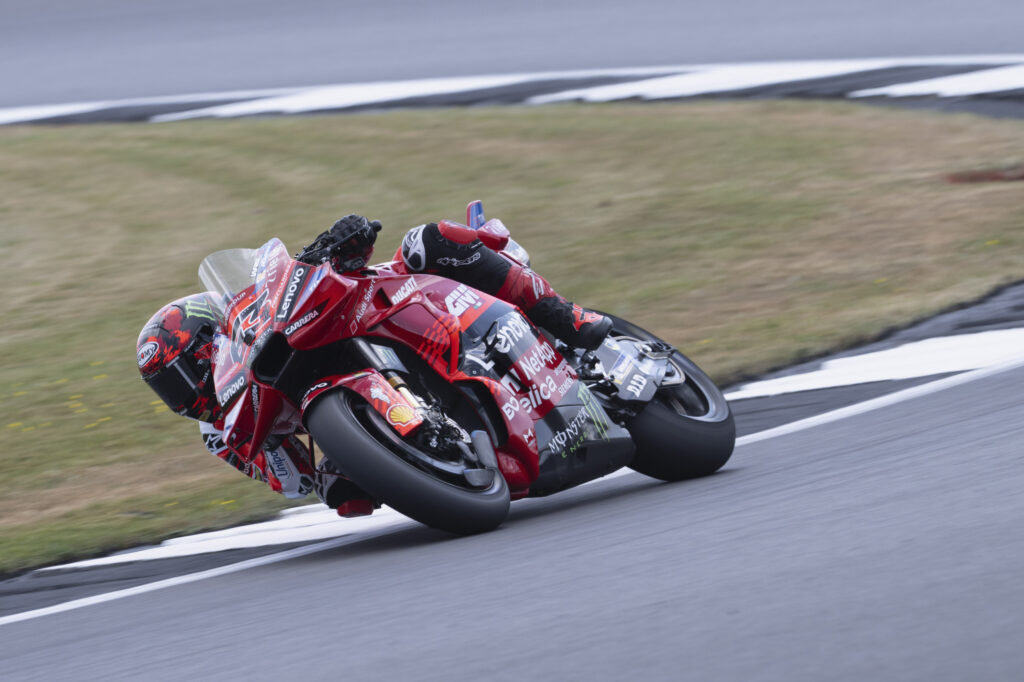This is my third Critérium du Dauphiné in a row now, in my capacity as sniffer-outer of new road tech. It’s a wonderful race, starting in the very sleepiest bits of central France, but still amassing a real who’s who of Tour de France GC contenders and stage hunters to keep the week of racing exciting from the gun.
It has also become the primary race for spotting pre-release race bikes and new road tech before the Tour; teams don’t want to risk using brand new gear at the biggest race of the year, and the sponsors don’t want teams using new gear too soon, so the happy middle ground is that the Dauphiné becomes the first real test for a whole host of new stuff. As a tech journalist, it’s probably a more enticing prospect than the Tour itself, rather madly.
Last year was a vintage Dauphiné, with four prototype bikes, and while I have only spotted two this year, they are at least big ones: A new Cervélo S5, and an utterly mind-bending new Factor aero bike that really pushes the boundaries of what’s possible from a bike design point of view. What’s more, this is the first time in as long as I can remember that all of the favourites for the Tour are at the same warm-up race, meaning I’ve also got a glimpse of Pogačar, Vingegaard, and Evenepoel’s race bikes for you.
On top of that, there are a large handful of new wheelsets; two from Roval and one from Reserve, plus some new tyres, and some as yet unseen aero hacks in the constant cat-and-mouse of teams versus the UCI commissaires.
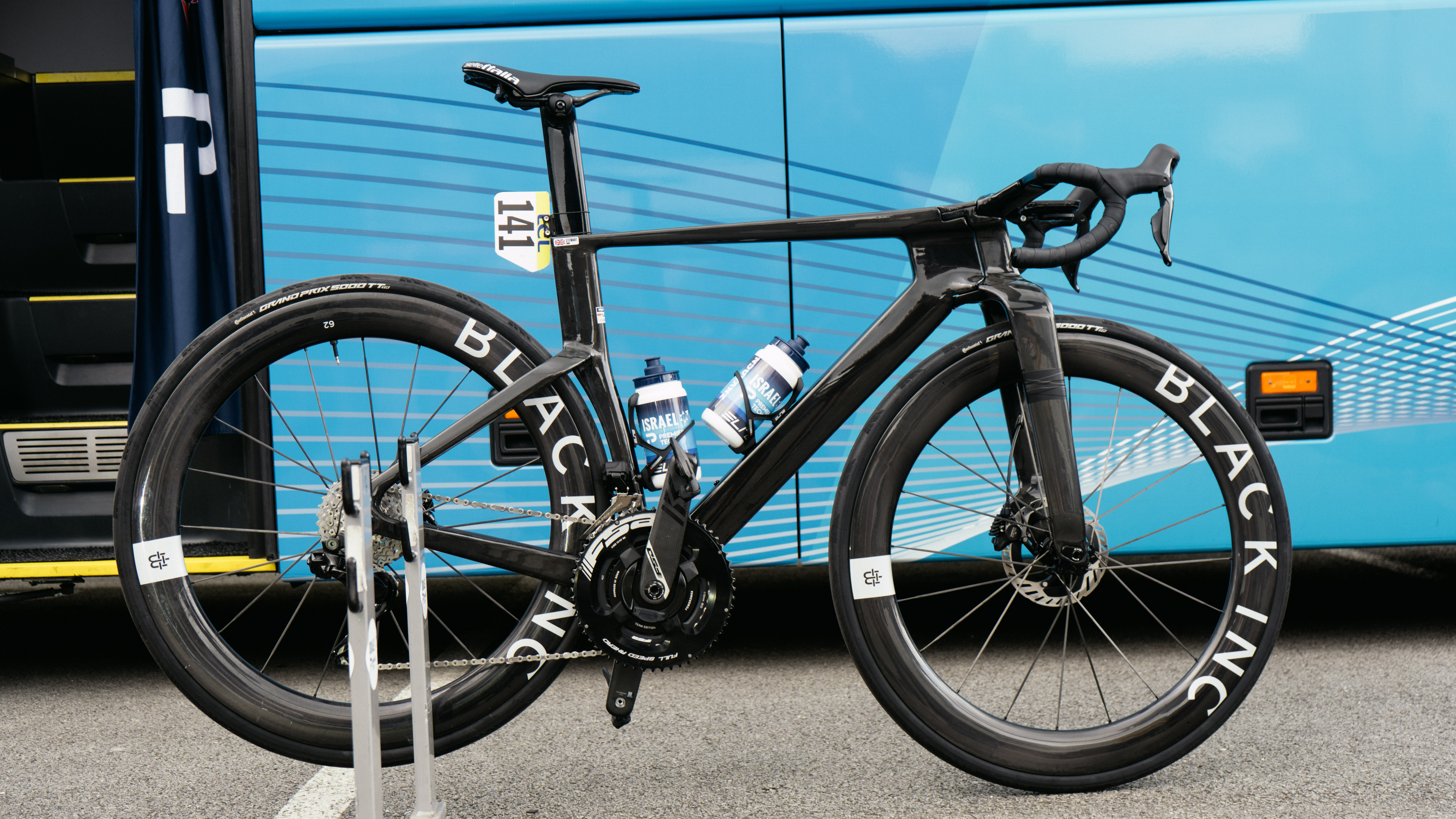
It would be madness to start this gallery with anything else other than this insane prototype Factor aero bike. It’s utterly bonkers and I love it.
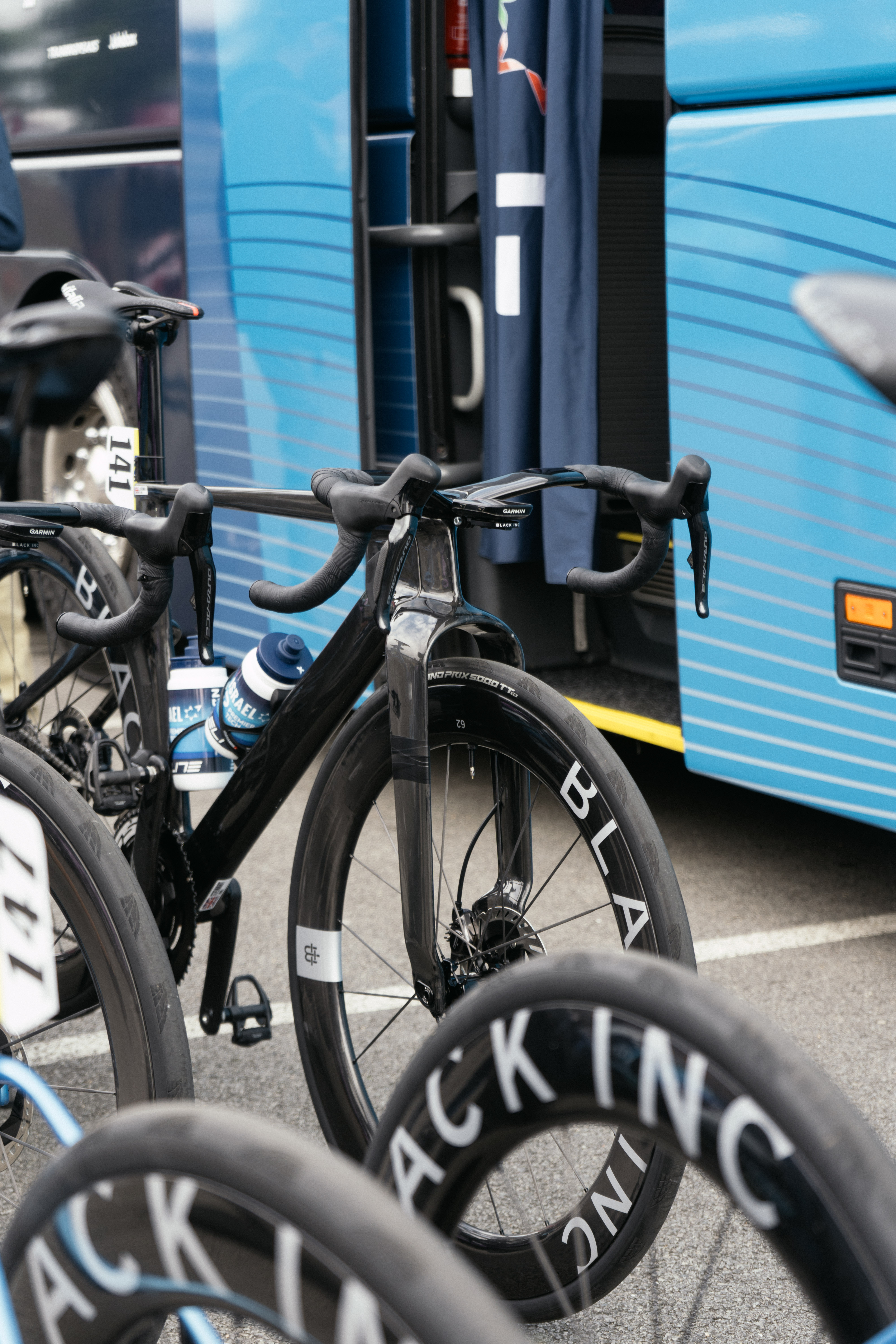
The main event is at the front of the bike, with these incredibly wide-set forks.
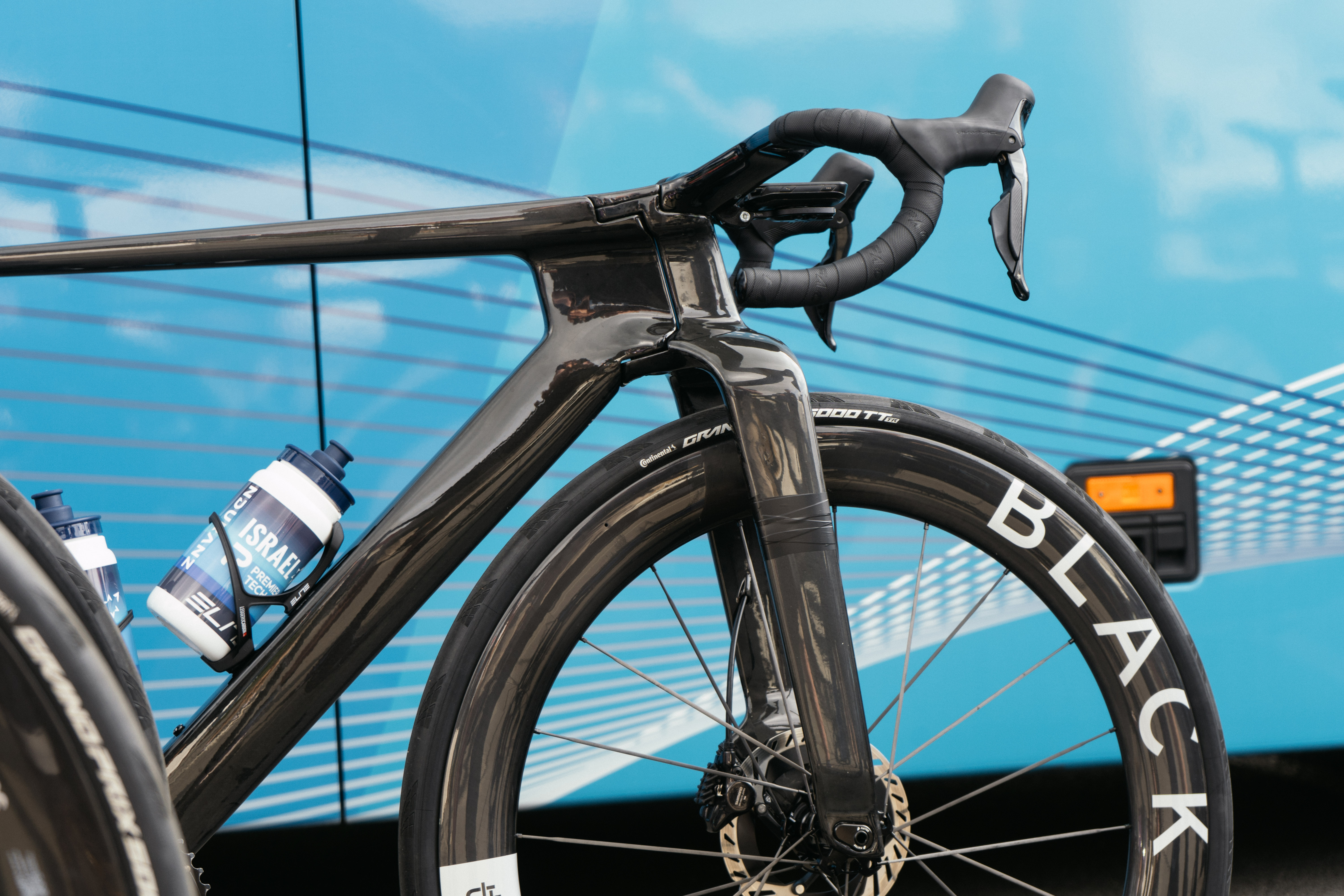
There’s so much space above the tyre, so the fork itself is longer than the norm, meaning the head tube is correspondingly small. As a head tube has to be larger than the bladed fork legs (even when taken as a pair) this likely results in a reduction in frontal area.

The whole bike is tilted forward slightly on the bike stand, but you can see that the legs are very steep regardless.

The bayonet fork means the effective head tube is super deep, for aero gains.
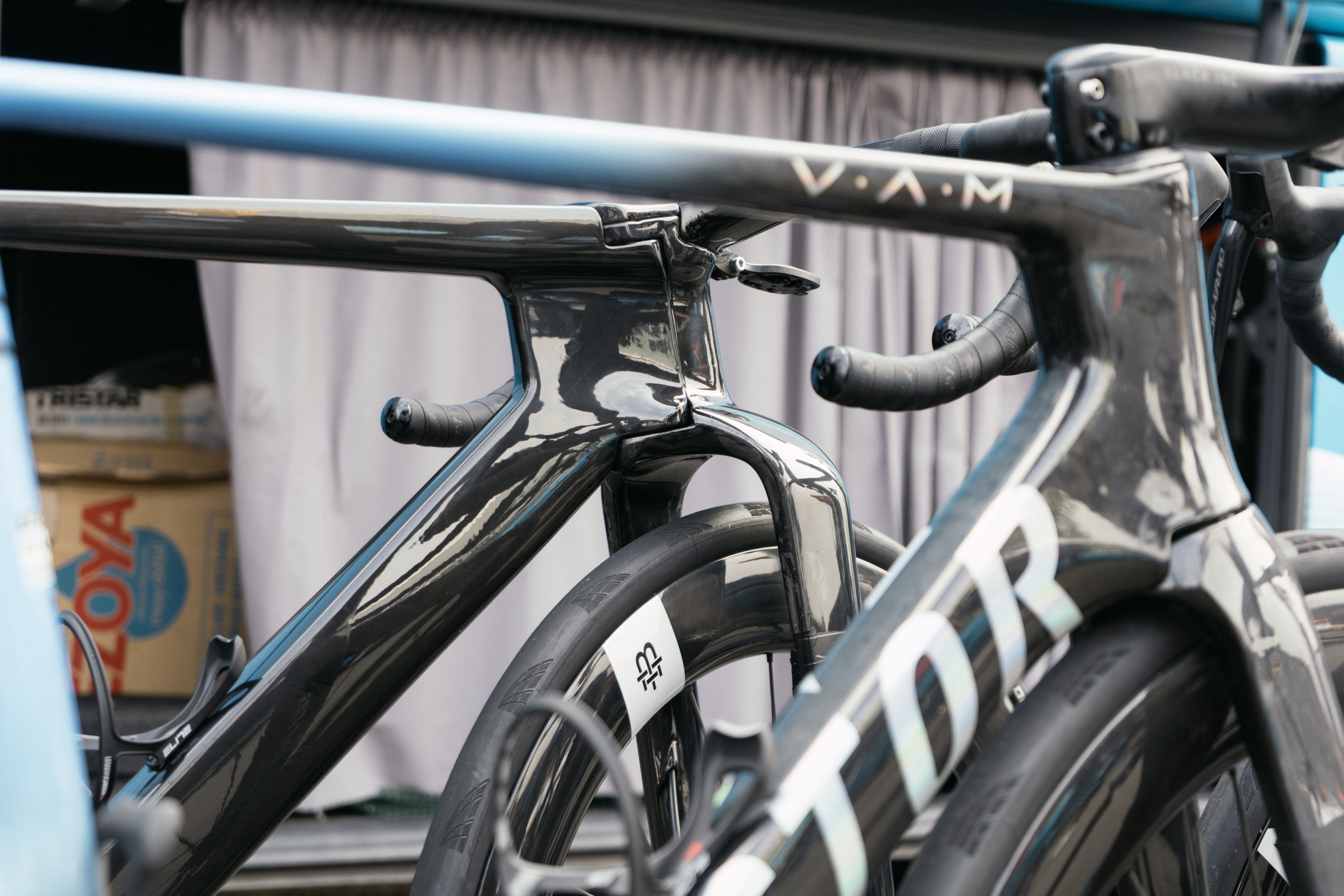
Here it is next to the normal Factor Ostro VAM, a bike that we found to be one of the fastest overall in our wind tunnel tests.
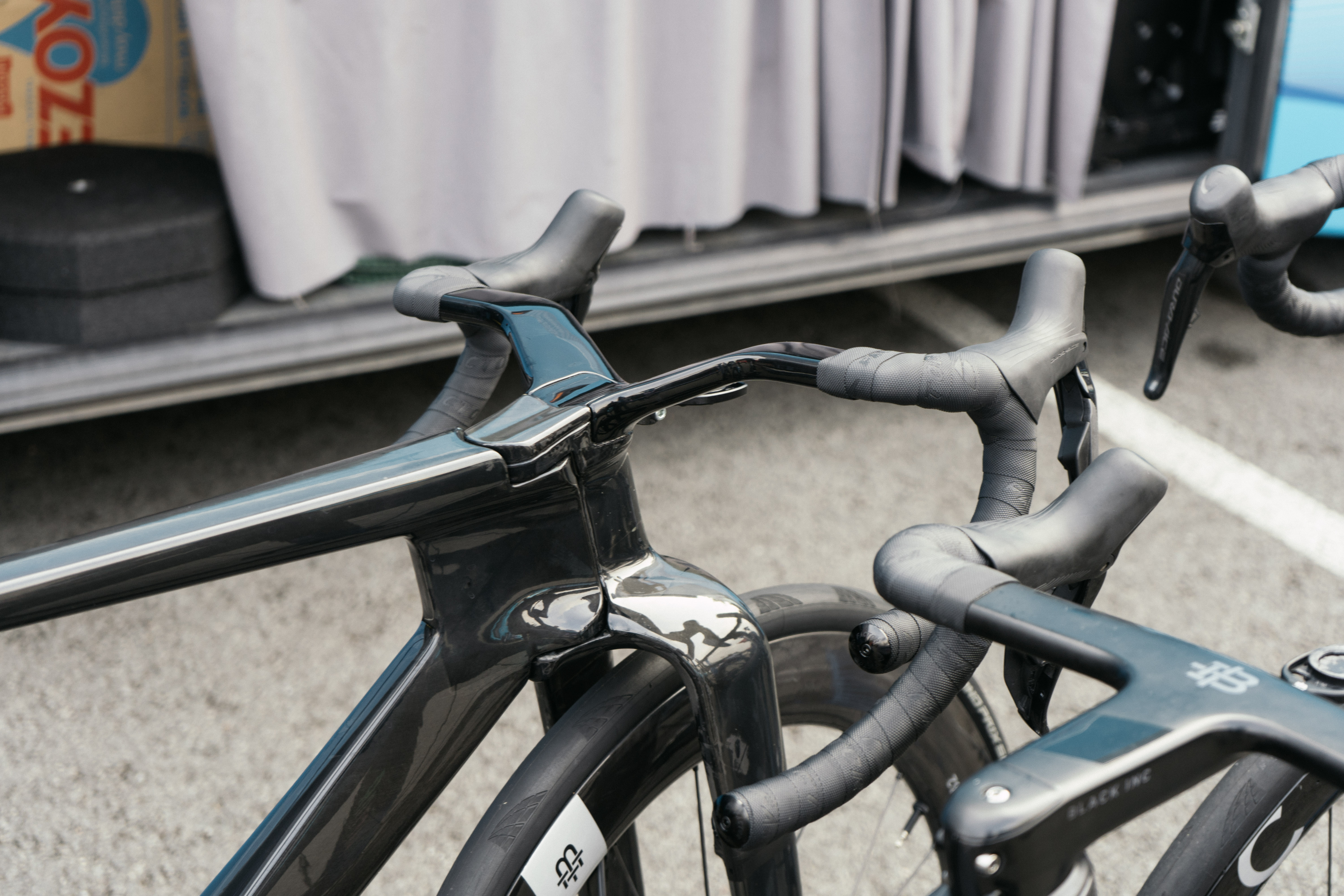
The Y-shaped cockpit is certainly reminiscent of the Colnago Y1Rs.
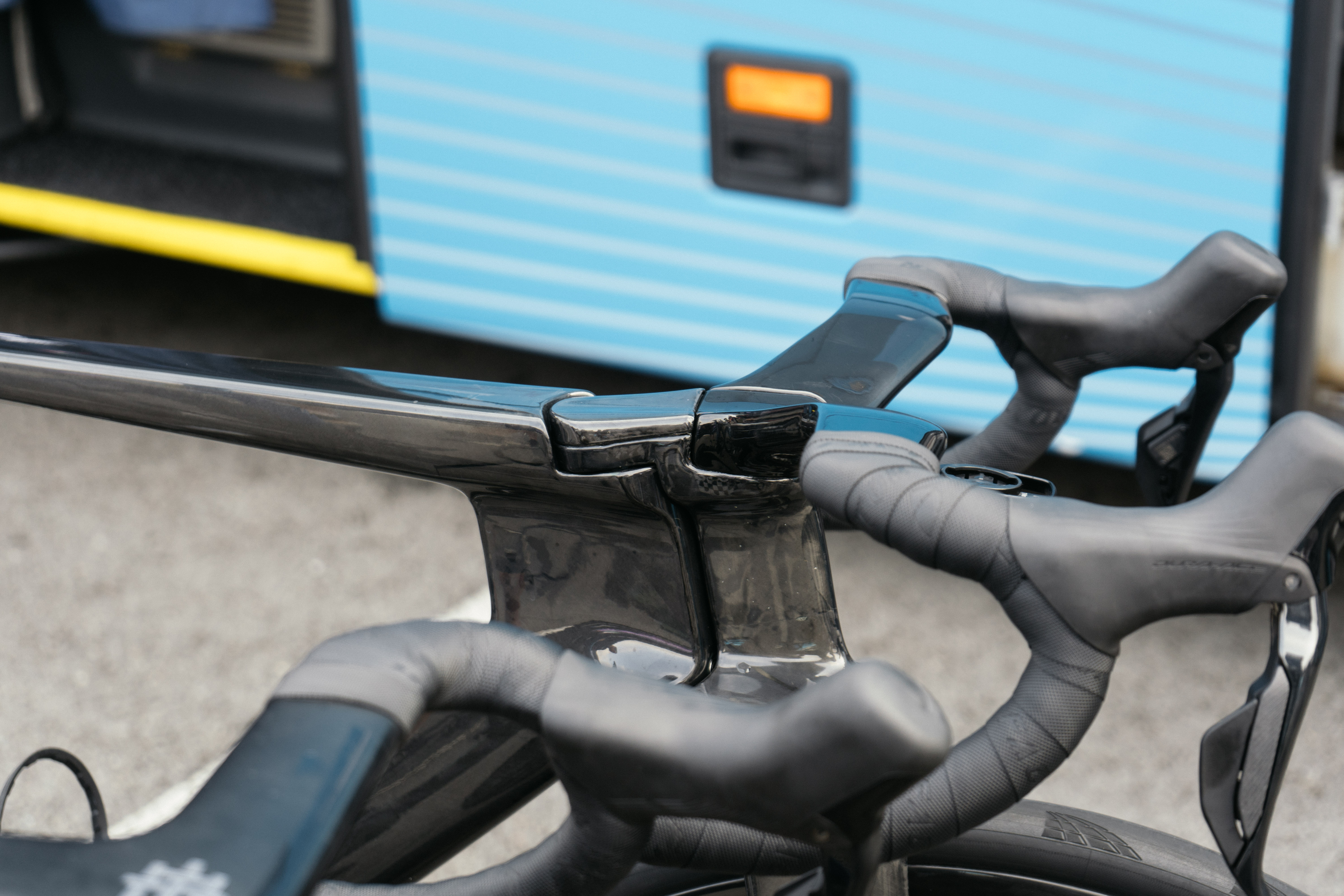
It doesn’t look like there’s a great deal of adjustment available.
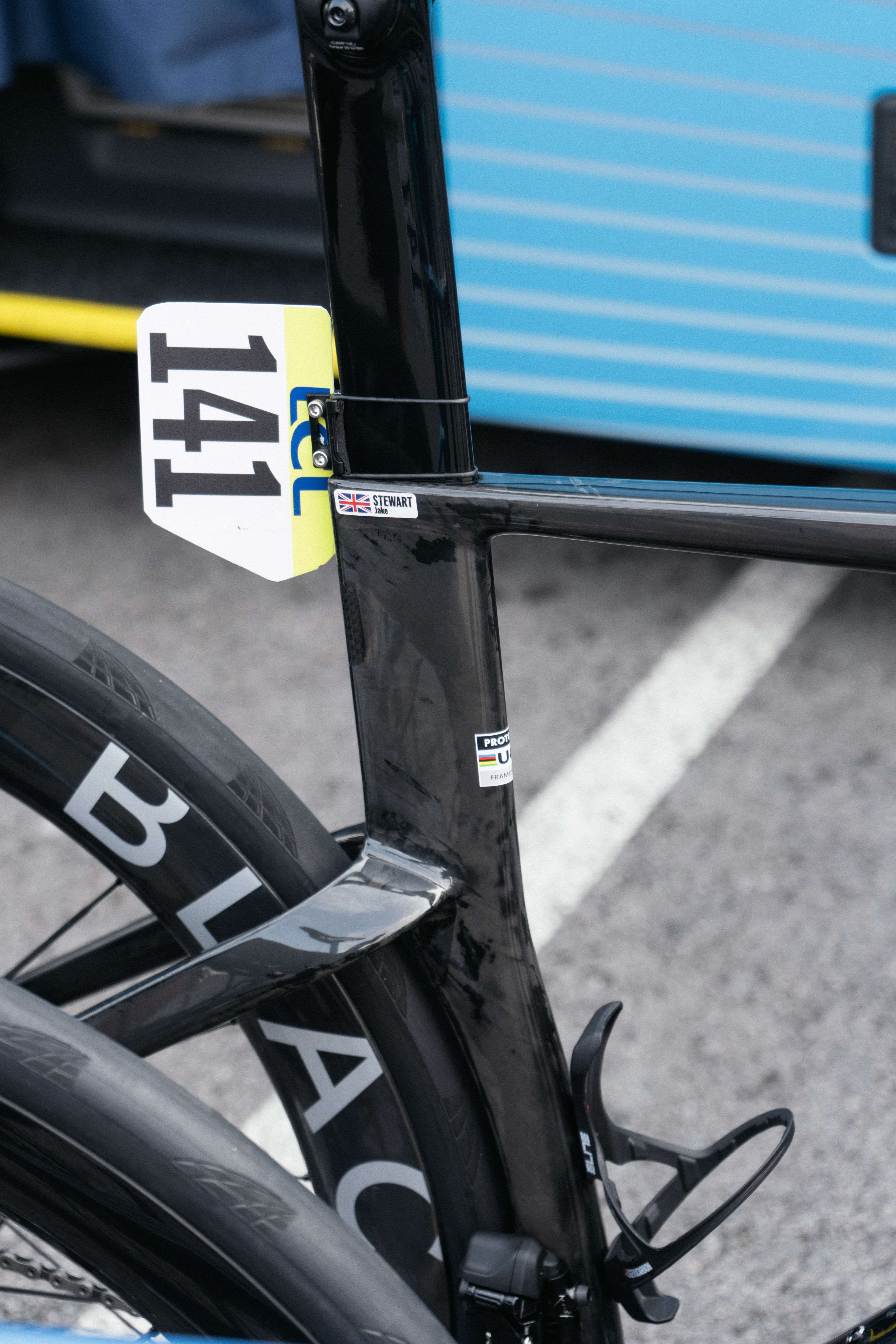
Jake Stewart has the pleasure of testing out this new bike for the next week.
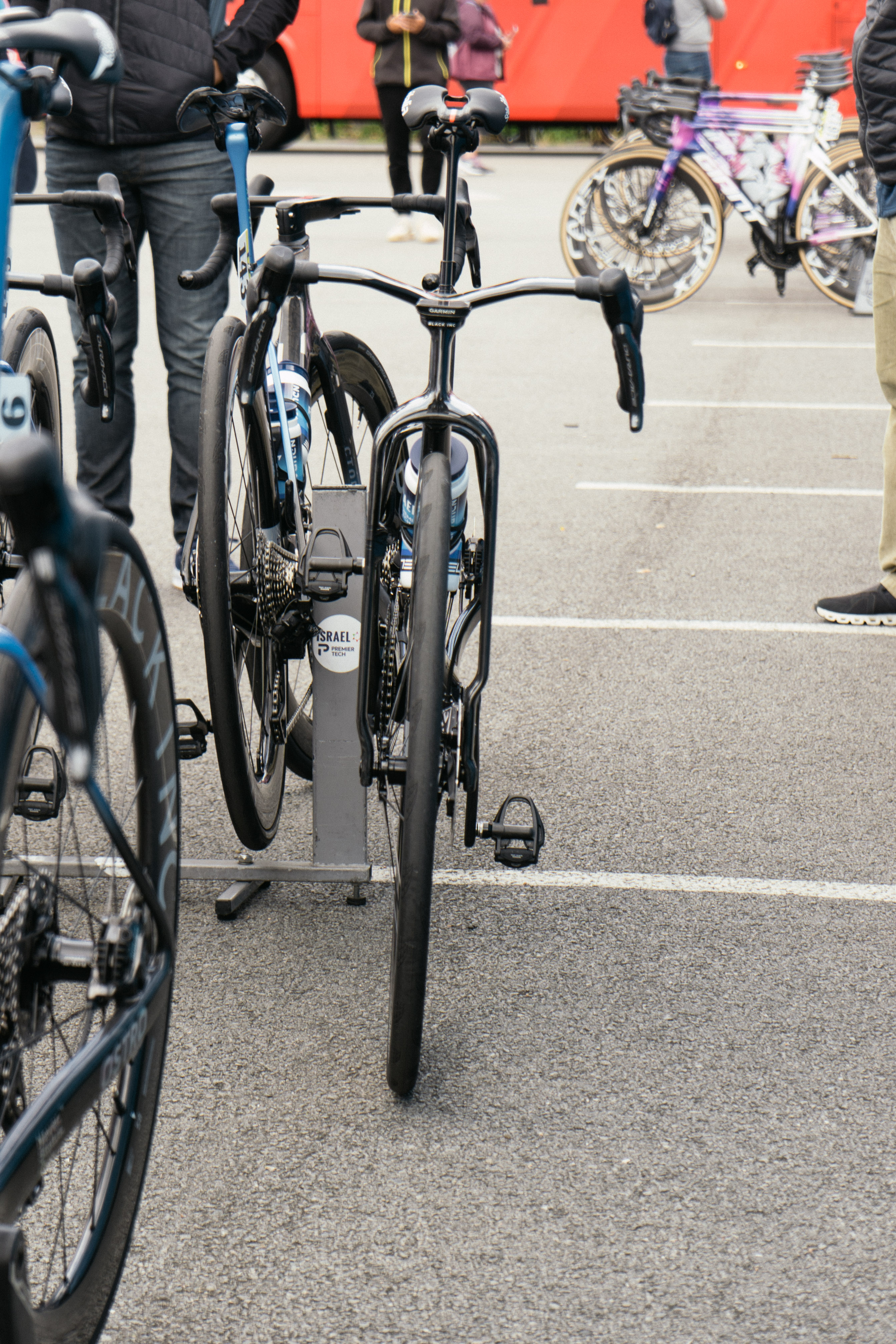
Tyre clearance isn’t going to be an issue up front, no matter how wide road tyres get.

This seatpost doesn’t look like it has a great deal of flex built into it at that angle.
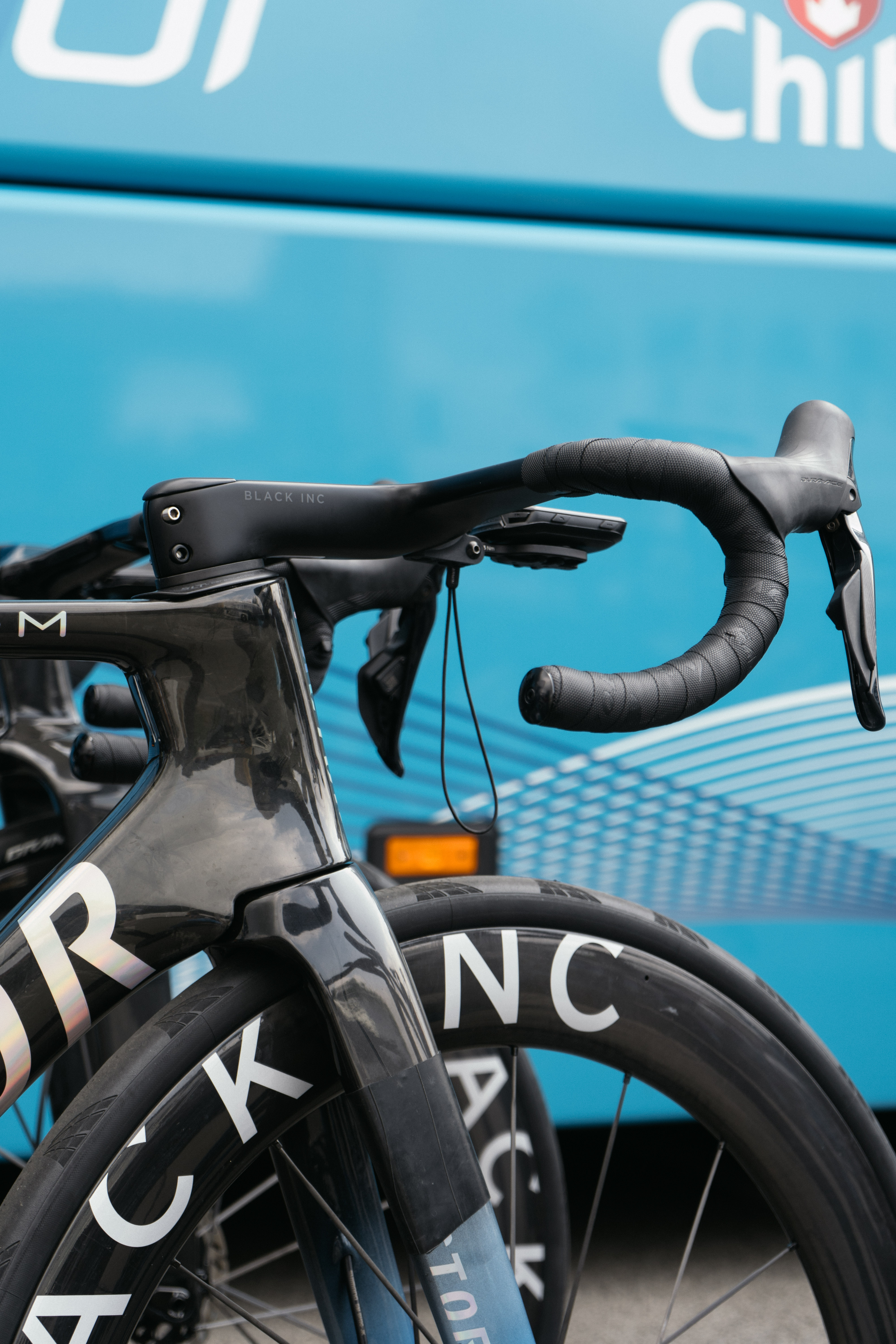
Perhaps distracted by the new machine, someone forgot to tether their Garmin before setting off.

Over at the Cofidis bus I got a look at the new, 13 speed Campagnolo Super Record Wireless groupset.
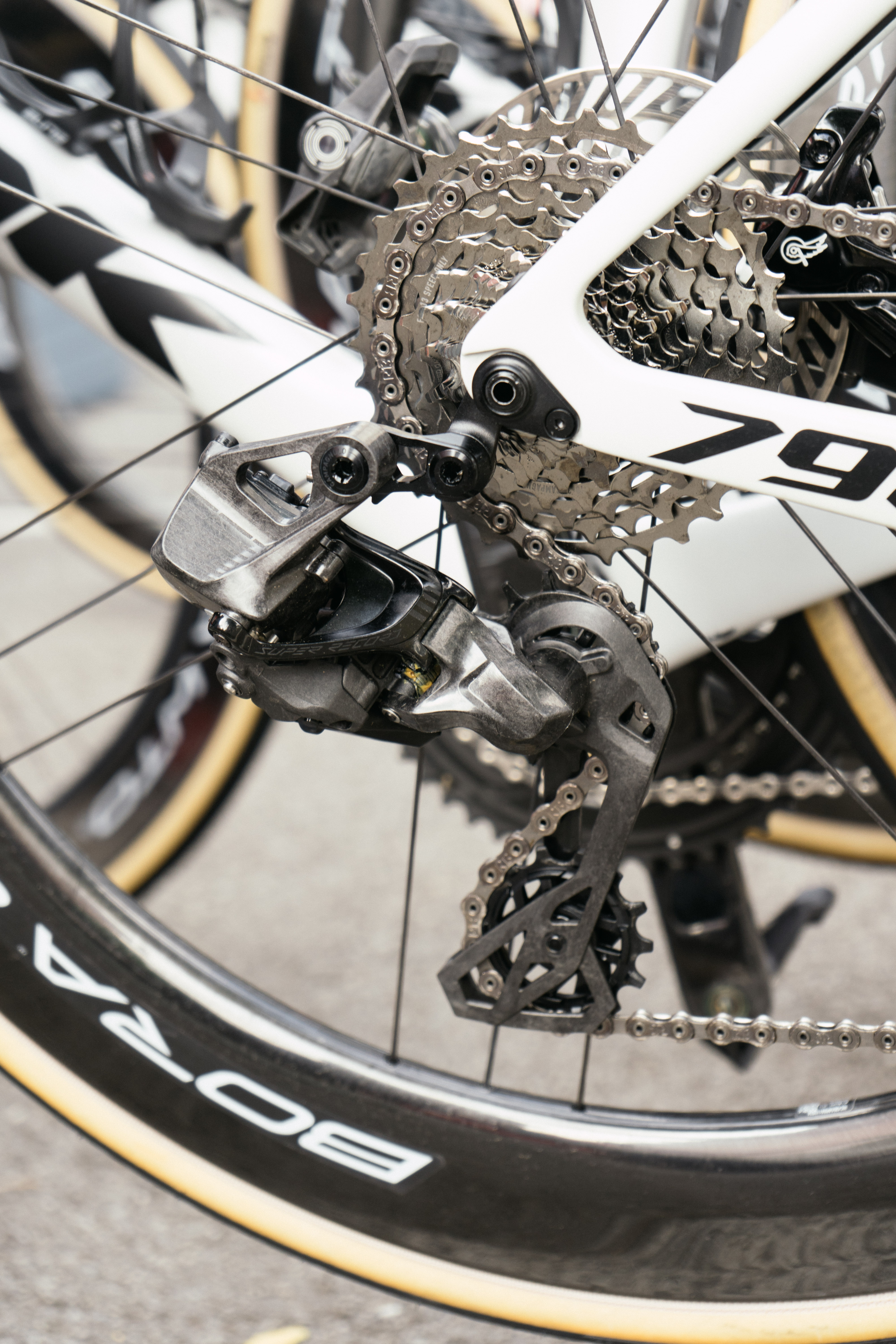
There’s quite a lot of rear derailleur here.
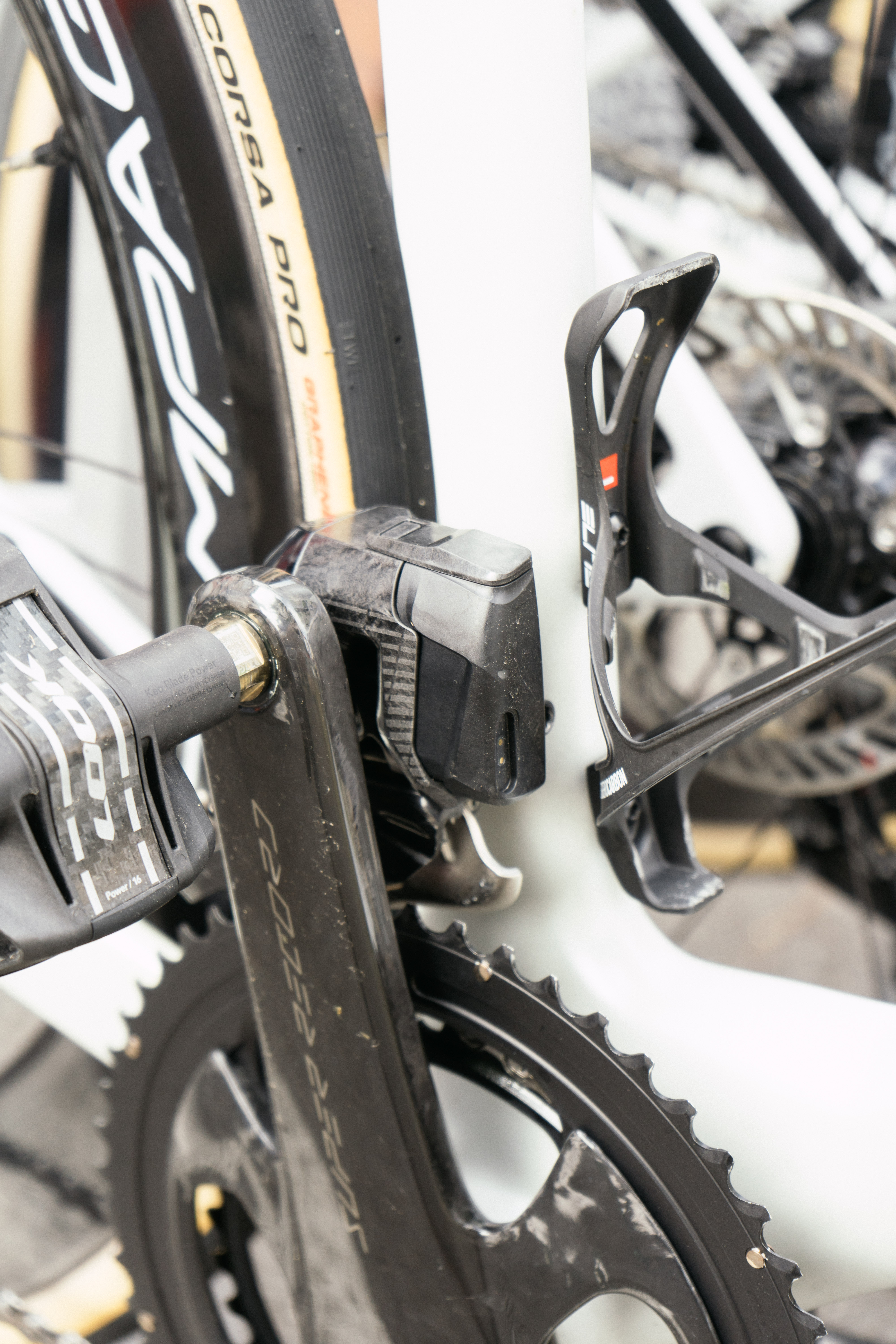
The front derailleur is slightly smaller, though still quite chunky.

Only one shifter button at the levers – You know what that means?

That’s right, the thumb shifter is back! It’s a little different from what it was before, but tech fans everywhere have rejoiced.
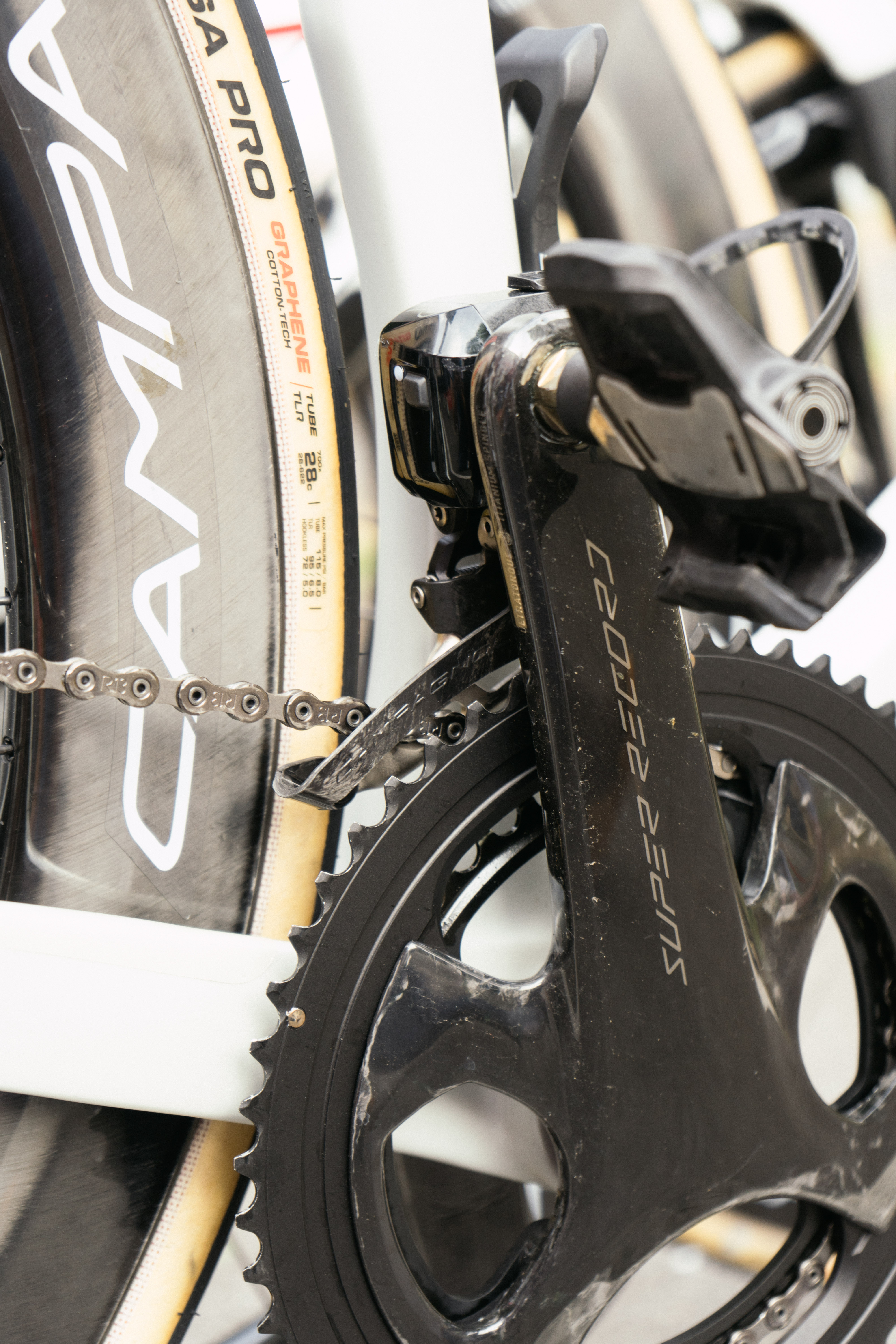
The outer plate of the front derailleur is carbon, while the inside is metal.

Count ’em if you like, but the ’13’ on the chain and the sprockets are a big clue.
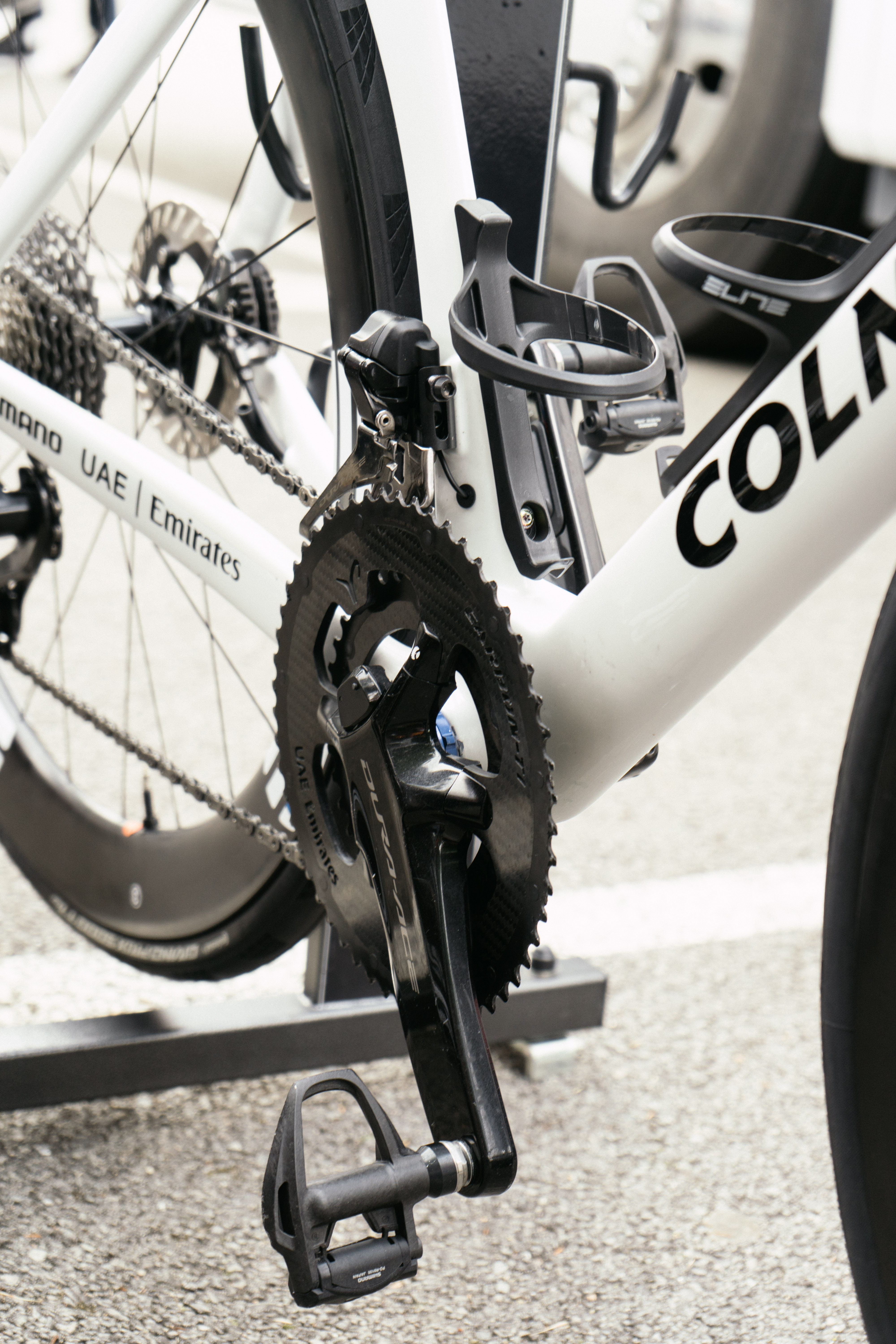
White Colnago with CarbonTi chainrings? It must be Tadej Pogačar’s bike.
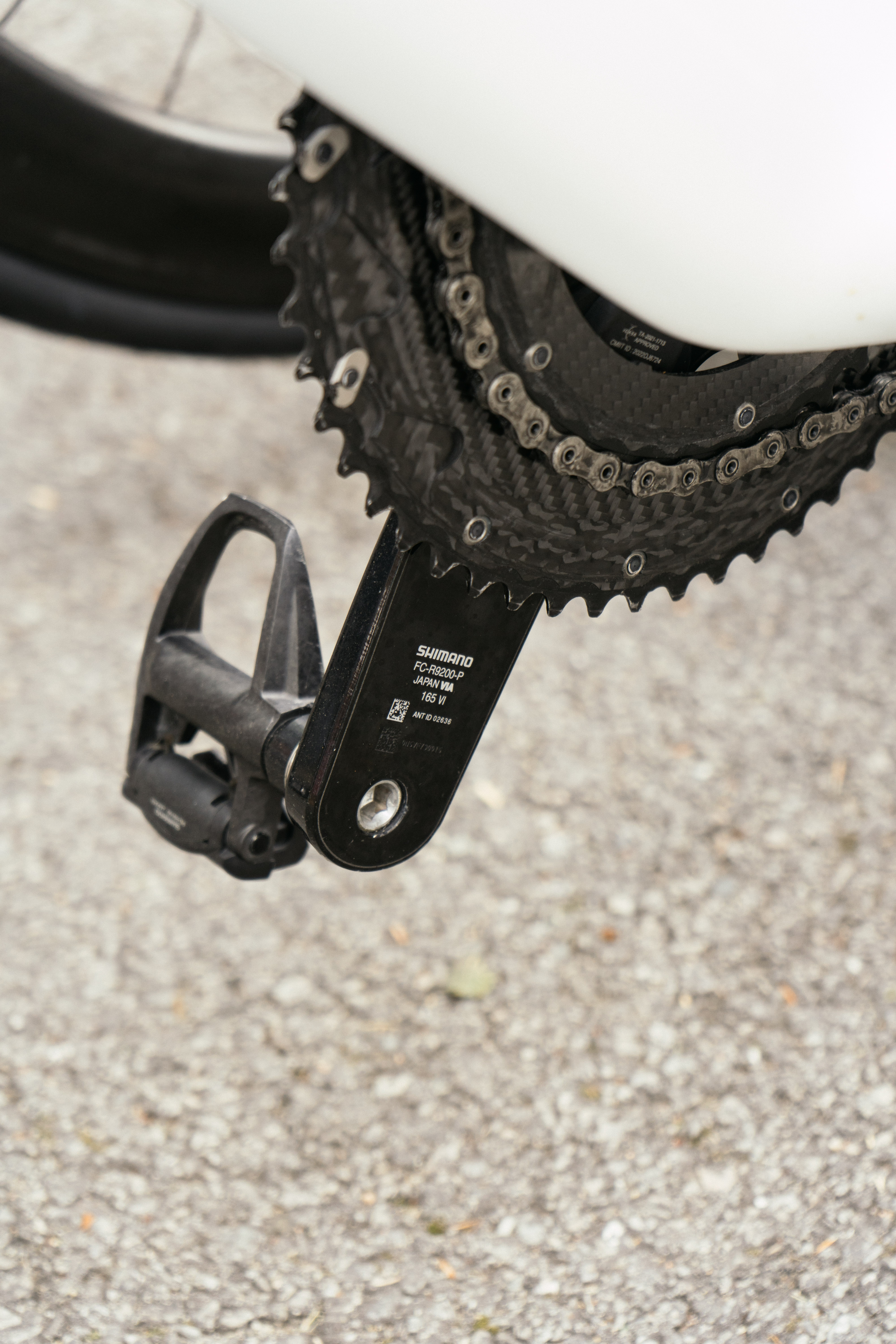
While his main rival Jonas Vingegaard seems to have settled on 160mm cranks, Pogačar opts for 165mm on his Shimano Dura-Ace groupset.
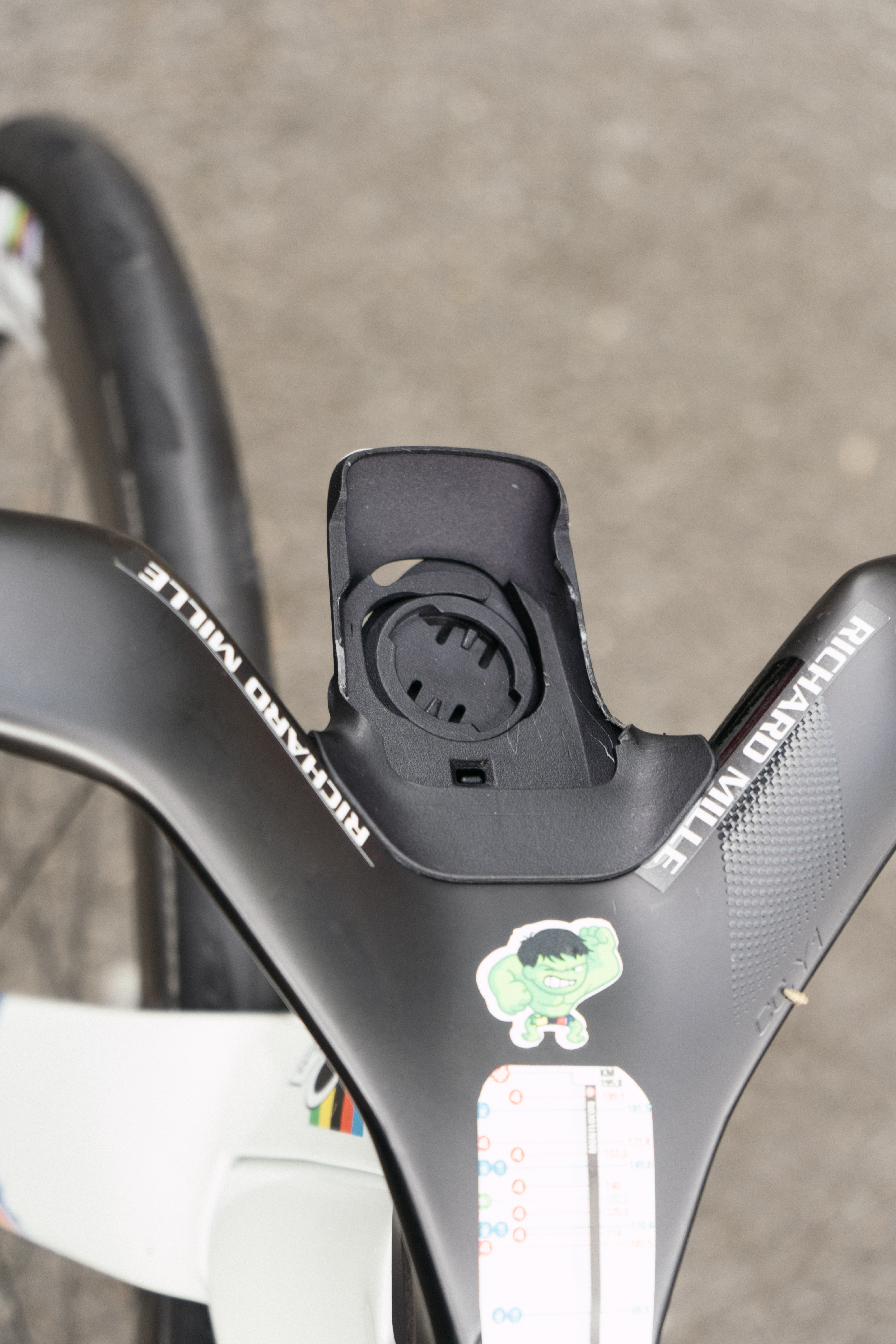
Pogačar’s Colnago Y1Rs was the only one with this 3D printed aero computer mount.
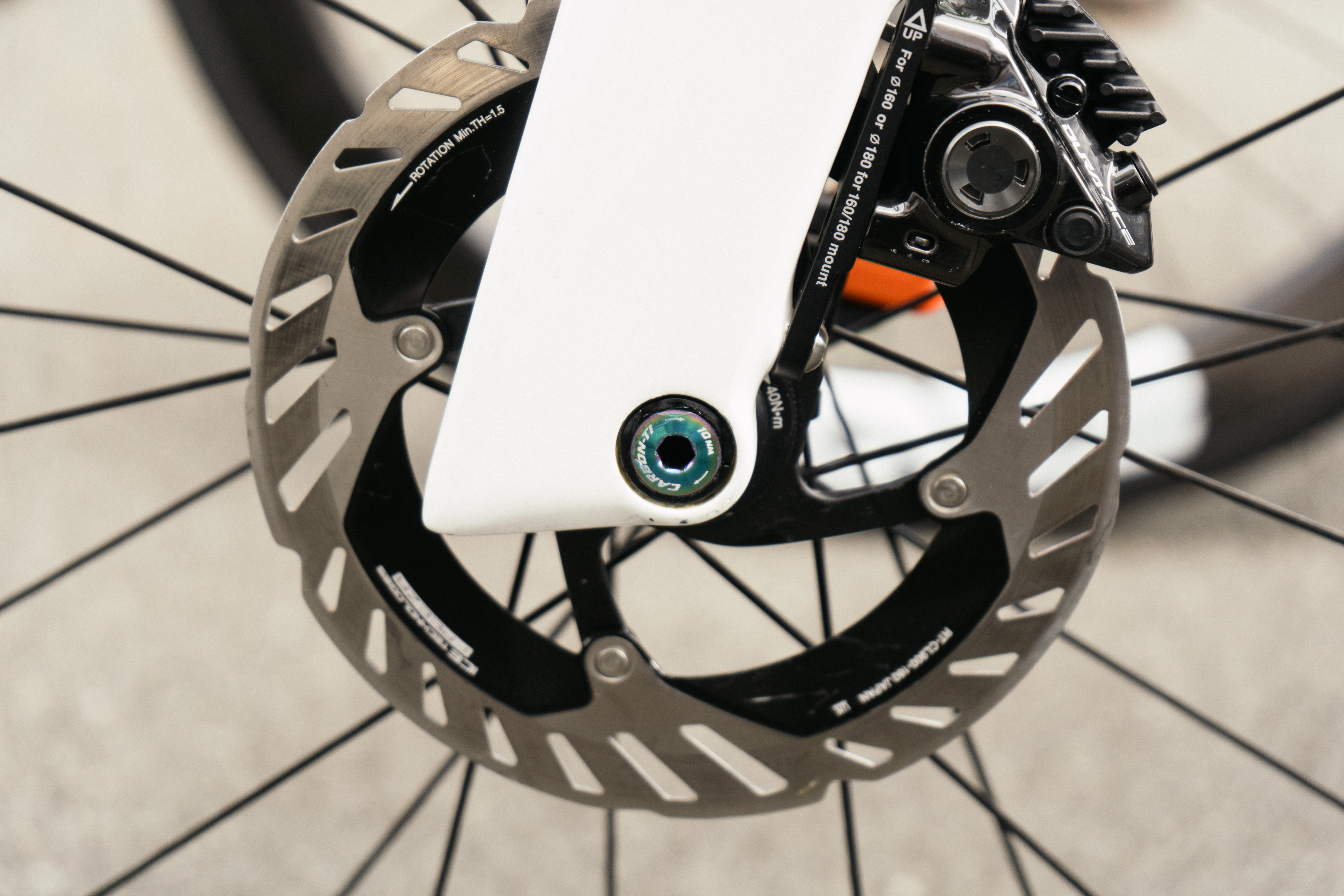
Rainbow thru-axles from CarbonTi for the world champion.
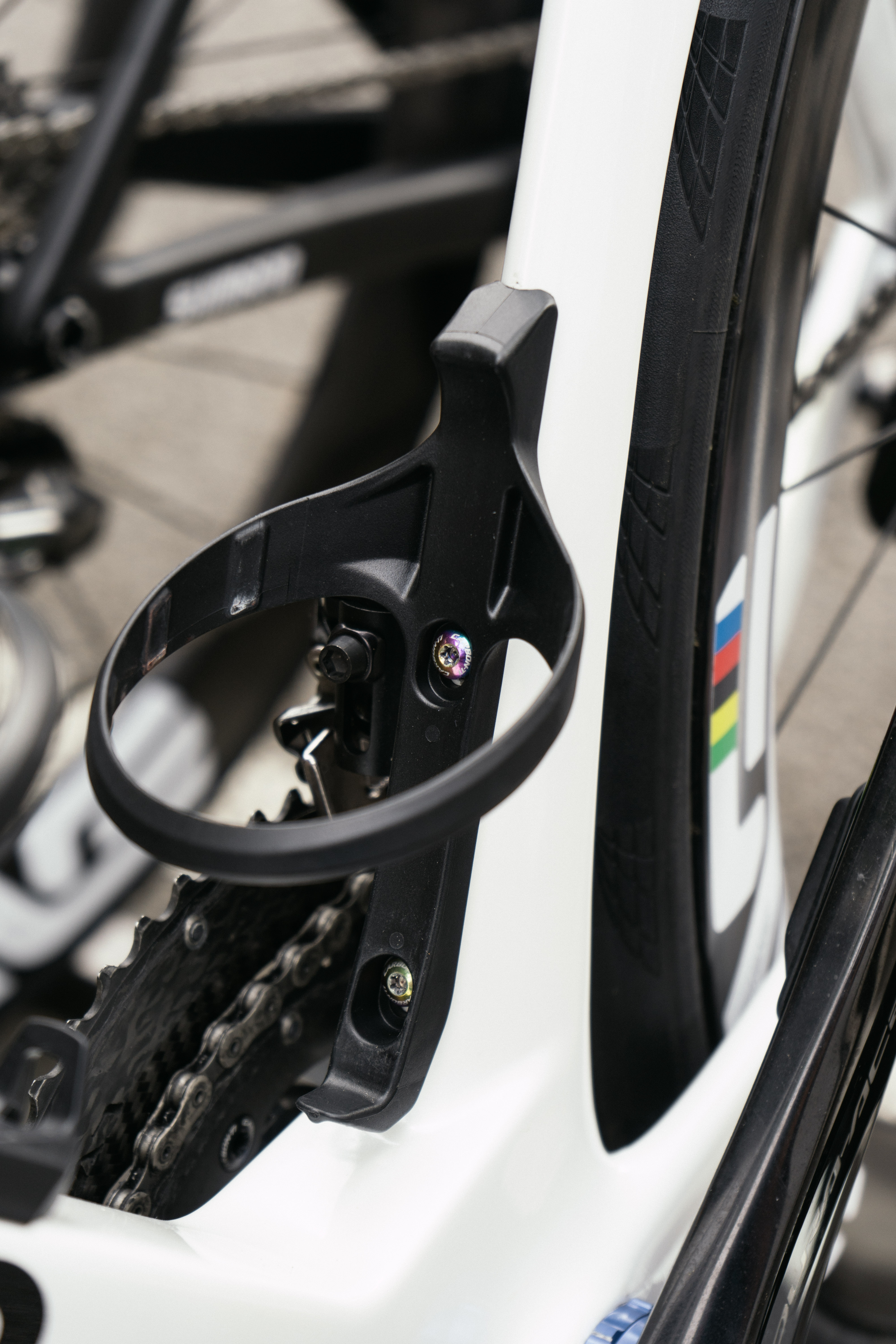
And rainbow bolts, too.

There’s no foam under his hoods anymore; that was just a hack for his first tilt at the cobbles of Roubaix.
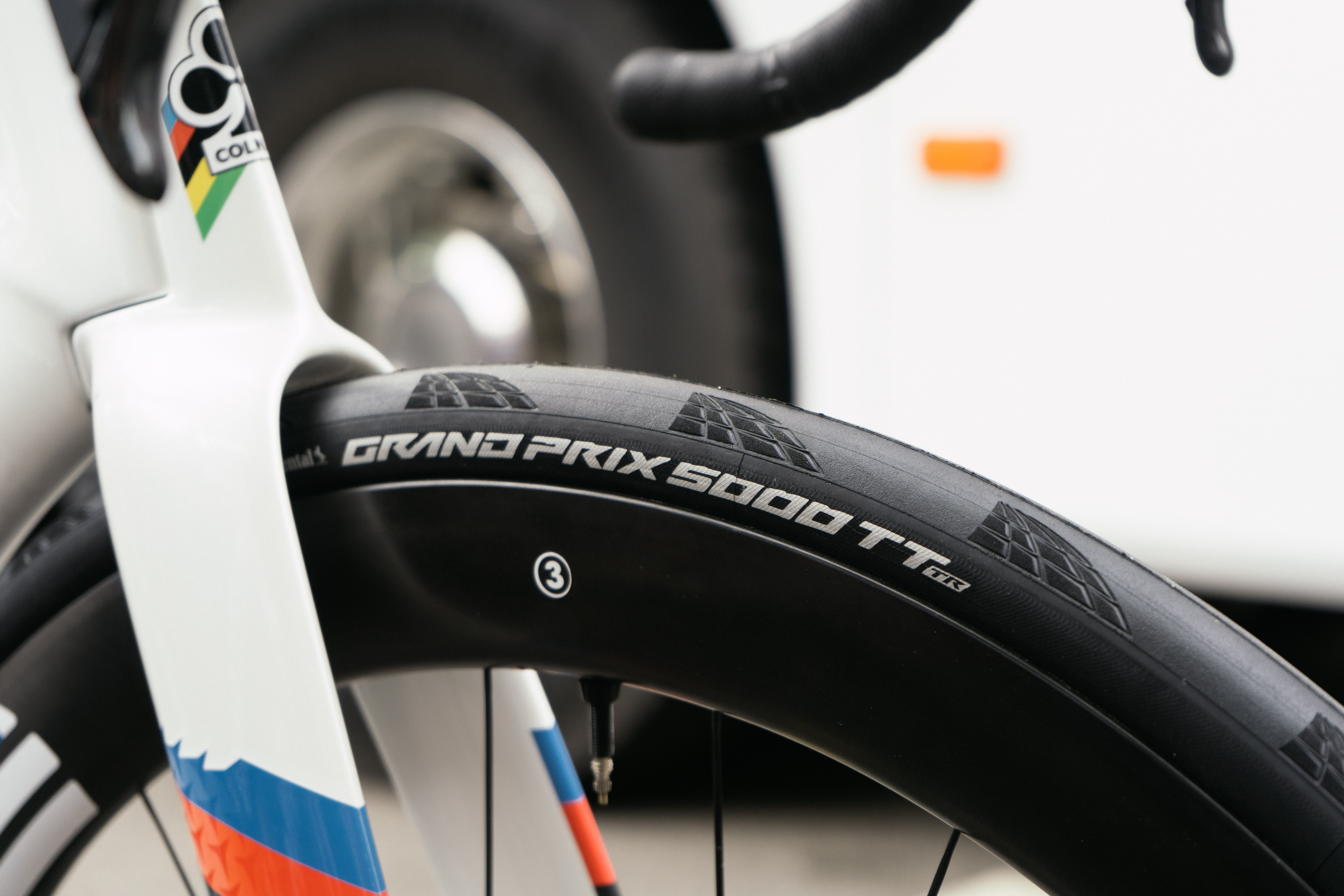
There’s certainly a growing trend for riders using time trial tyres at most road races now.
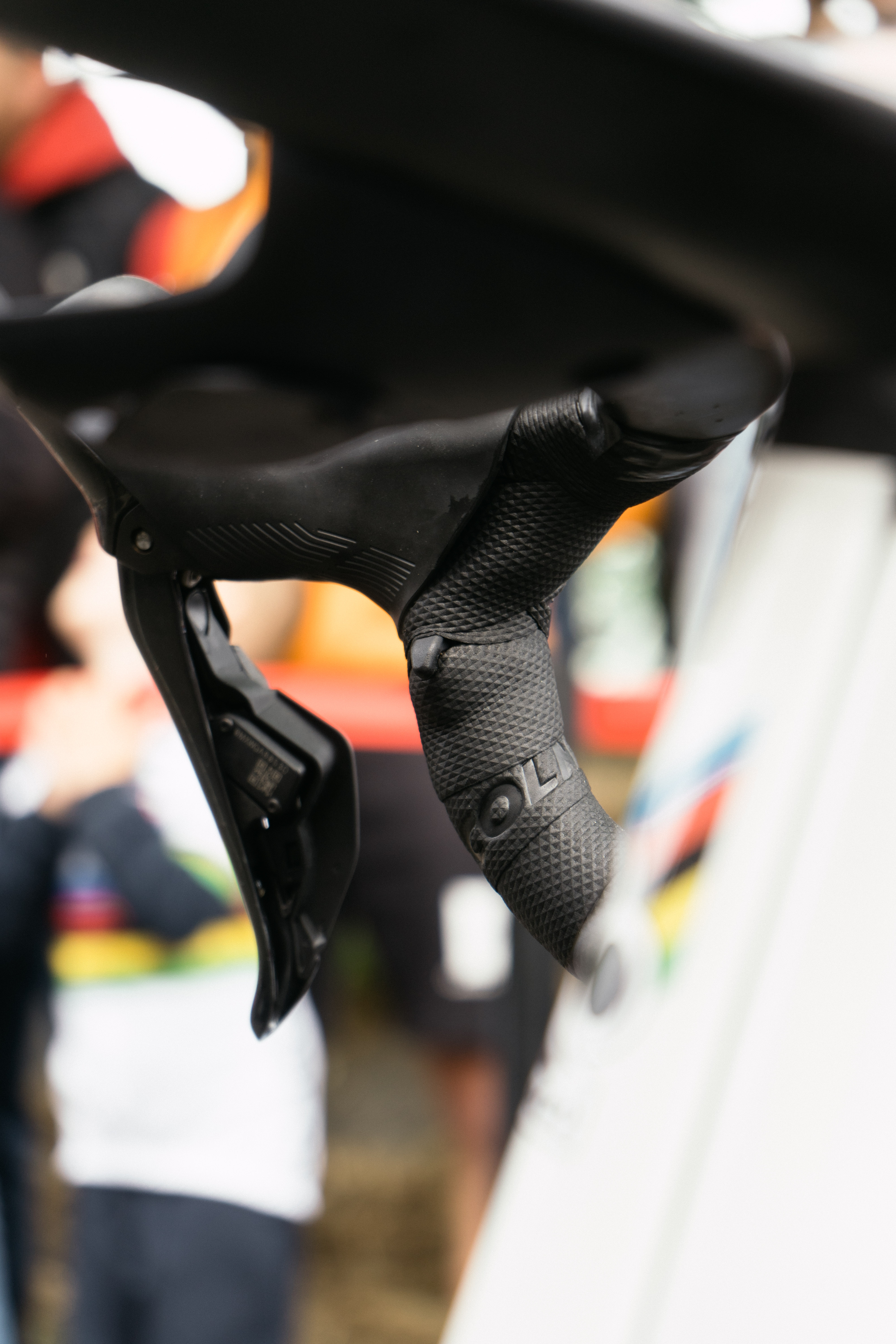
Satellite sprint shifters under the hoods, which probably came in handy on stage 1.
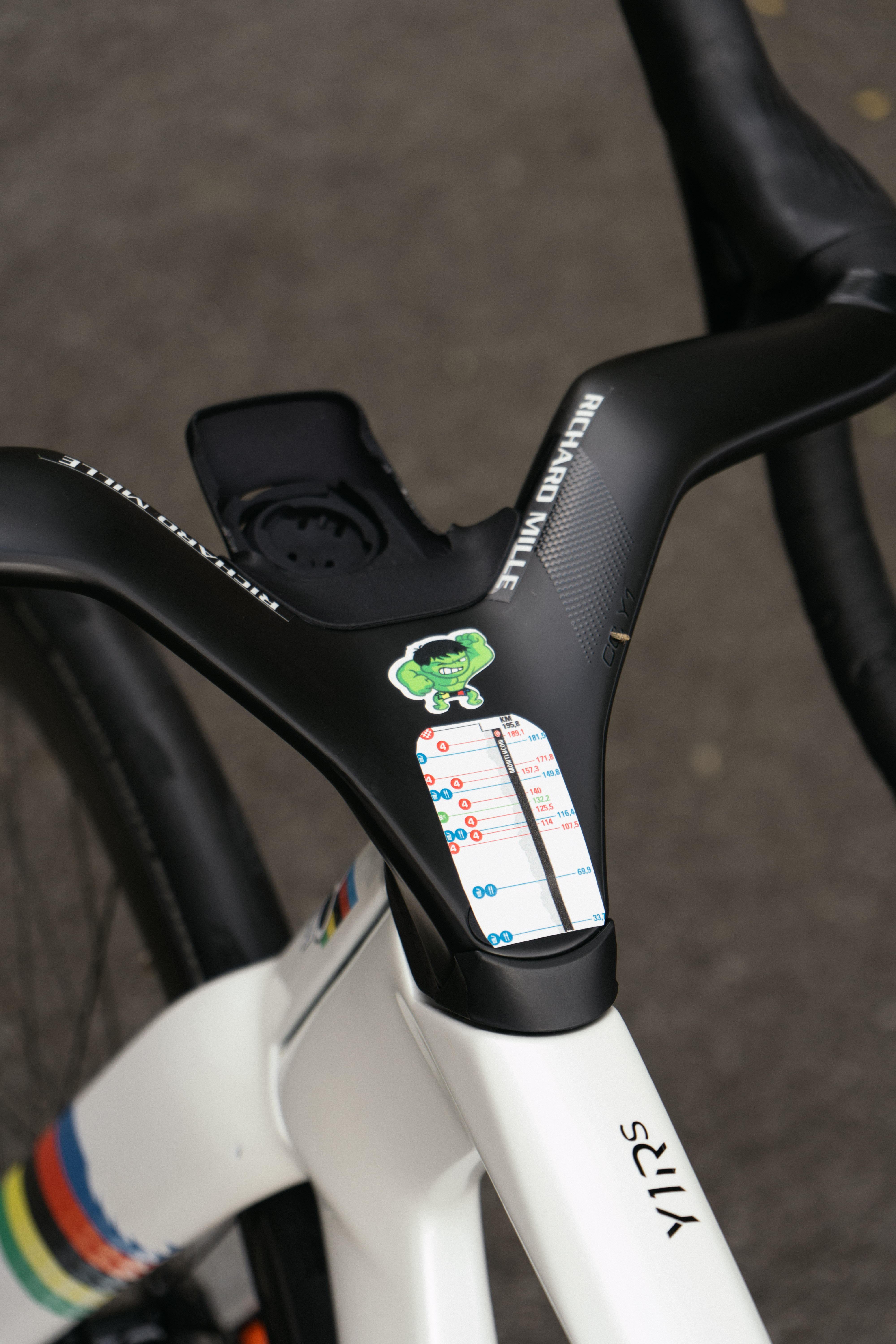
As ever, the hulk sticker is in attendance.

This is the first time I’ve seen the interface between fork and stem on the Y1Rs, and it looks like the cockpit slots onto a grooved steerer, meaning there is less likelihood of setting the bars up wonky.
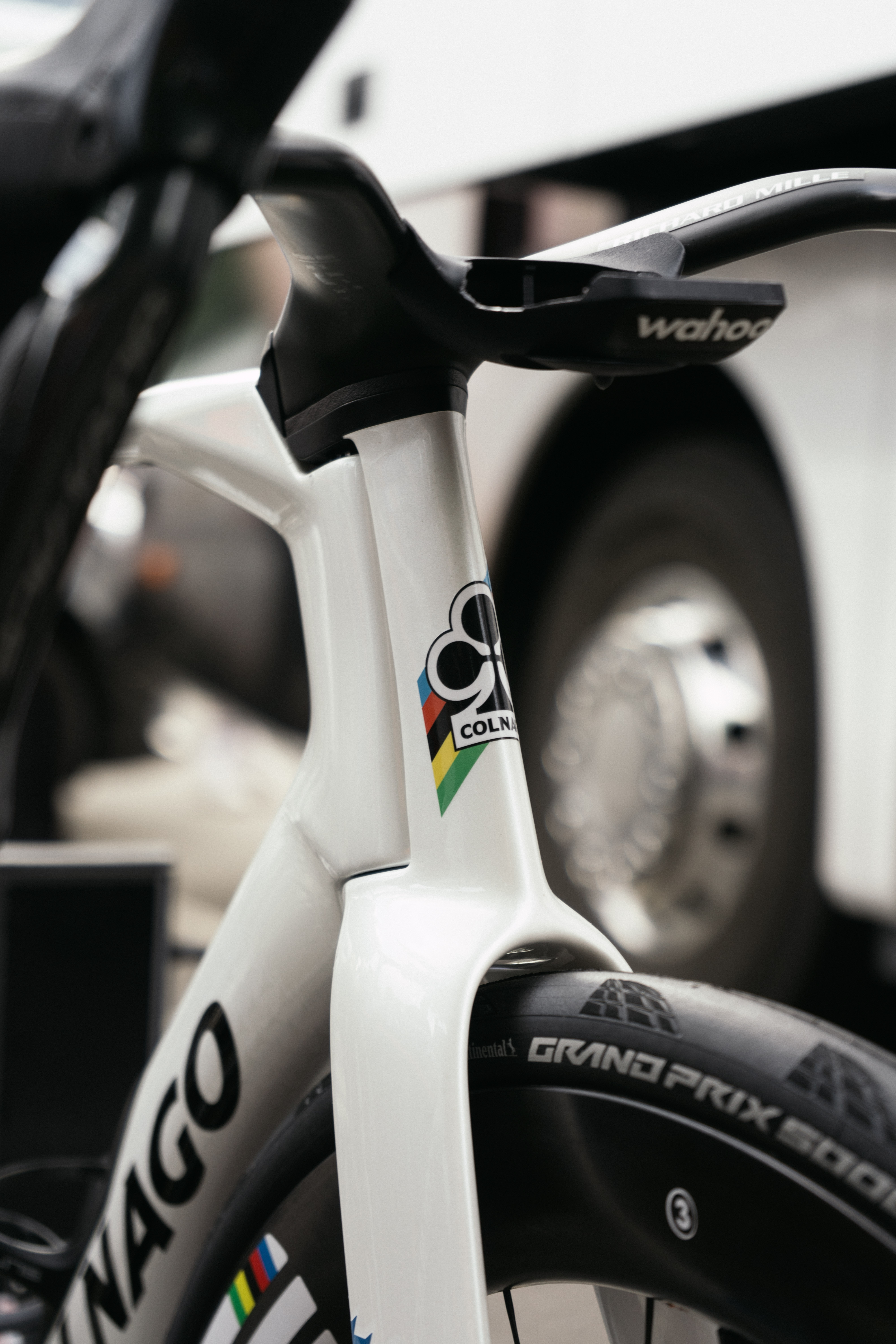
As with many aero bikes now, it’s a bayonet fork front end.
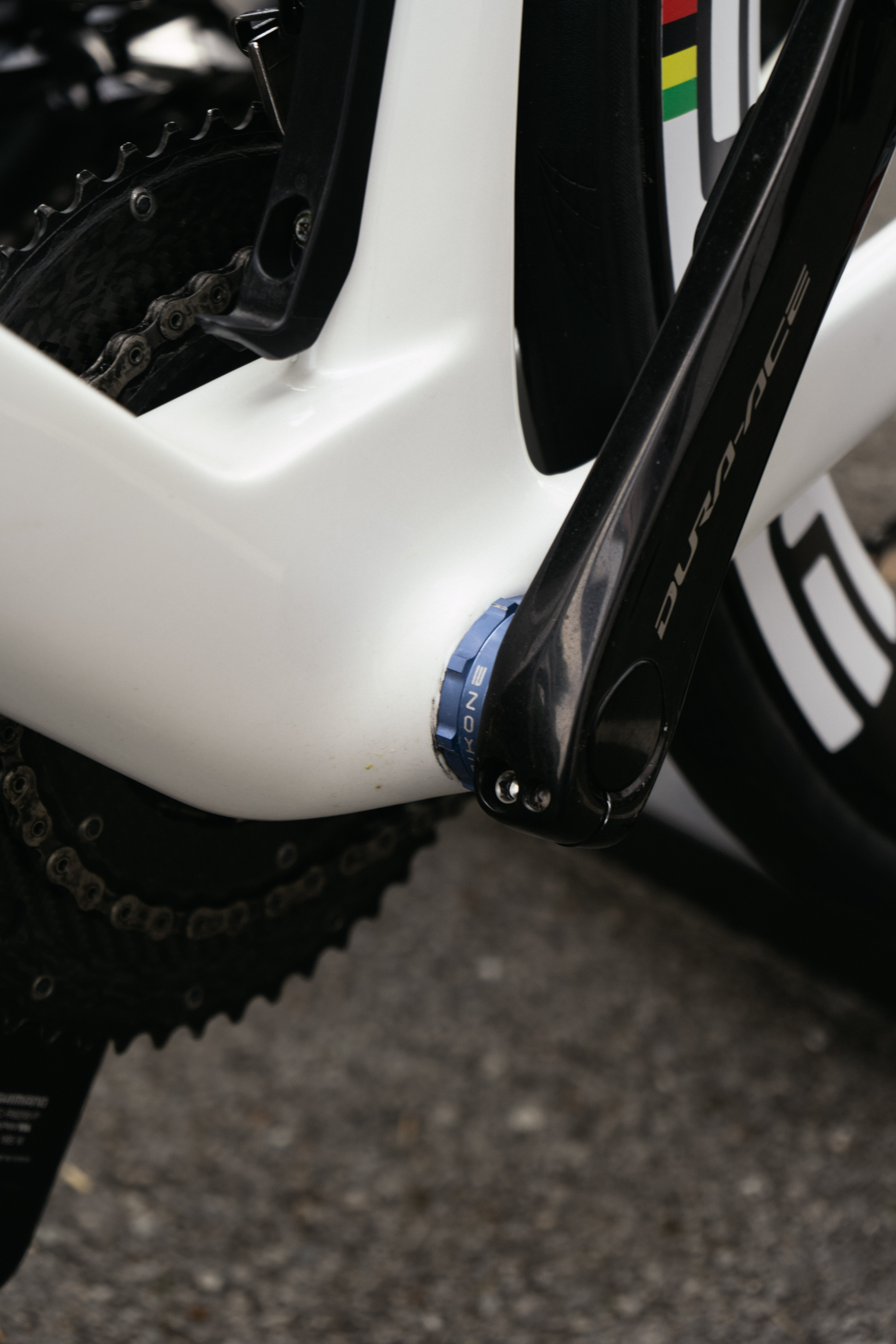
Ceramic bearings in the bottom bracket should come as no surprise.

Other riders on the Y1Rs had this standard computer mount. Still neat, but less trick.
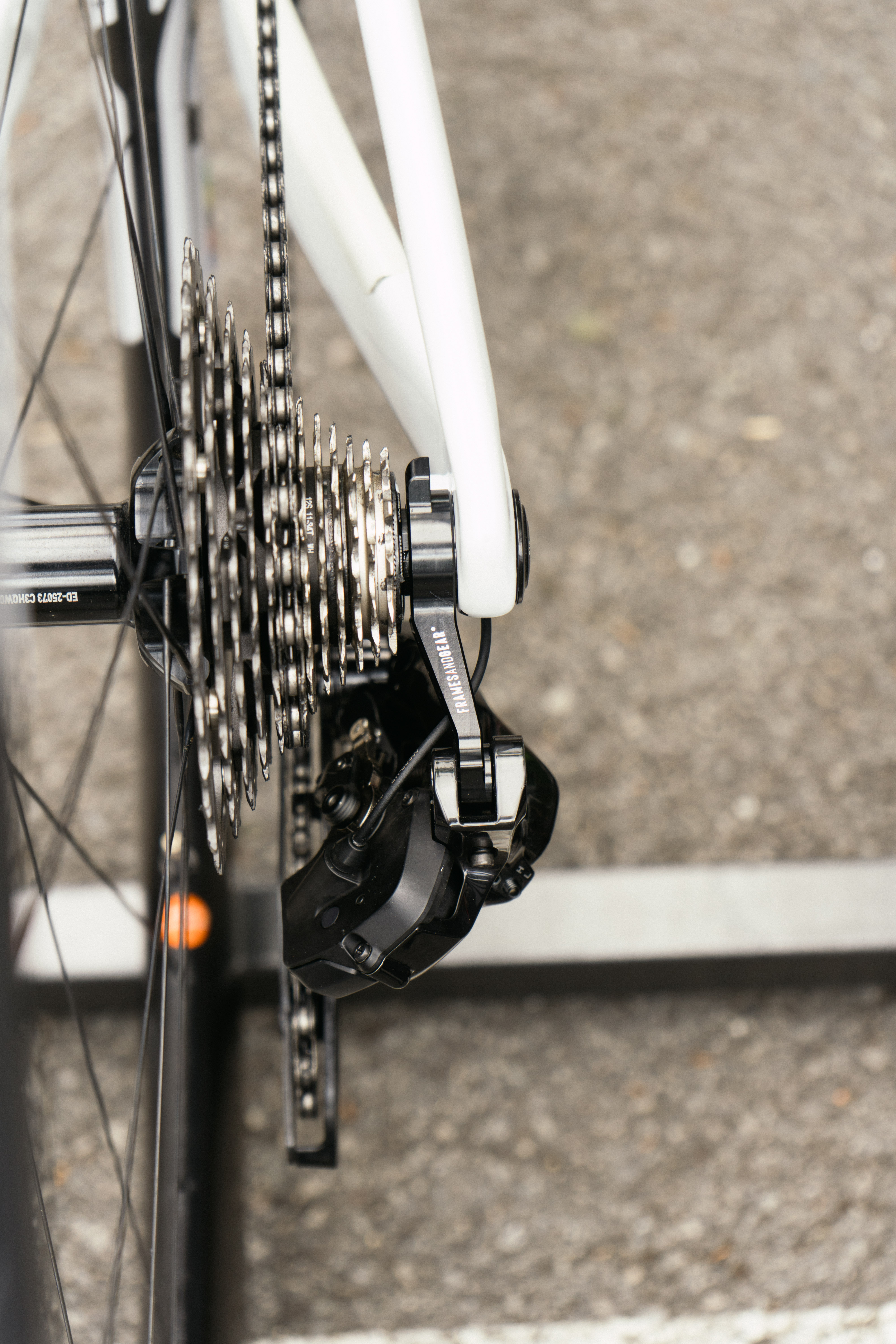
An aftermarket, direct mount derailleur hanger from Framesandgear is common across all of Pogačar’s bikes.

We’ve seen aero hacks for race transponders before, but this is a new one.

It appears to mount under the fork, and provides a platform for the transponder to be zip tied to.
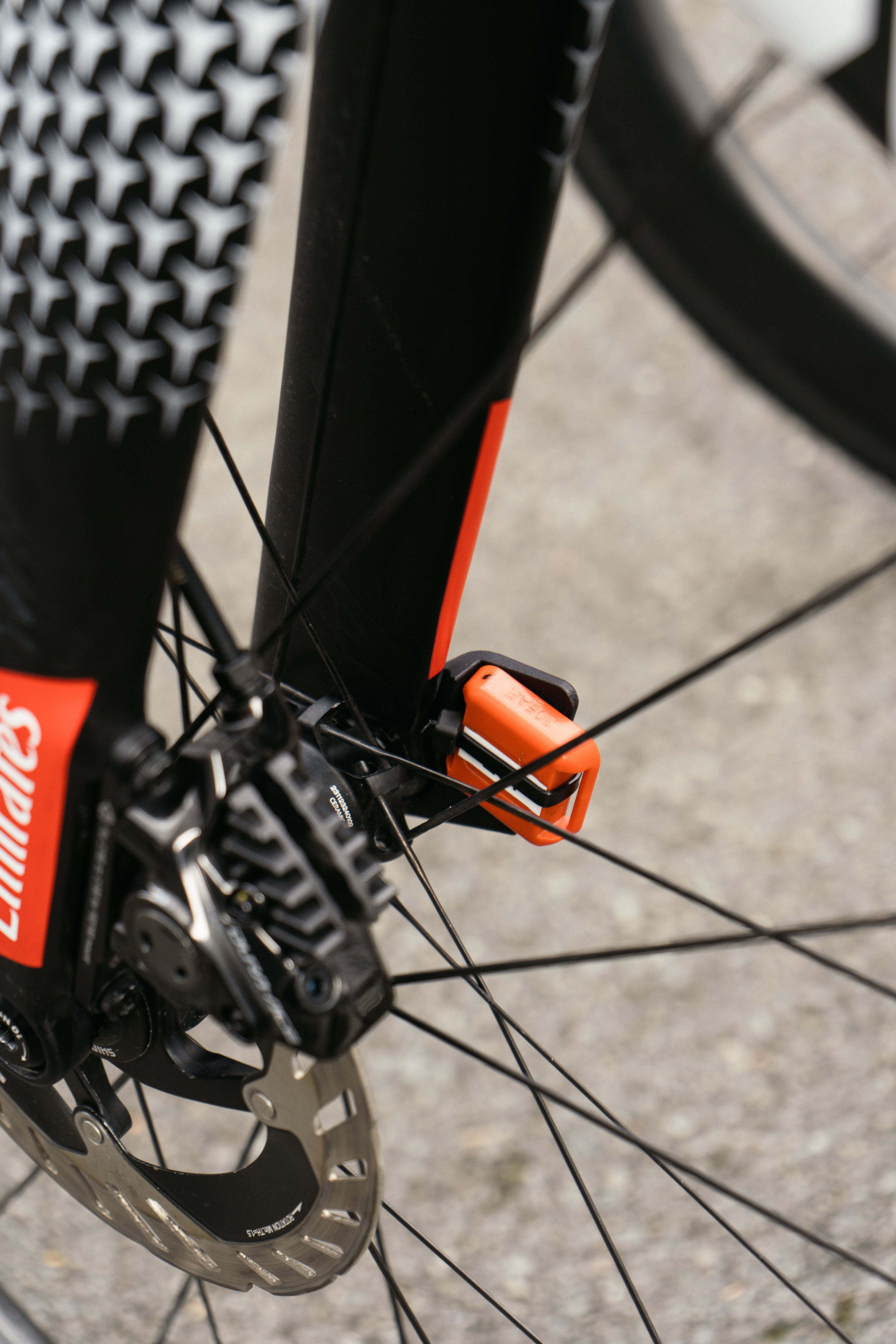
Here it is from the reverse. Neat.
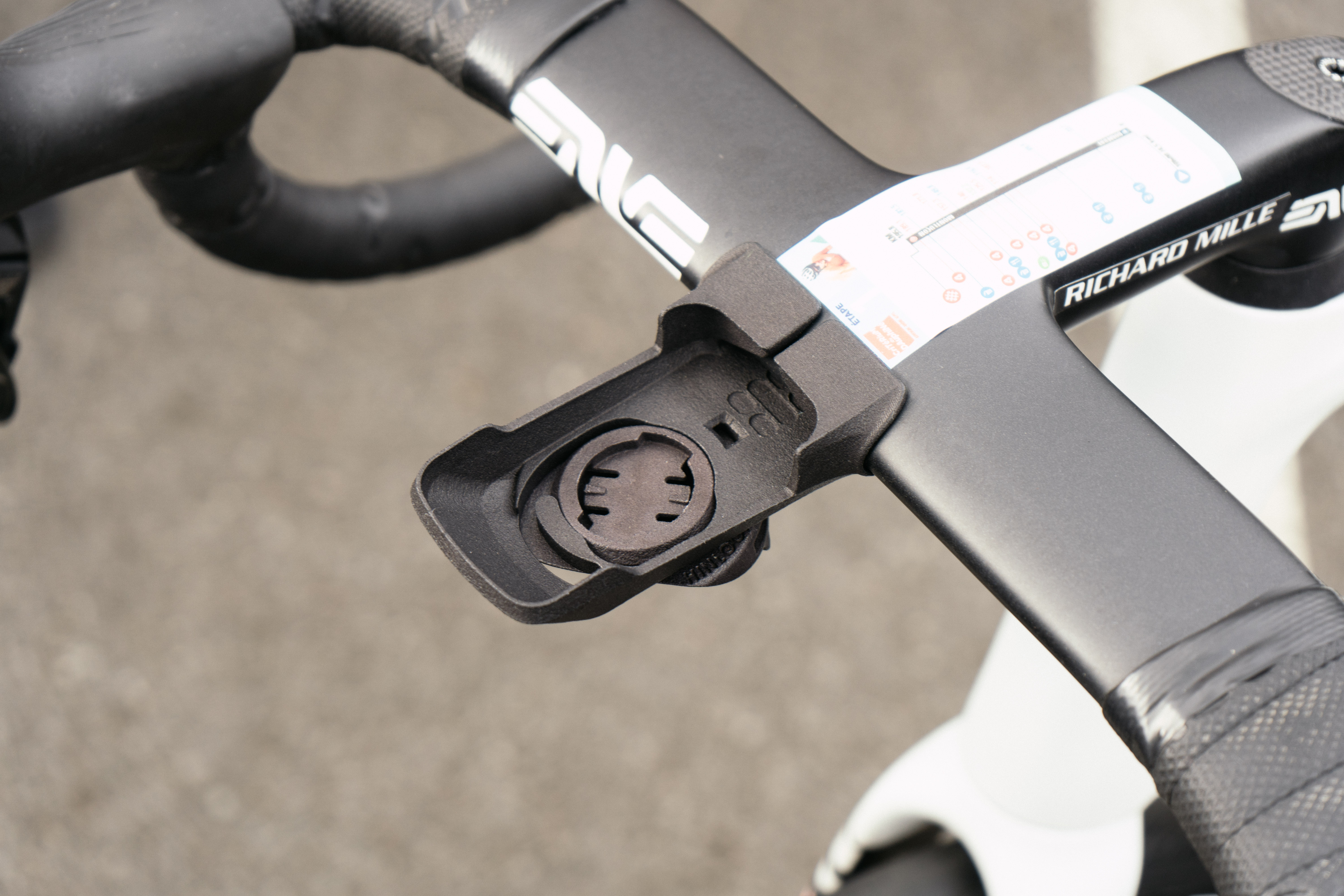
Riders on the new V5Rs also had access to a 3D printed mount for their Wahoo computers. It’s made by the Dutch brand Hinloopen.

I’m not entirely sure these hoods are strictly legal at this angle, but luckily I’m not a commissaire.

Every gram counts, so aftermarket carbon top caps were fitted to many of the V5Rs cockpits.

Not to be outdone by his main rivals, Remco Evenepoel can now also be seen sporting CarbonTi chainrings. He does not, however, have his own logo laser cut into them as yet.

Yes, this is what looks like a plain black hub, and it is just that, but it’s a clue. For the last while, Specialized-sponsored riders have tended to use the silver-hubbed Roval Rapide CLX II Team wheels, but Evenepoel isn’t doing that here.
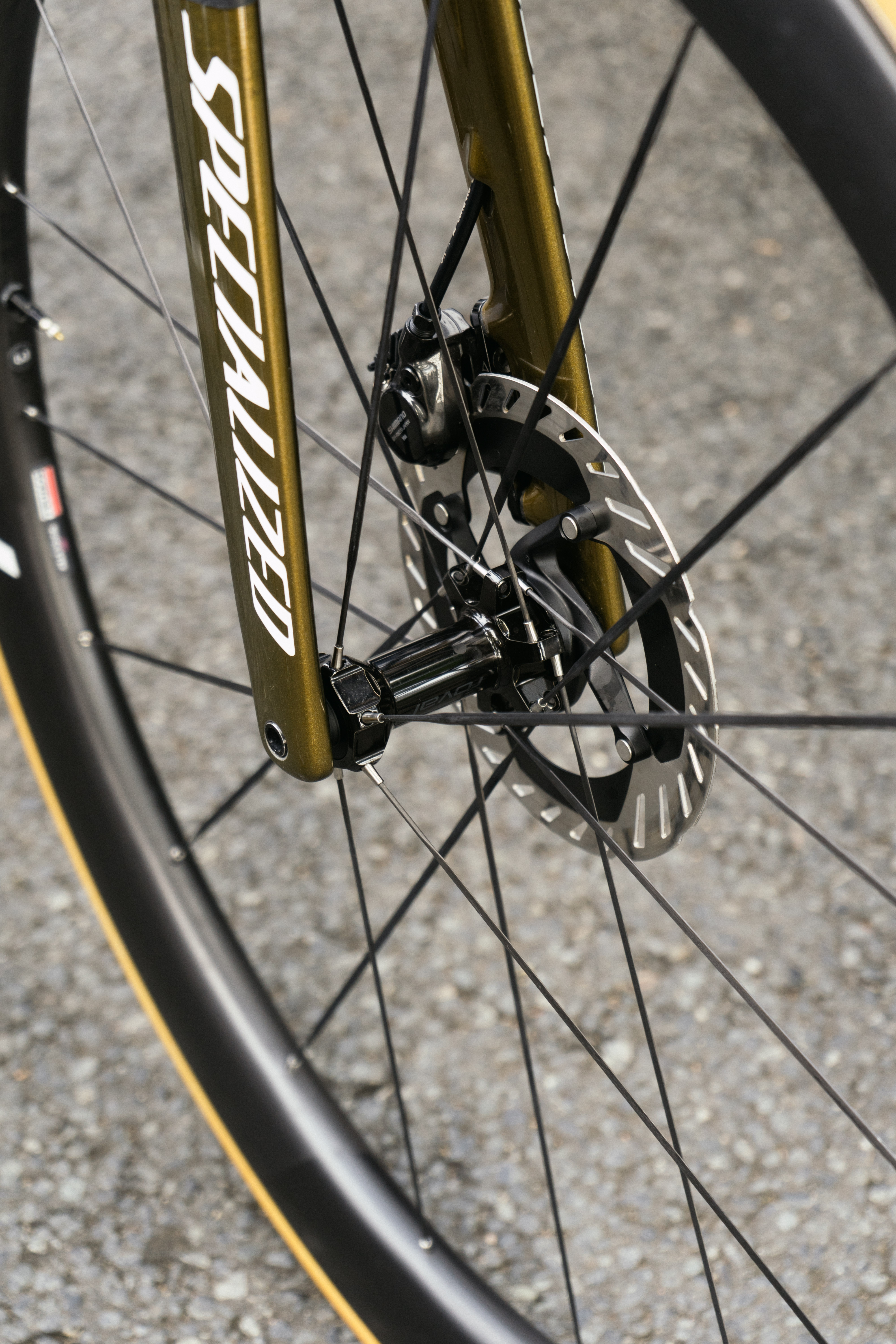
It’s a new wheel, or wheels as it is thankfully a pair. The new Roval Rapide CLX III to be precise. Details are thin on the ground, but expect a wider internal width and claimed aero improvements. The spokes might also be slightly deeper blades, but it’s hard to tell.
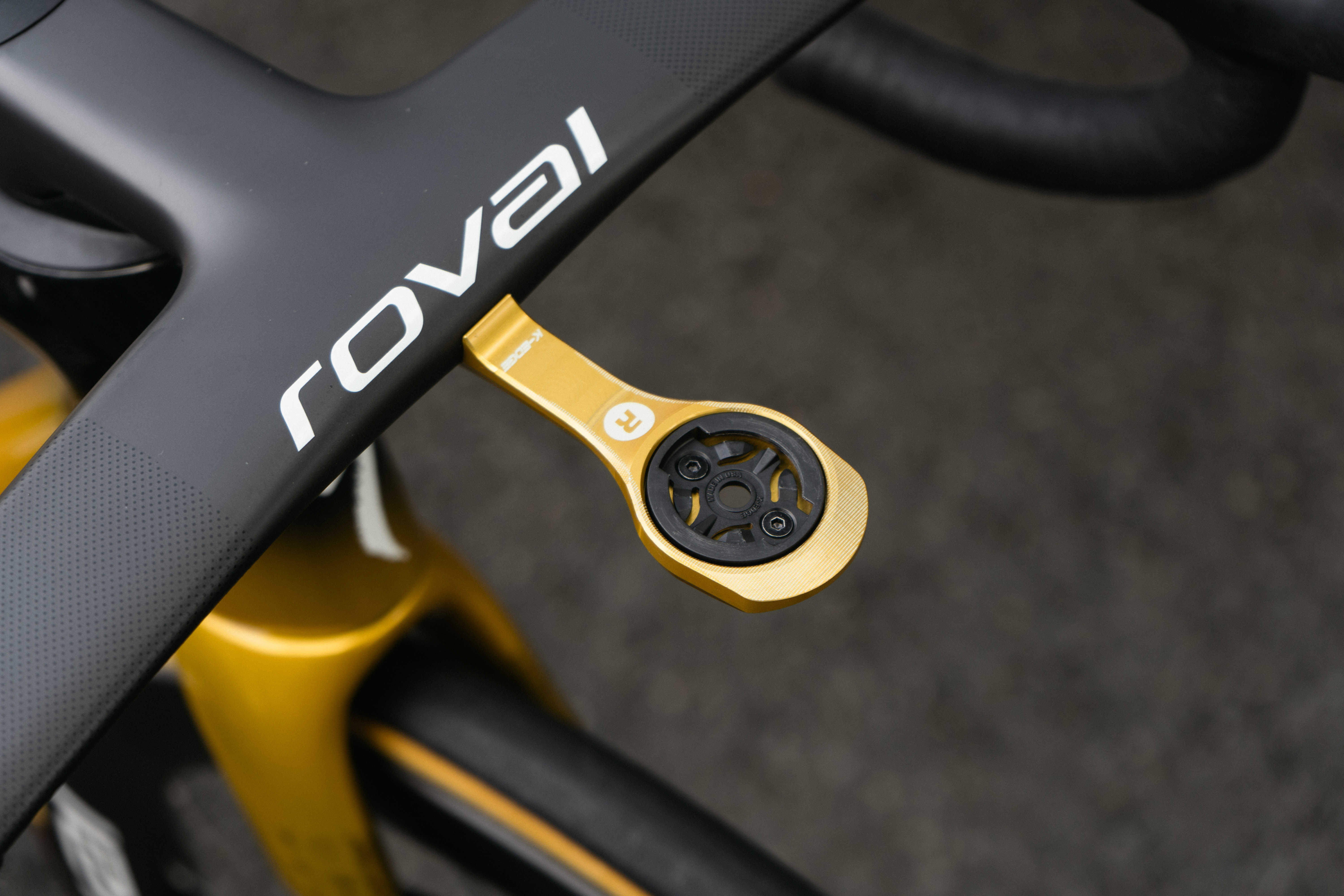
A gold K-Edge computer mount for the Olympic champion.

And a gold saddle chassis too!
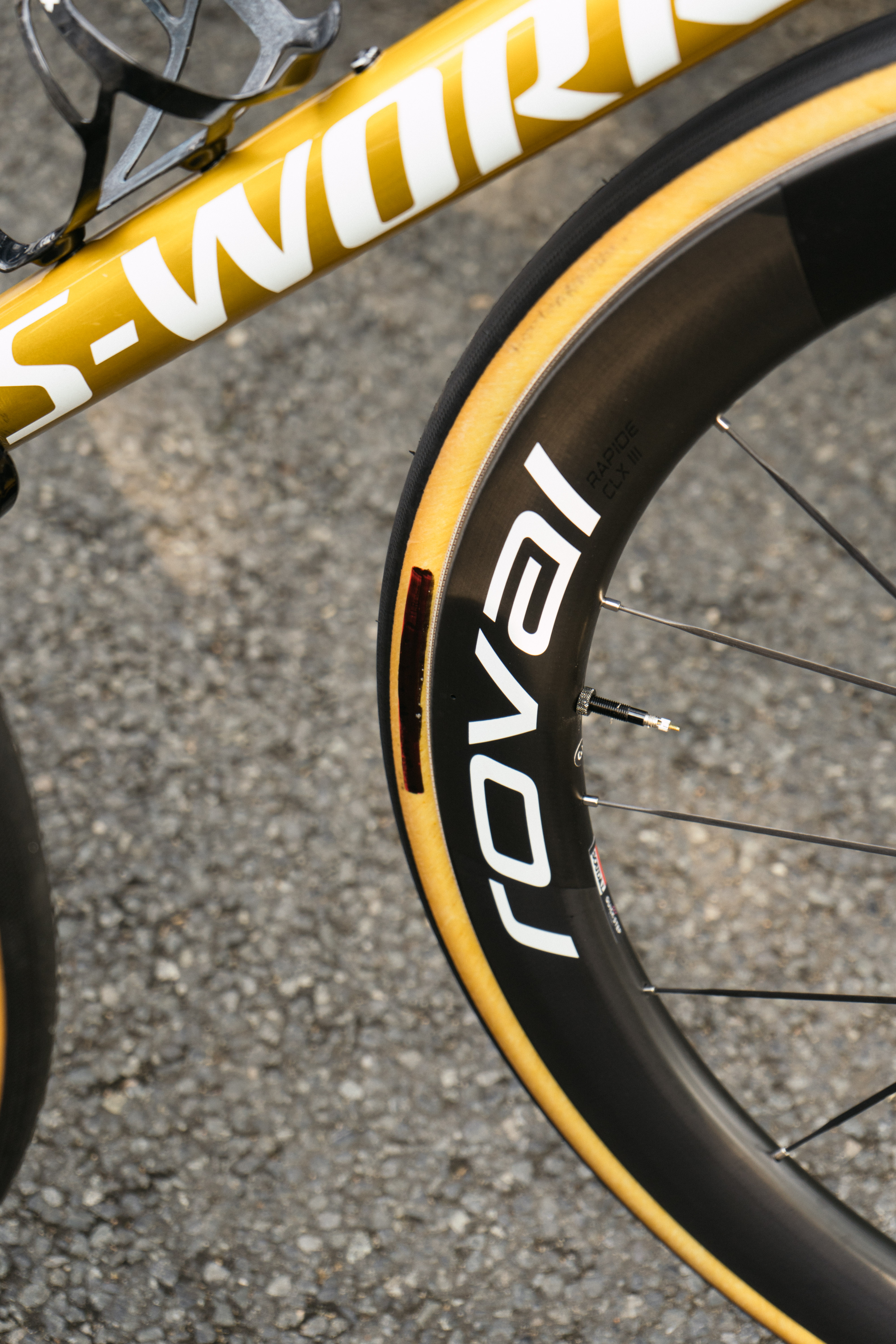
These tyres have been blanked out, but they are an unreleased new tubeless cotton race tyre from Specialized in a 30c width.
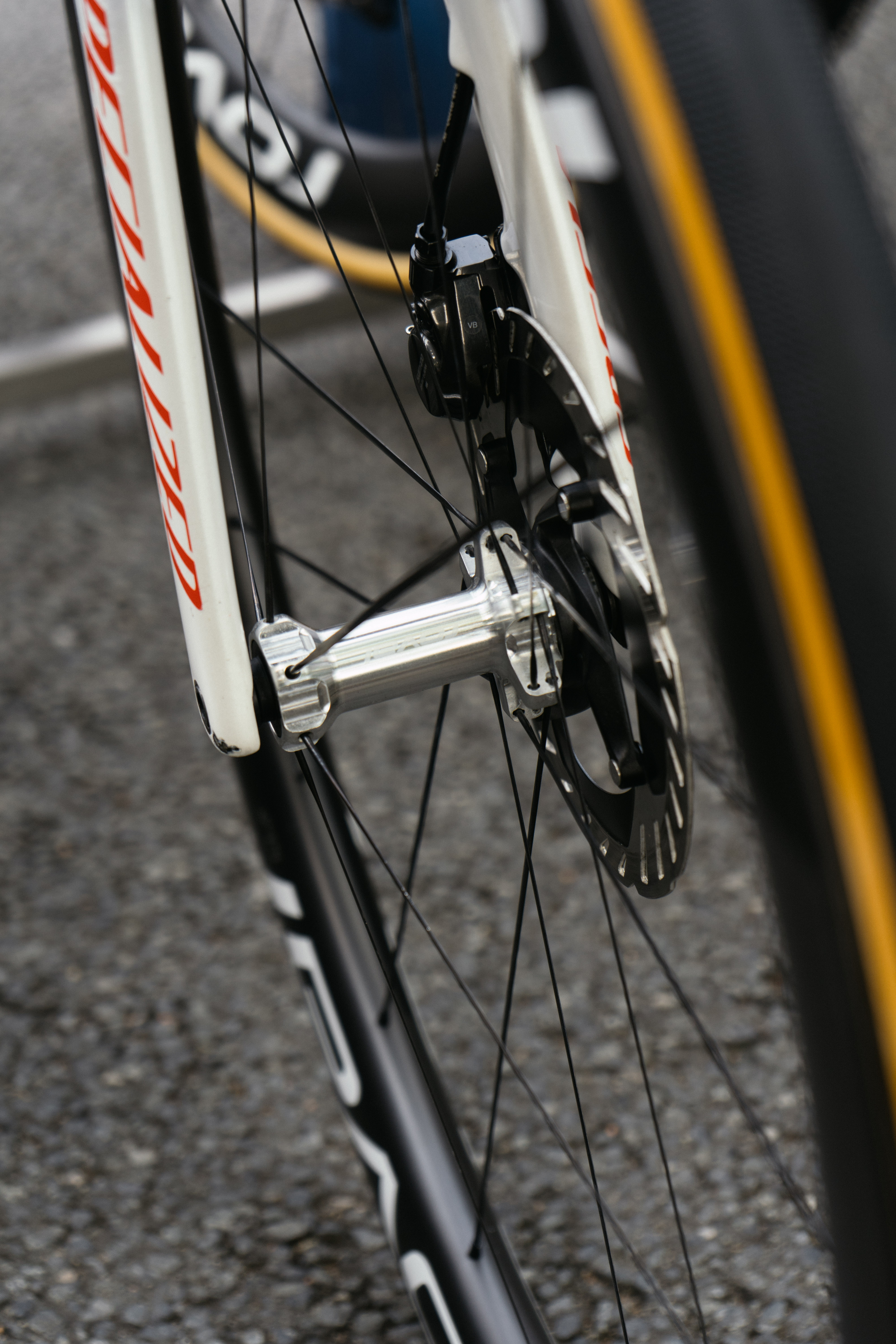
Other Soudal-Quick Step riders were still using the CLX II Team wheels.
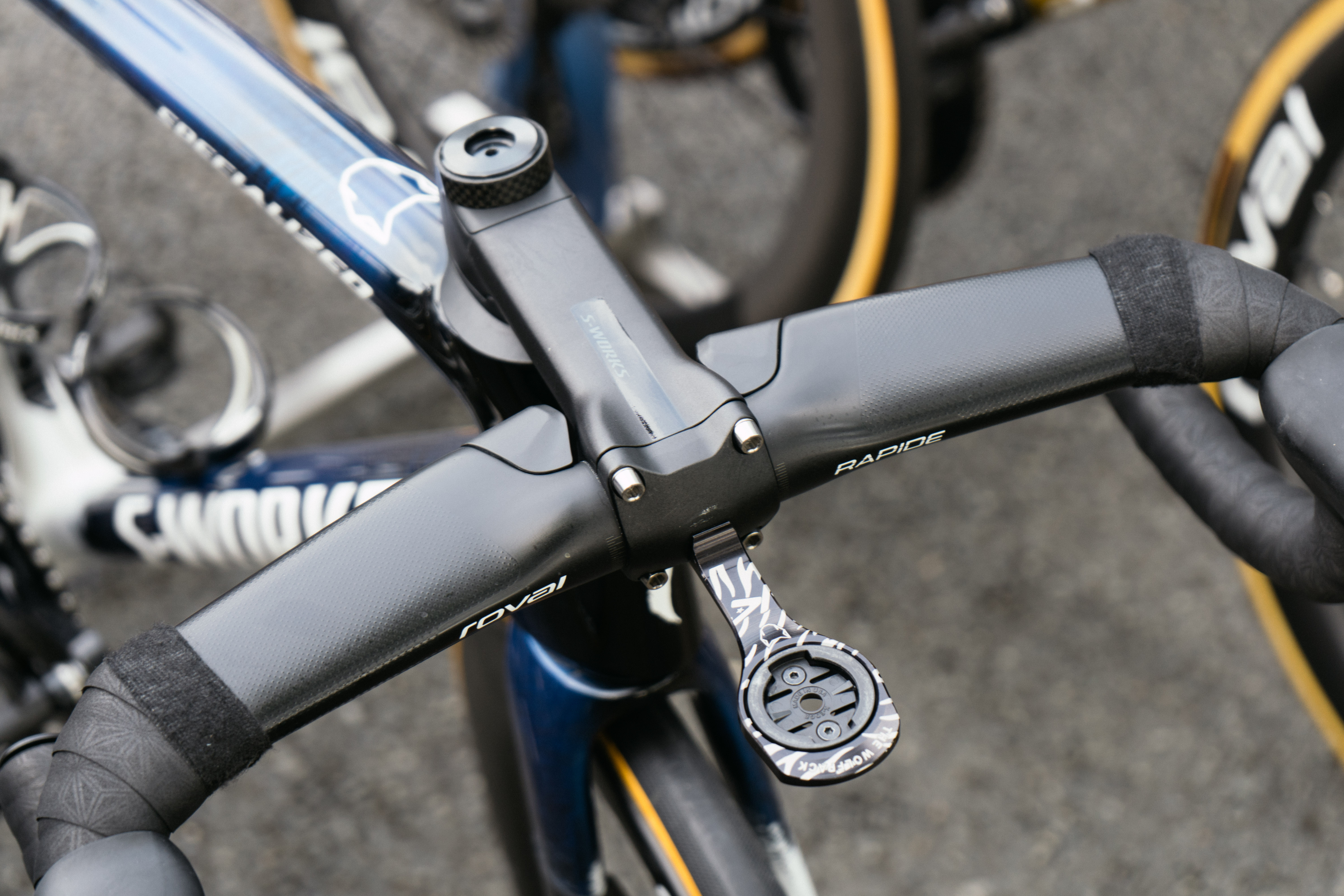
And many, despite the well established wattage penalty, were still using separate bars and stems. This is probably due to wanting to run narrower bars than Roval offers in the Rapide cockpit, which in all likelihood may well be faster overall.
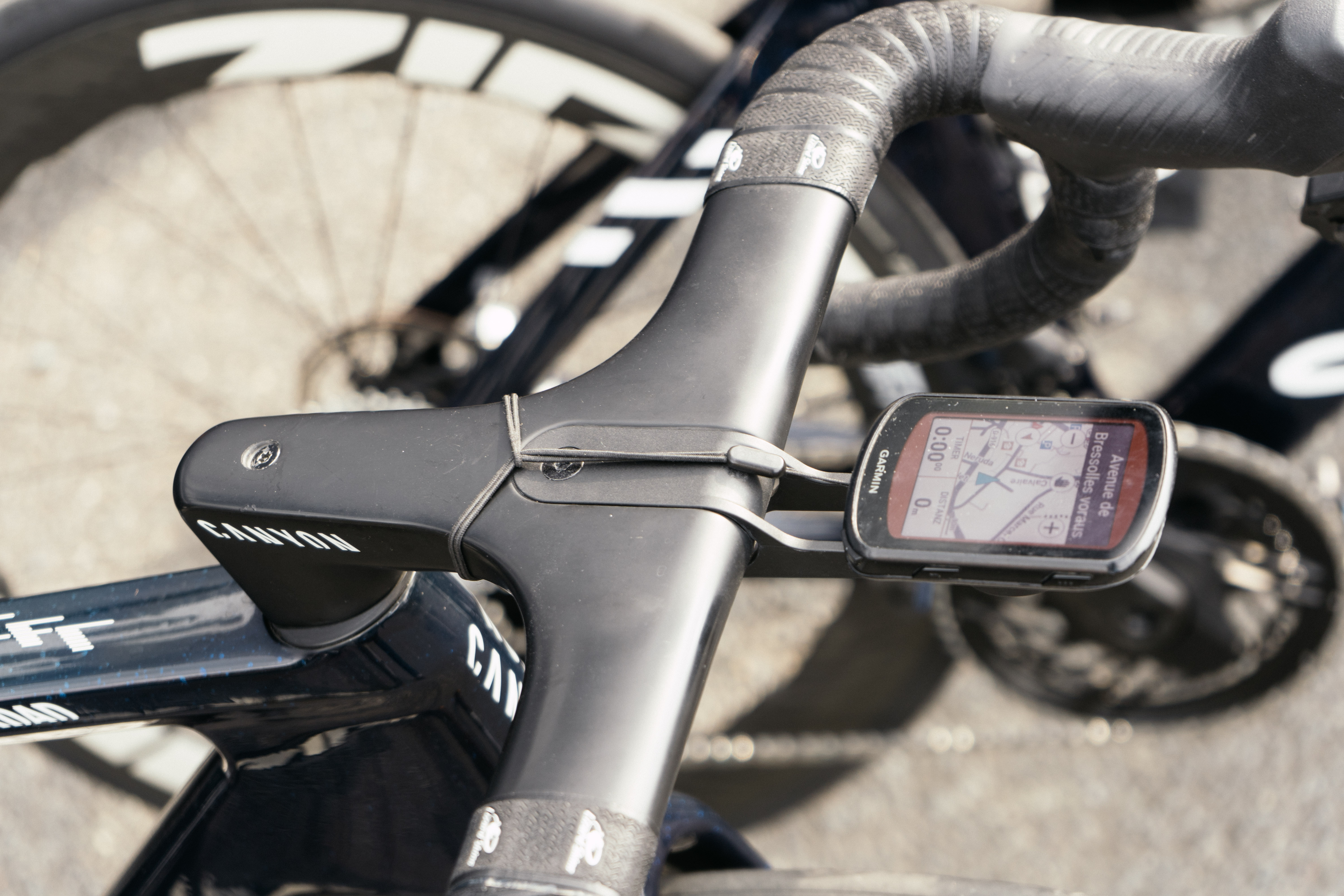
It’s unusual, but this Movistar rider likes to keep his computer safe.
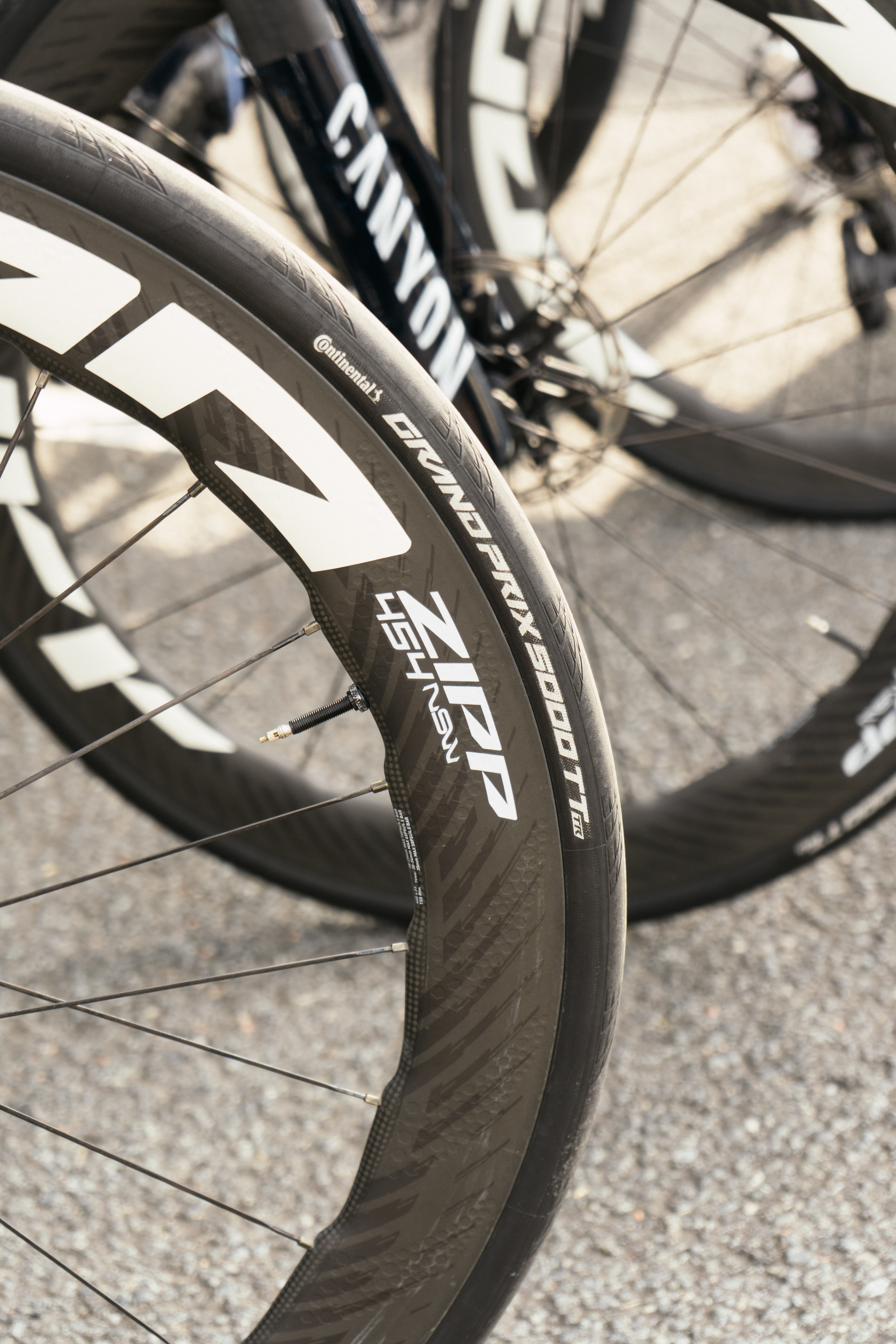
Another Continental GP5000 TT TR time trial tyre user for the road.
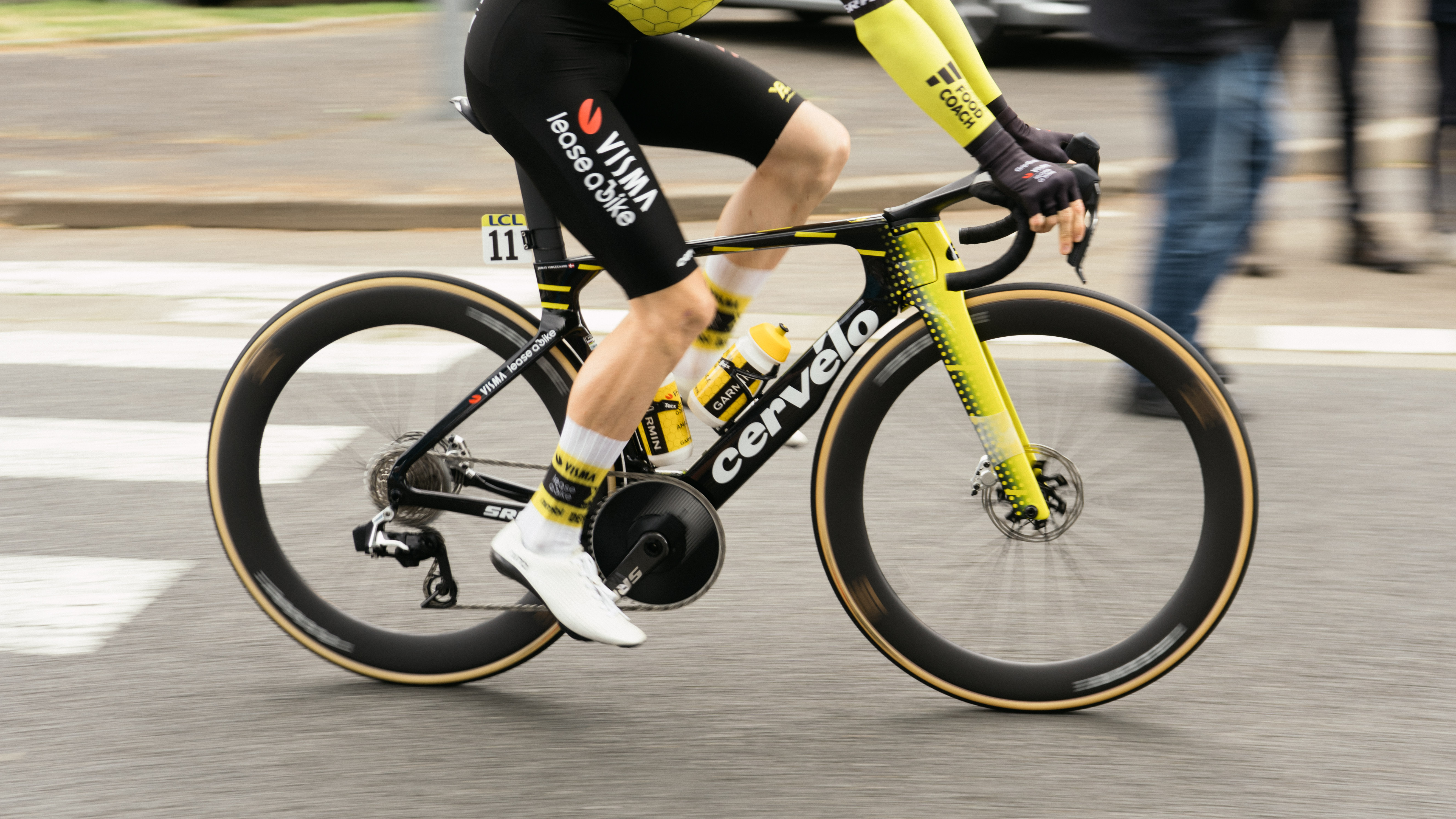
The second prototype of the day, but one that was more easily missed as it bears a striking resemblance to its forebear.
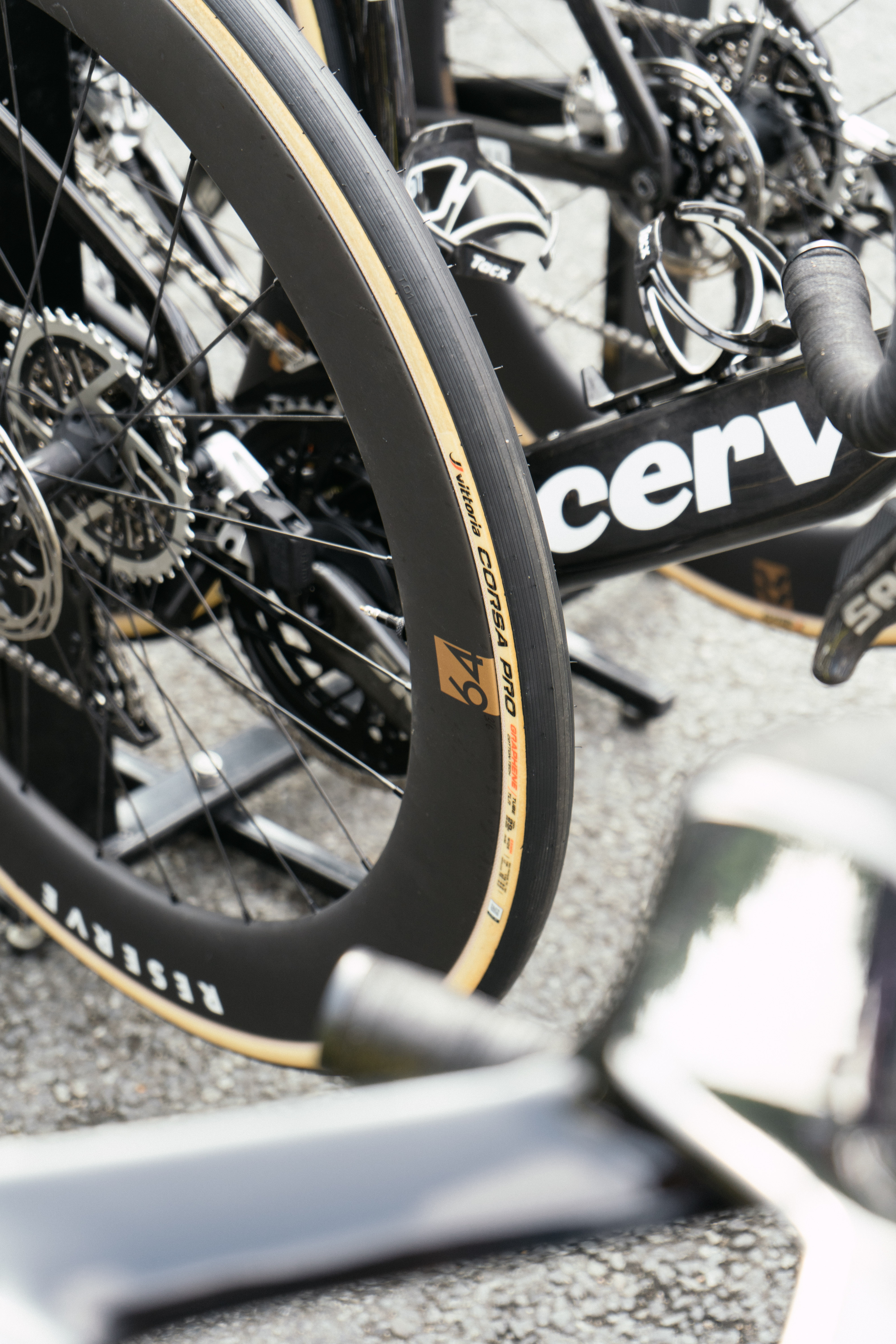
While the changes on the frameset were modest, and focussed very much at the front end, the team was also seen using a new wheelset from Reserve. Currently the brand doesn’t offer a 64mm deep wheel…

…nor a 57mm deep one, meaning this is probably a new 57/64 aero wheelset, likely optimised around the new bike.
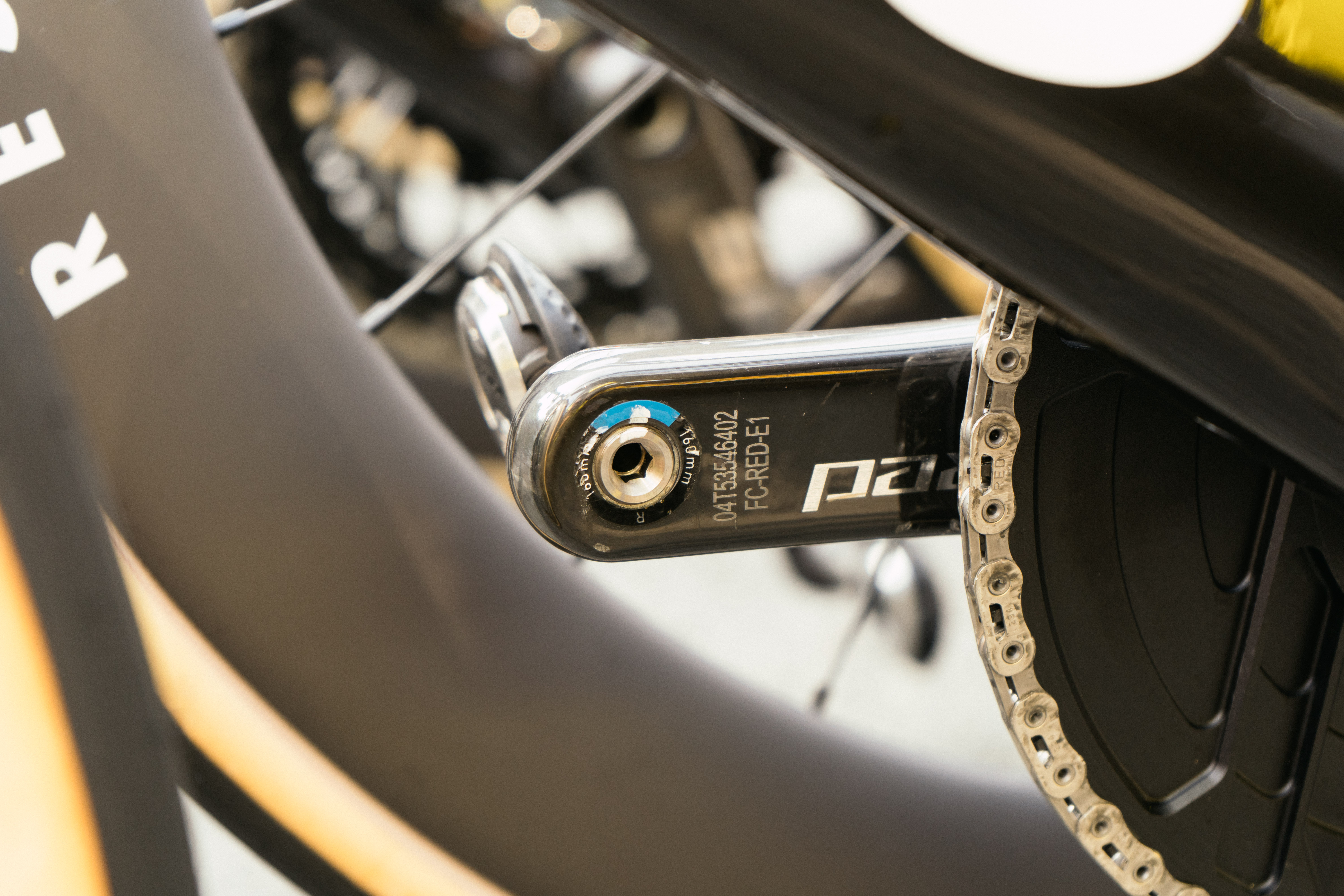
160mm cranks for Vingegaard, likely the shortest in the peloton.
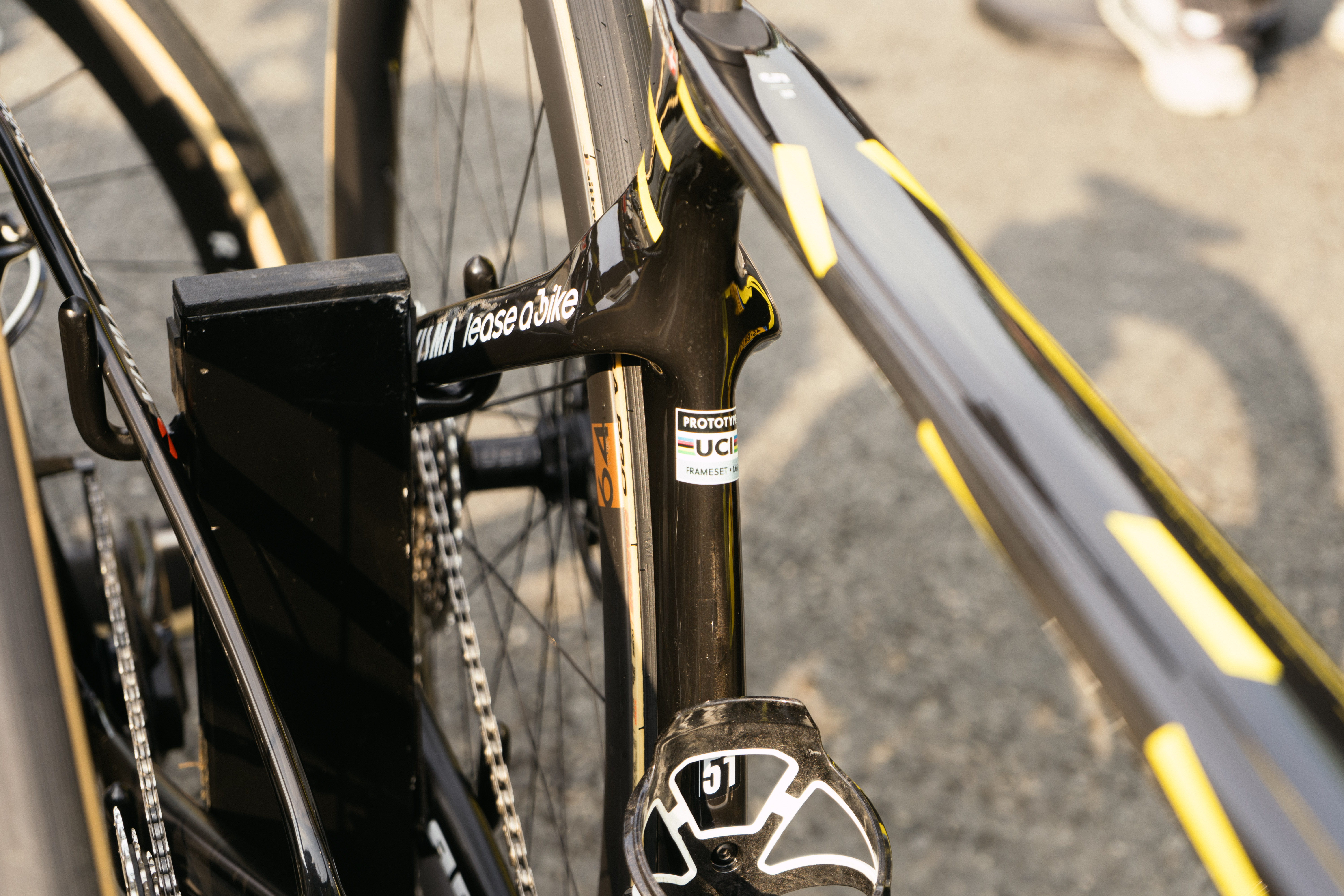
The ‘prototype’ sticker confirms what might have been hard to tell otherwise.
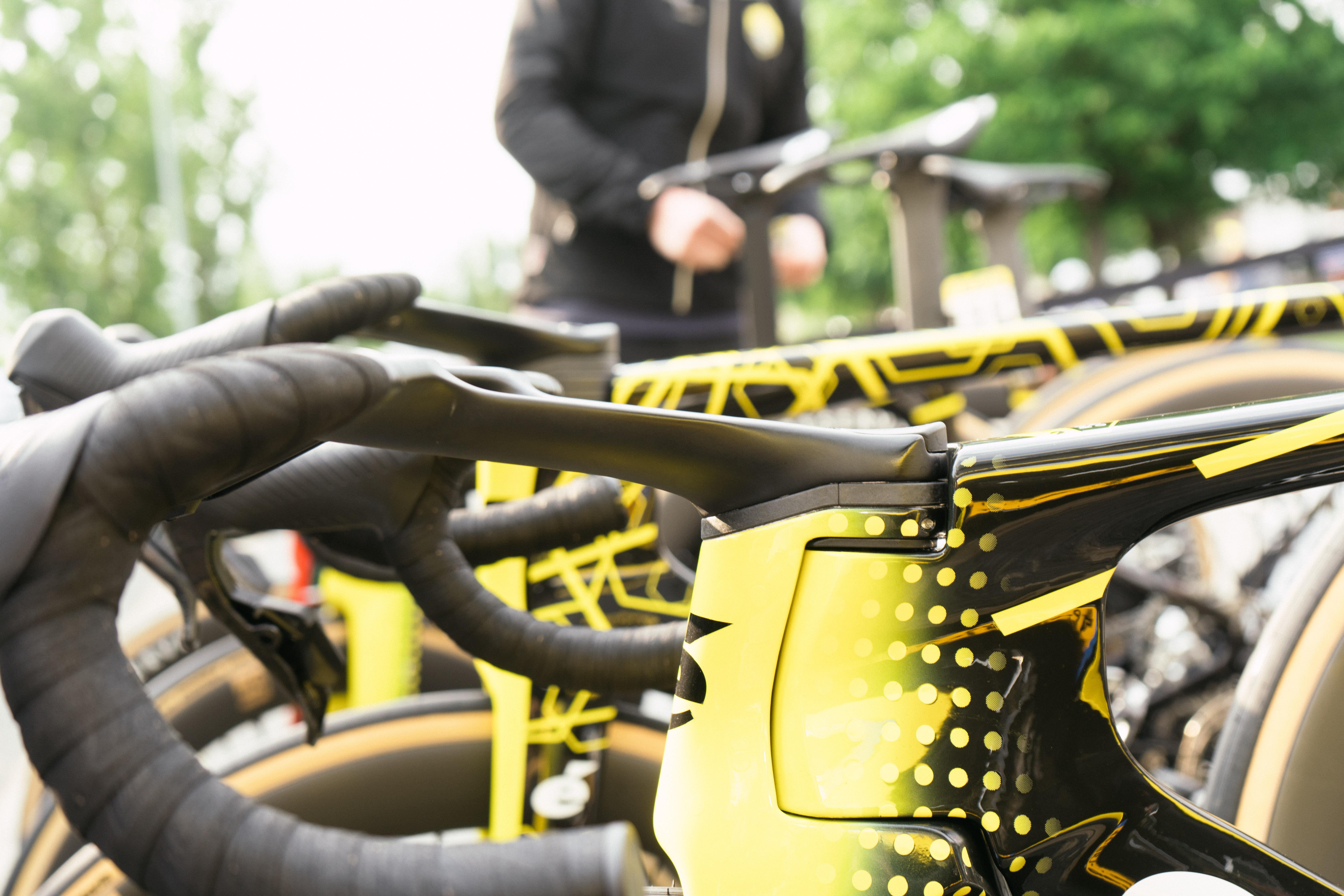
The new cockpit is a one-piece affair now, though it is backwards compatible with the current S5.
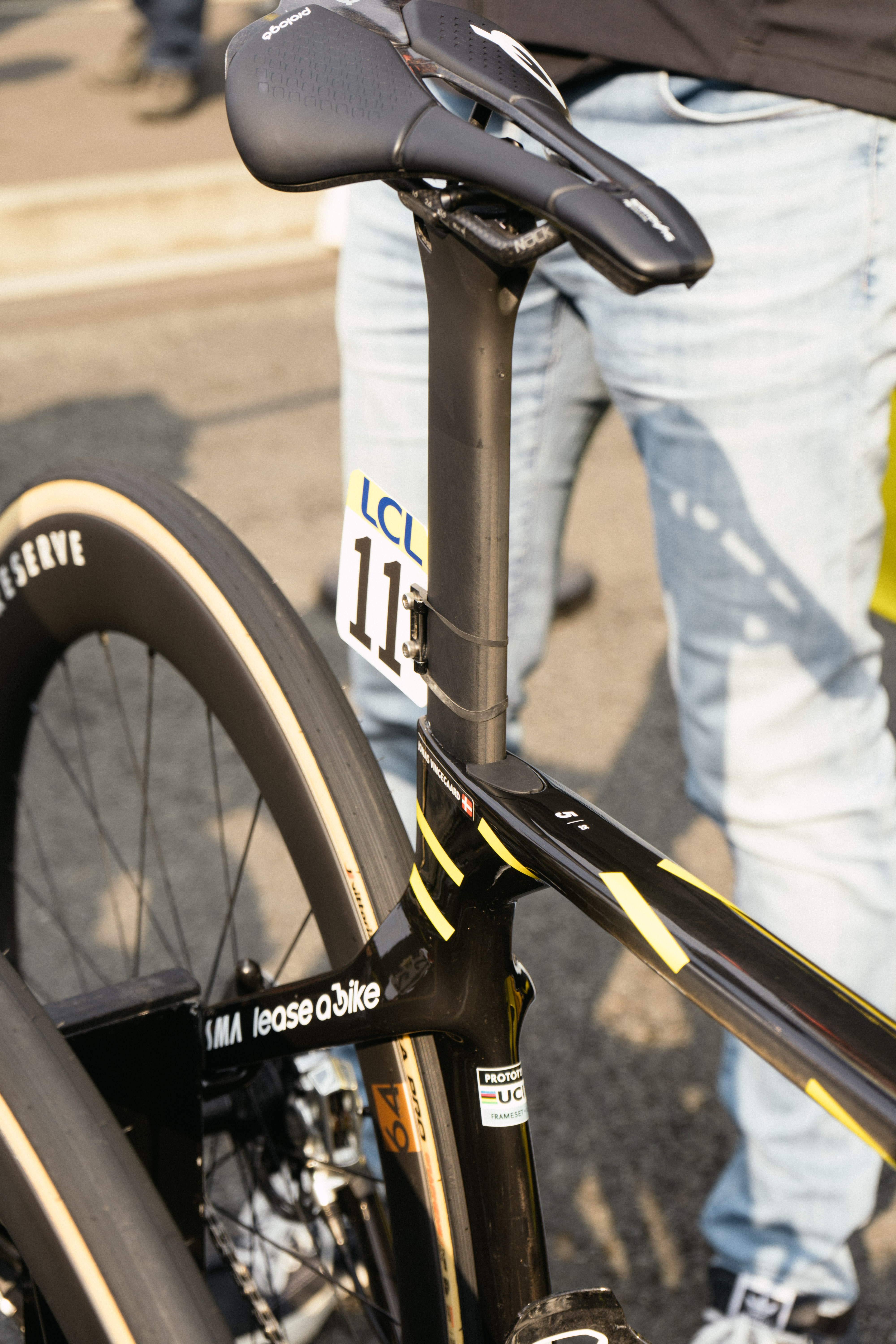
The rear end looks more or less identical, though the seatstay junctions may be a little more generous.

Aero Speedplay pedals seem like the obvious choice for an aero bike.
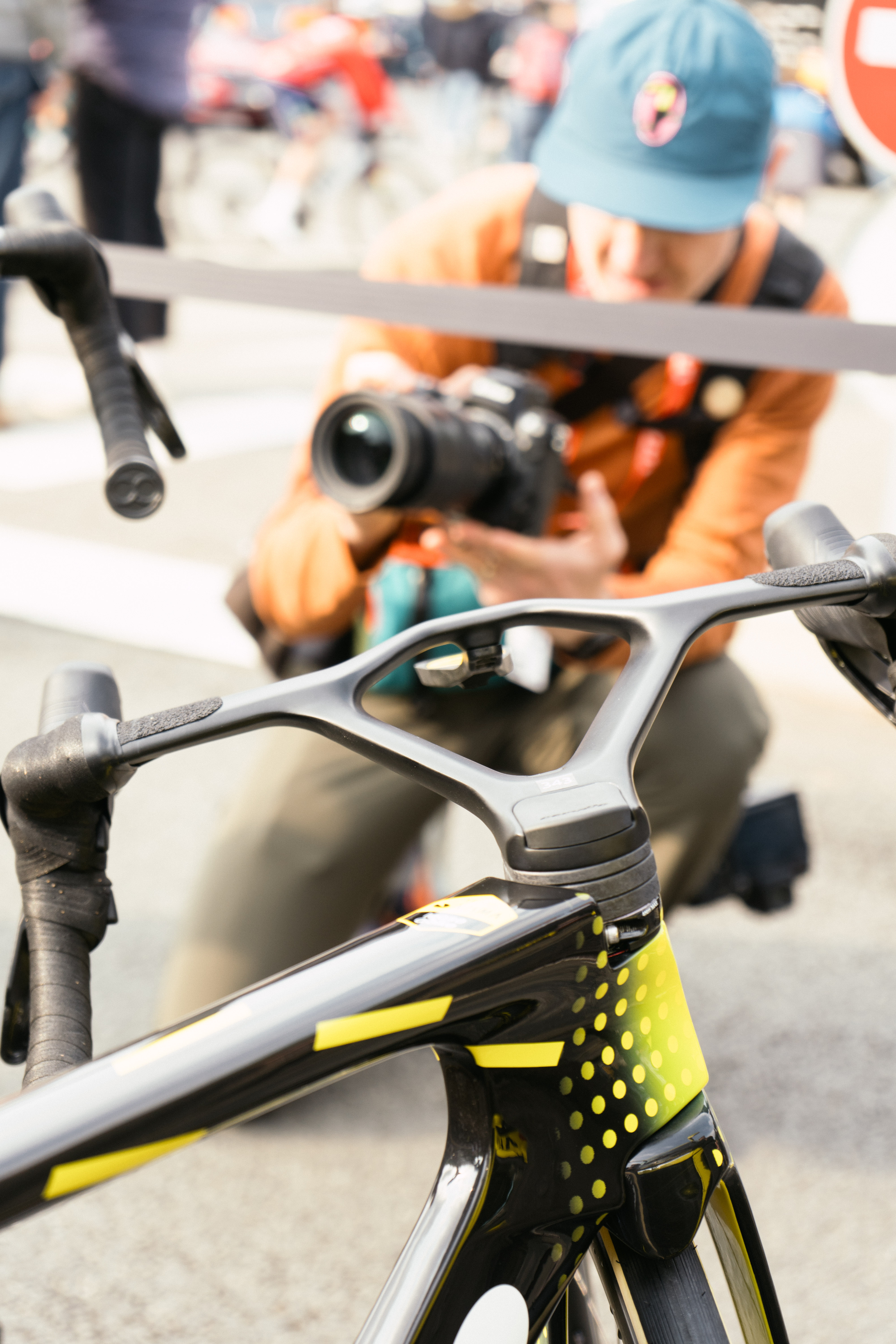
Here’s the new cockpit from the back.

I couldn’t work out what these codes pertained to. Maybe 70mm of rise and 130mm in length, but I’m just guessing
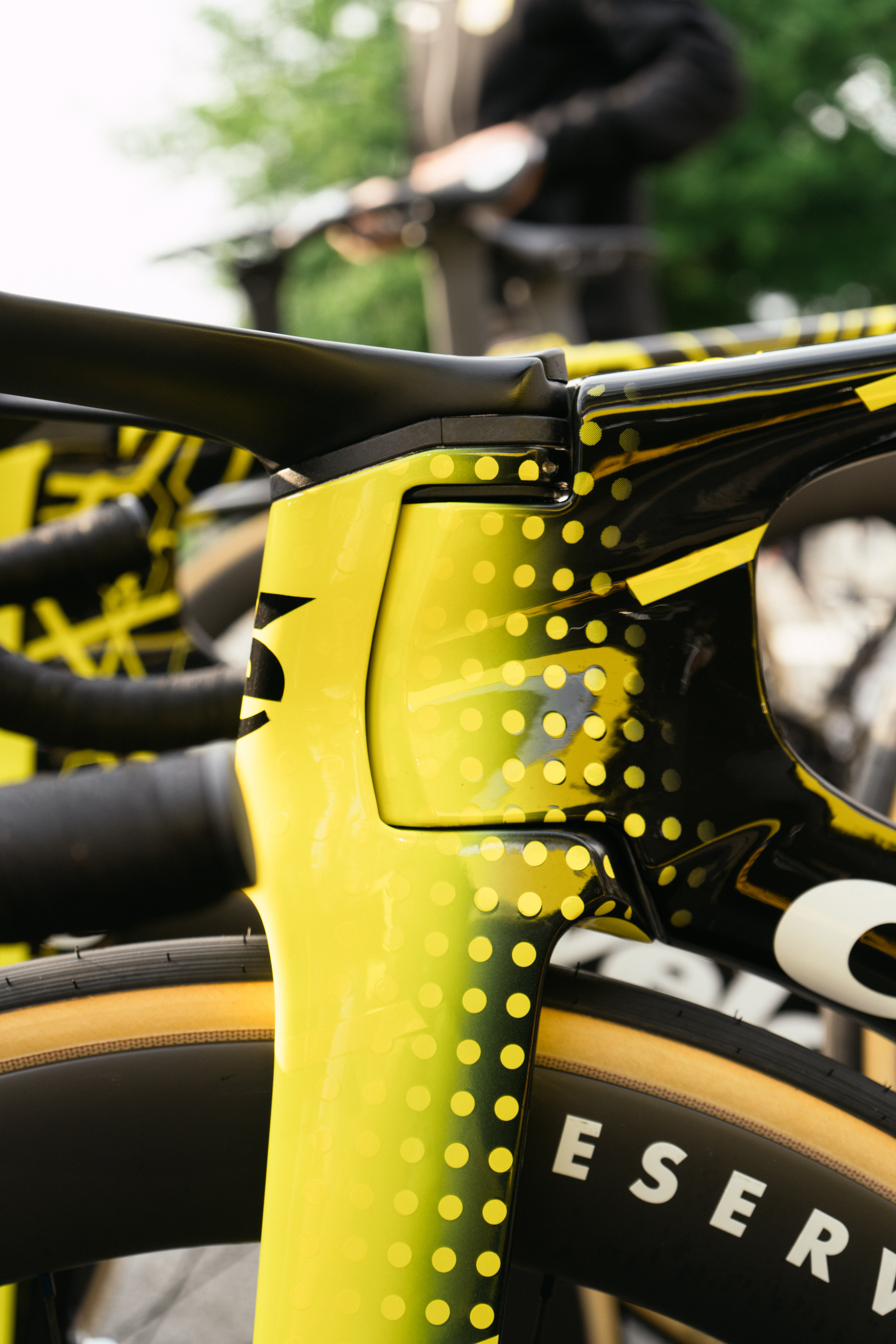
The bayonet fork creates a deeper effective headtube.

And the front of the fork has been extended forwards to further enhance the depth like a nose cone.

The spare bottle cage bolts had been removed and the bosses very neatly taped over.
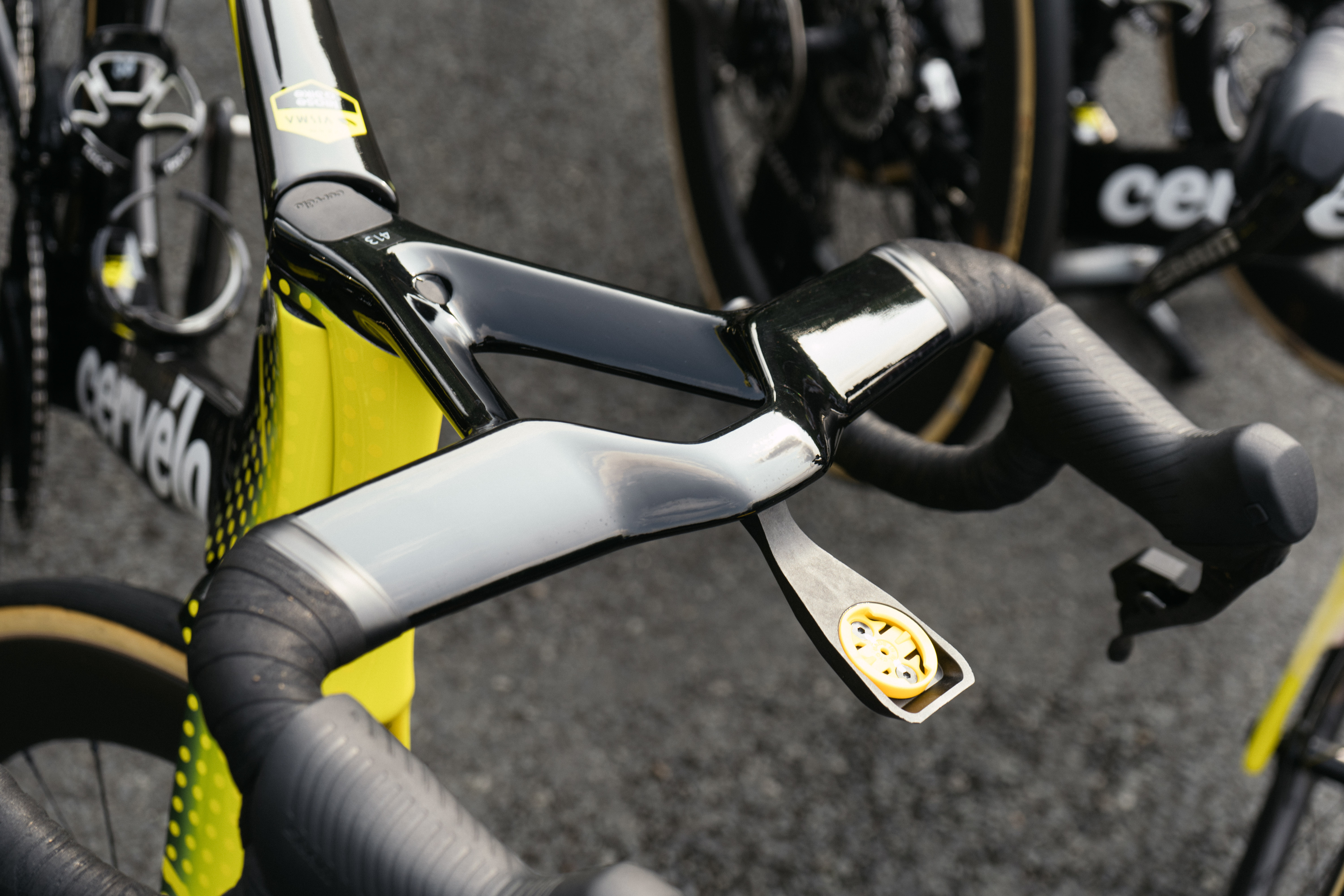
Some riders had a glossy cockpit, which I suspect was an earlier prototype.

Some, too, ran grip tape on the tops instead of bar tape to further enhance the aero qualities.

Here’s a neat trick… the bolts holding computer mounts in are tiny and quite prone to coming loose. Instead of over-torquing them and risking rounding them off, a pair of paint pen lines over the bolt and mount will show if the bolts have rotated and are at risk of coming totally loose.

More time trial tyre action over at the Ineos bus.
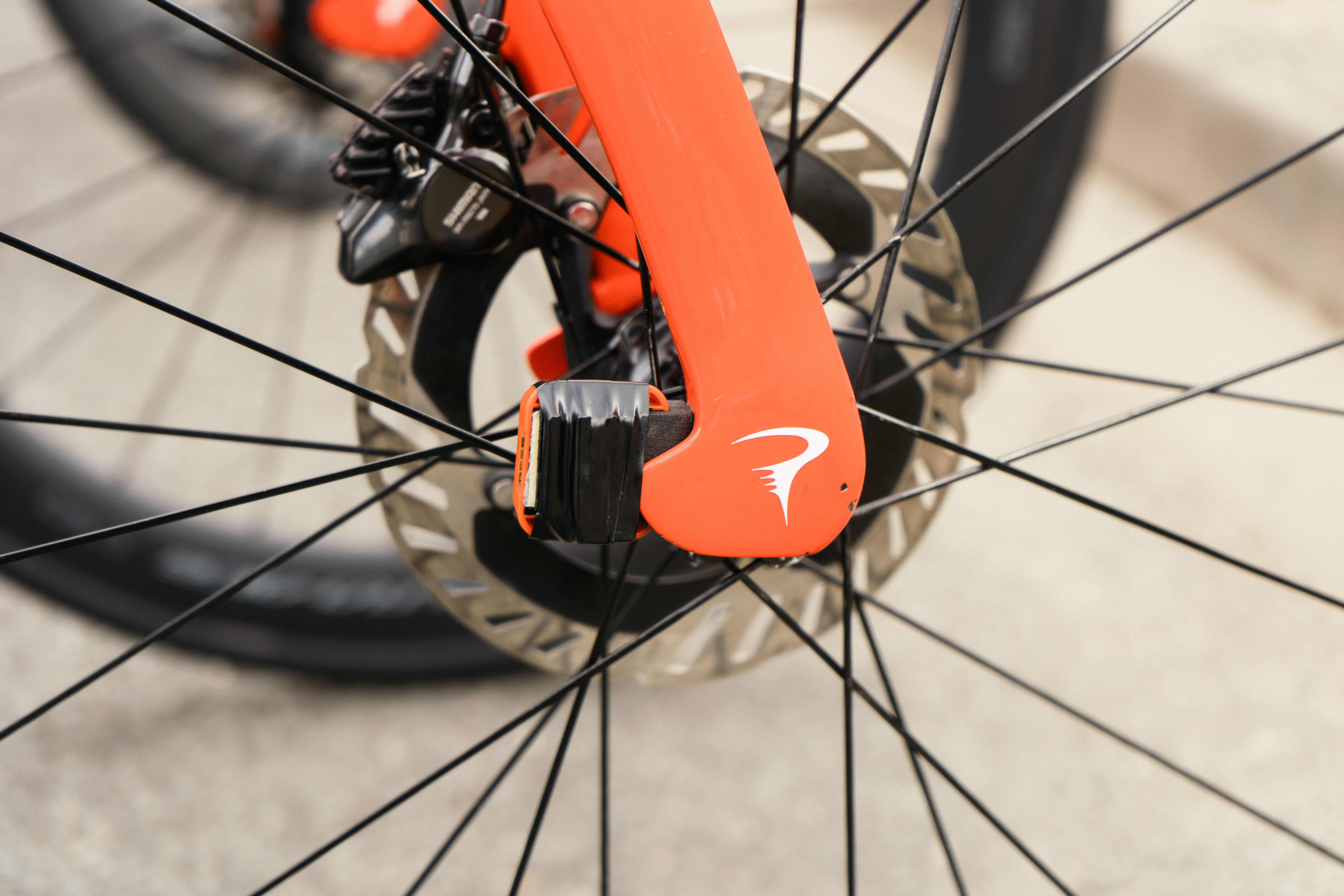
And a similar transponder placement to the UAE bikes, but a little less neat.
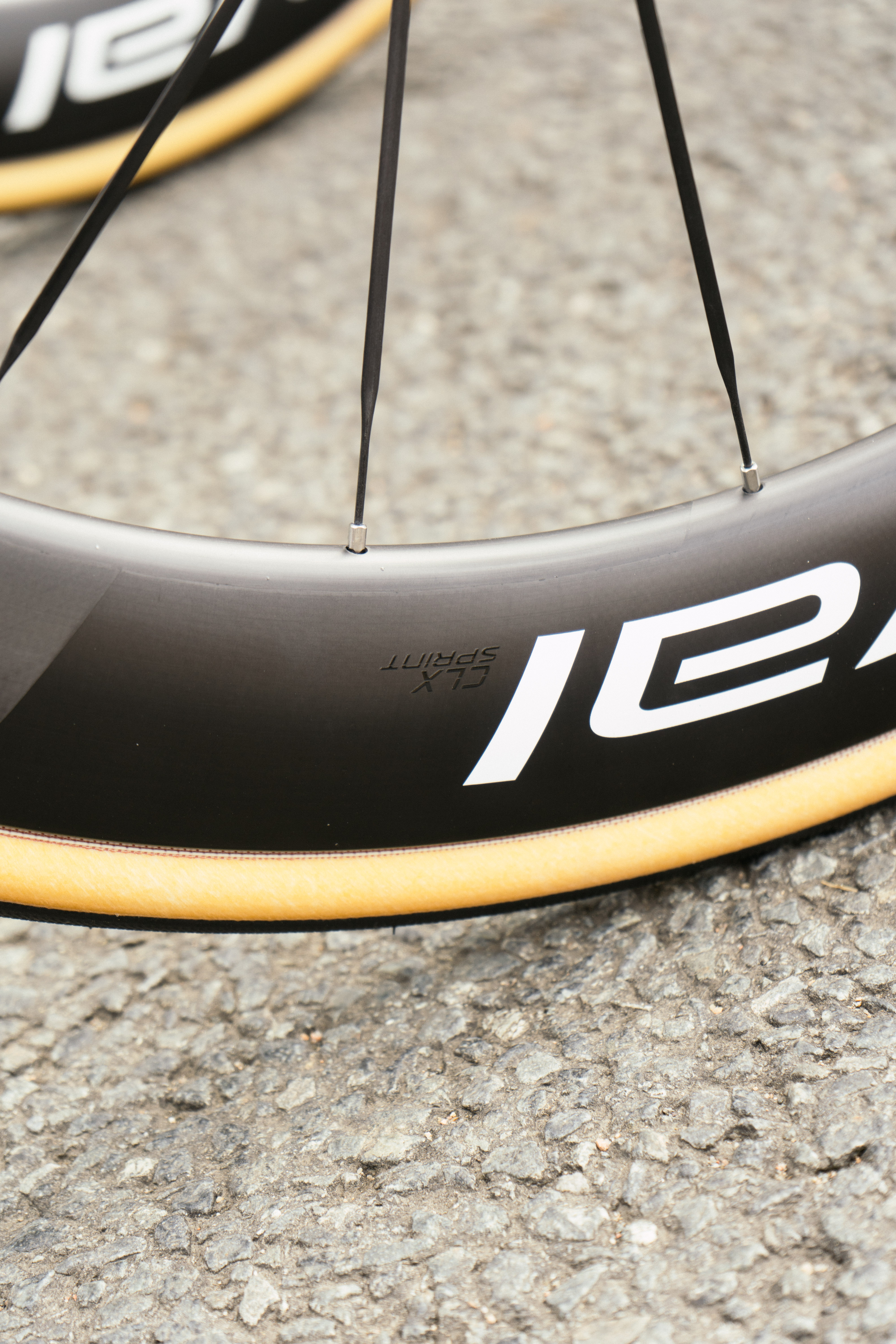
Another team bus, another new set of wheels, this time at the Red Bull Bora-Hansgrohe camp. These Roval Rapide Sprint wheels are even deeper than the new Rapide CLX III.
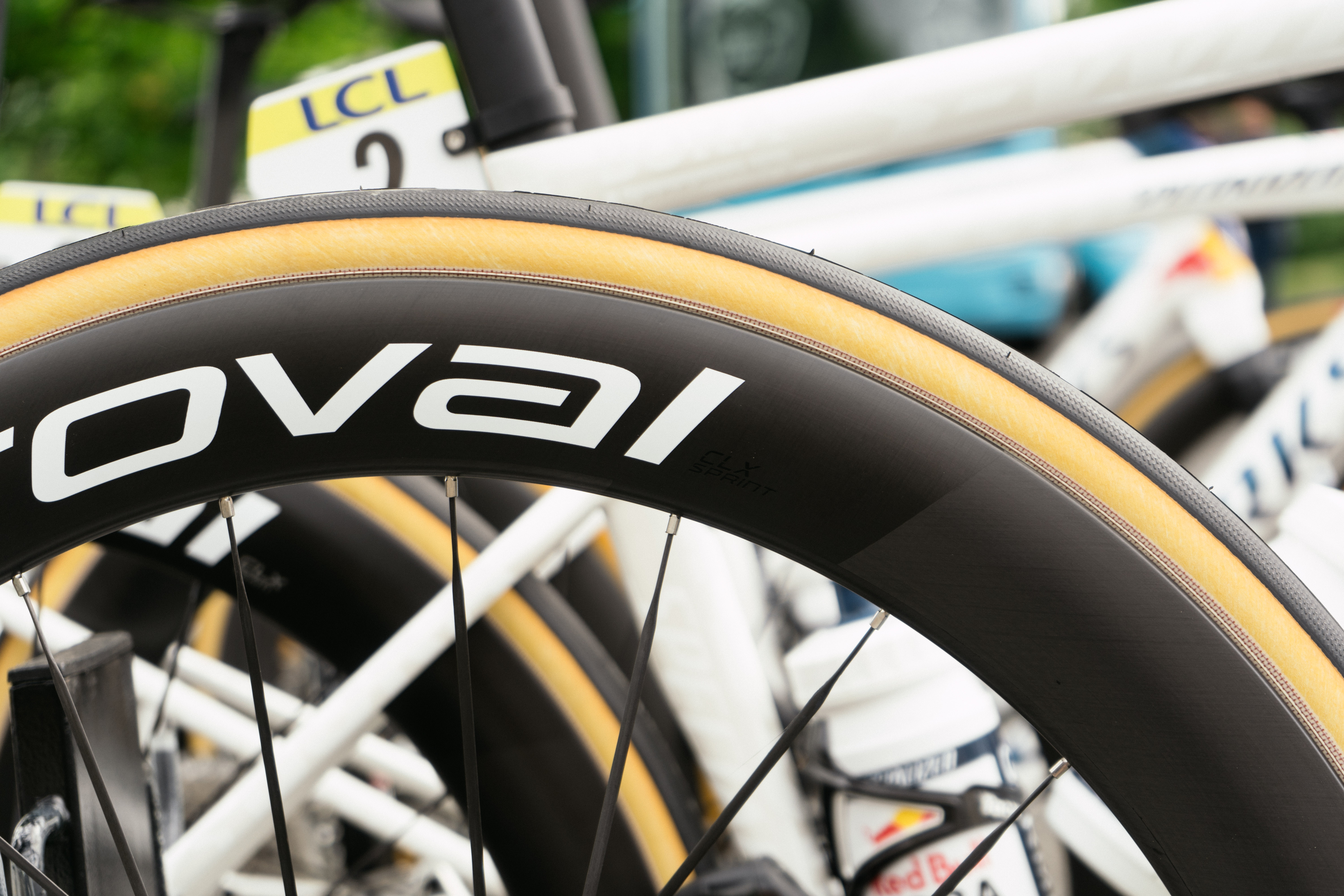
They do look similar, though the tell here besides the extra depth is that the nipples are half-shrouded by the rim.
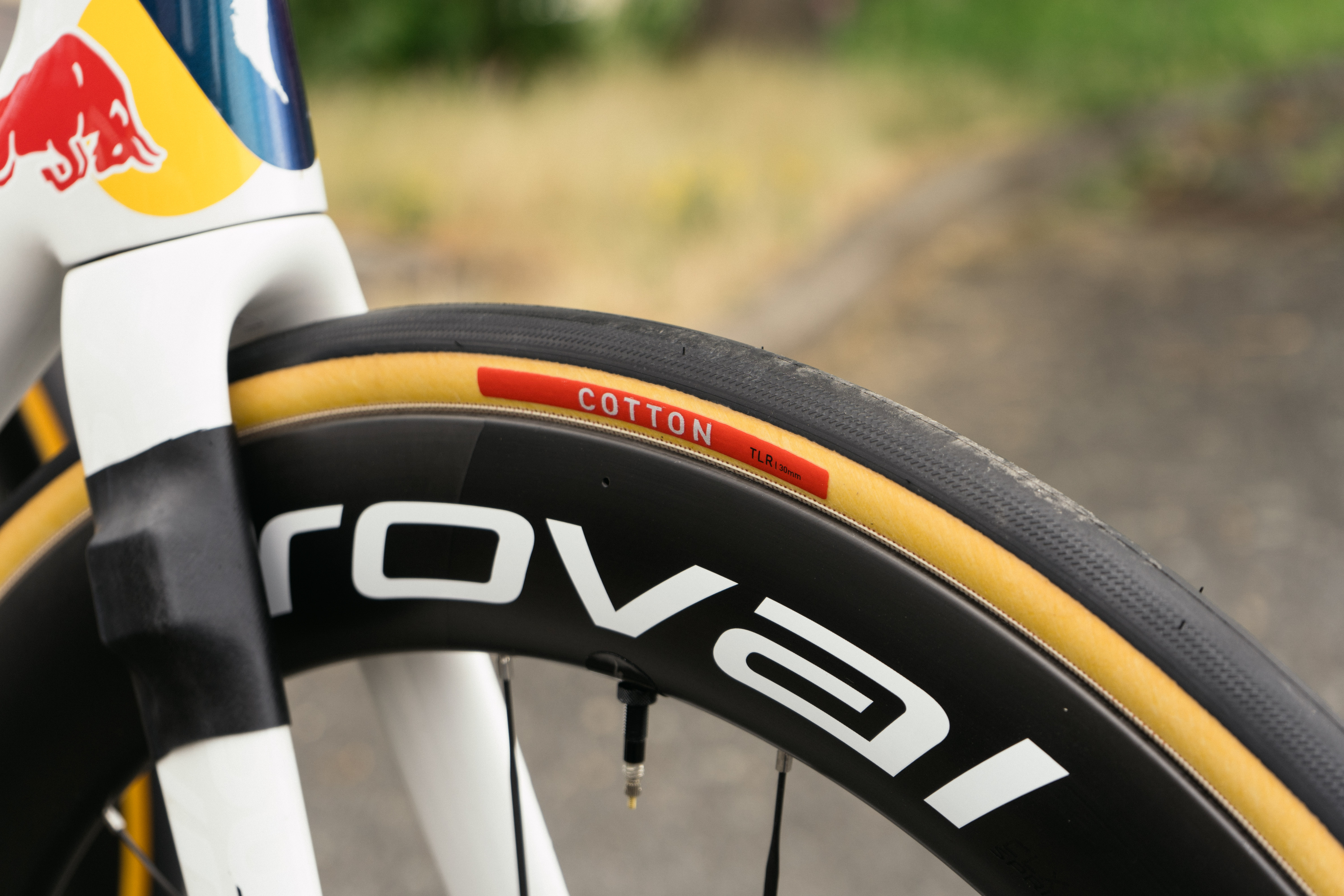
Here’s that new tubeless ‘Cotton’ tyre, but not hidden this time. It’s a replacement for the very popular Turbo Cotton.
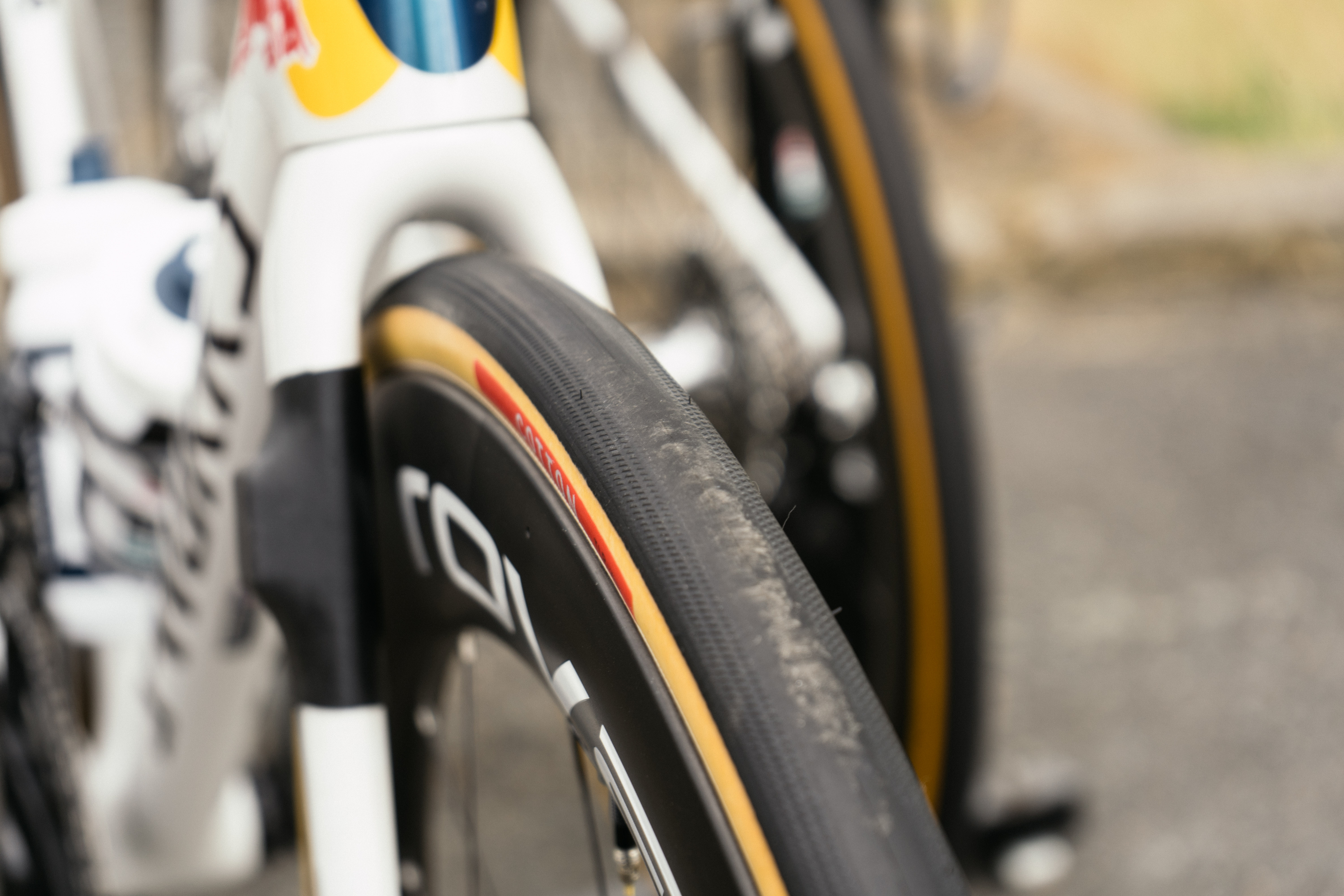
It’s 30c in width, and has an identical tread to the old Turbo Cotton.
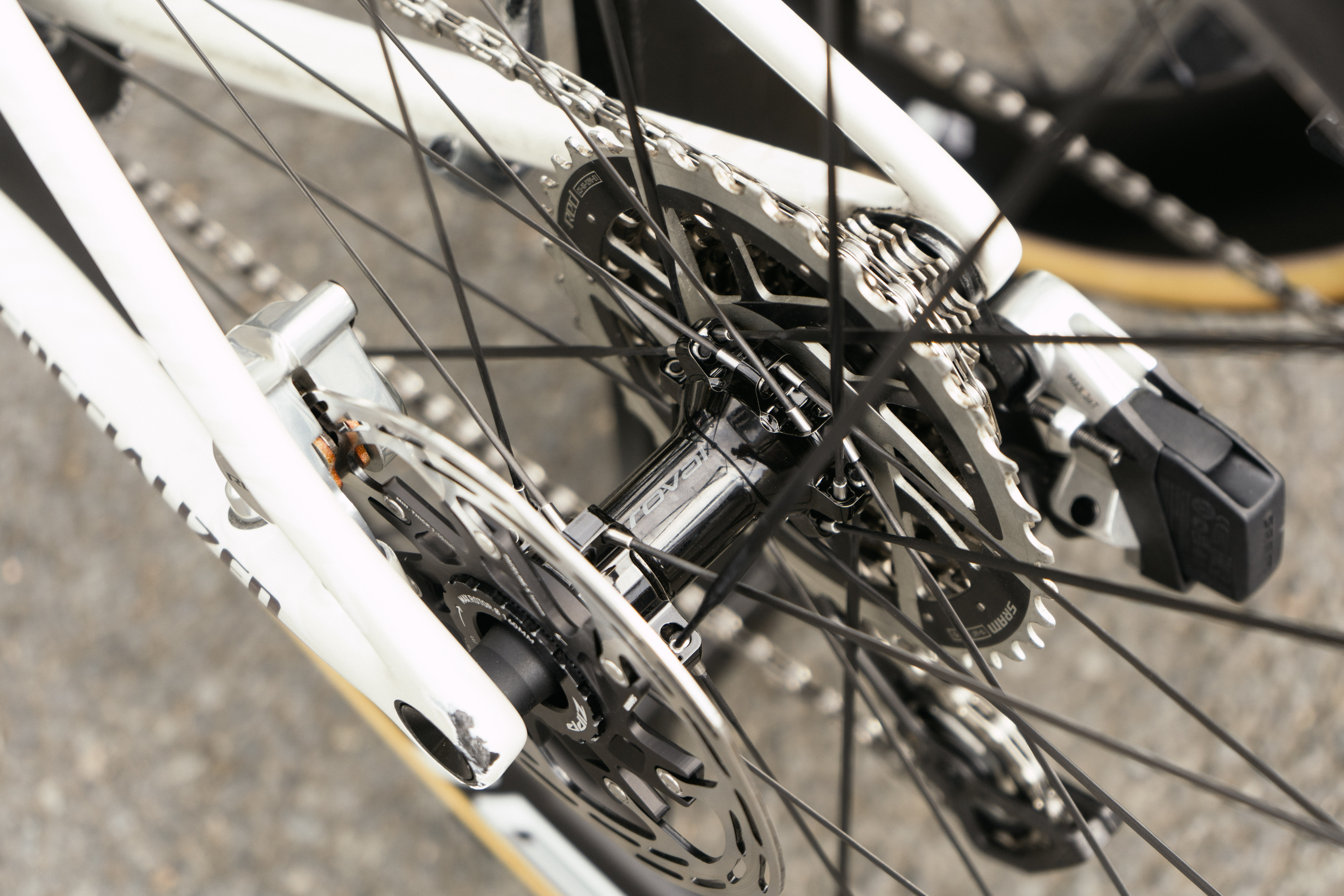
Here’s the hub of the Rapide Sprint wheels, but I also think that the team is using aftermarket brake pads in their SRAM Red brakes.
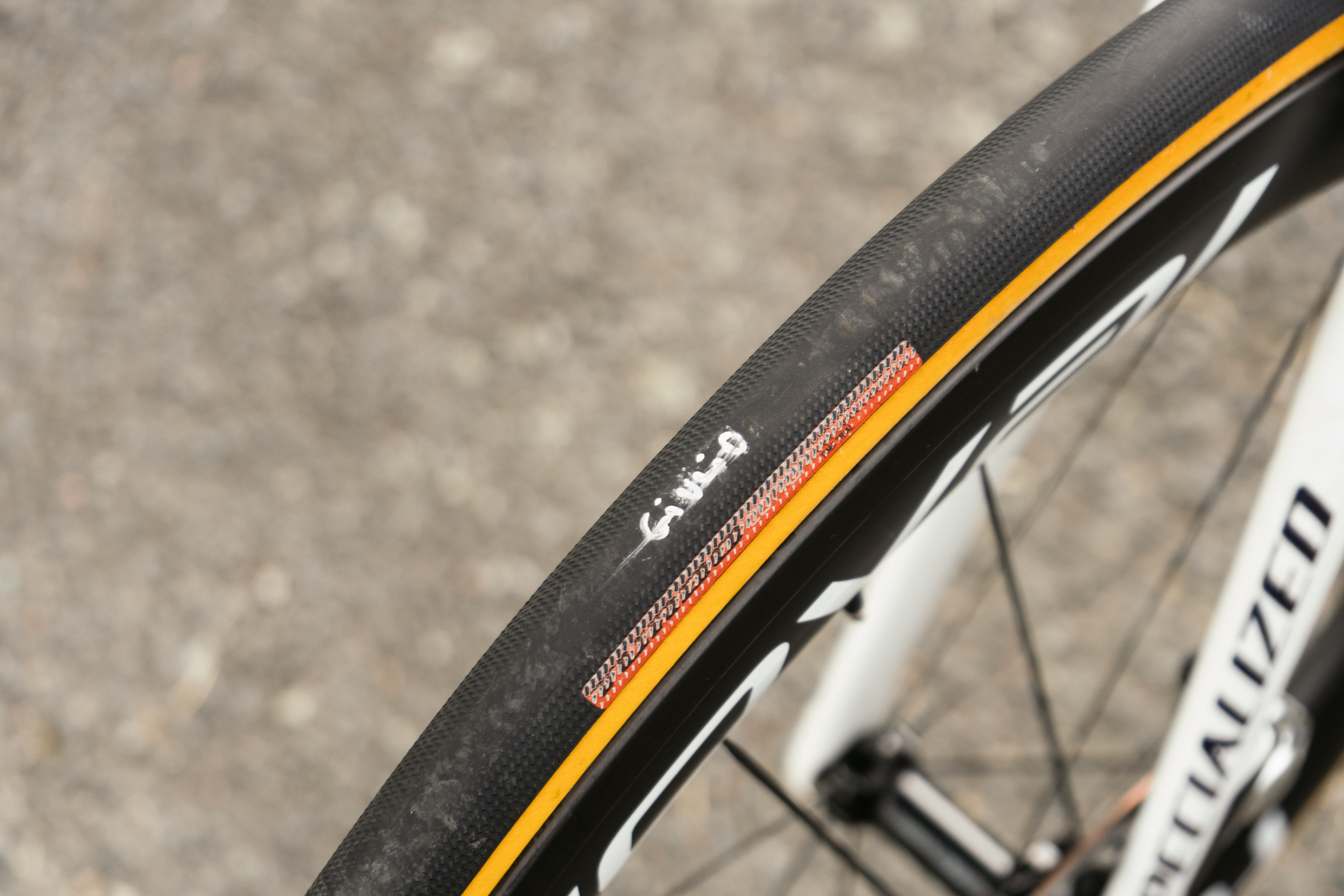
Here’s an old Turbo Cotton, with ‘Giulio’ written on it. They were presumably earmarked for Giulio Pellizzari, but he’s not here at the Dauphiné.
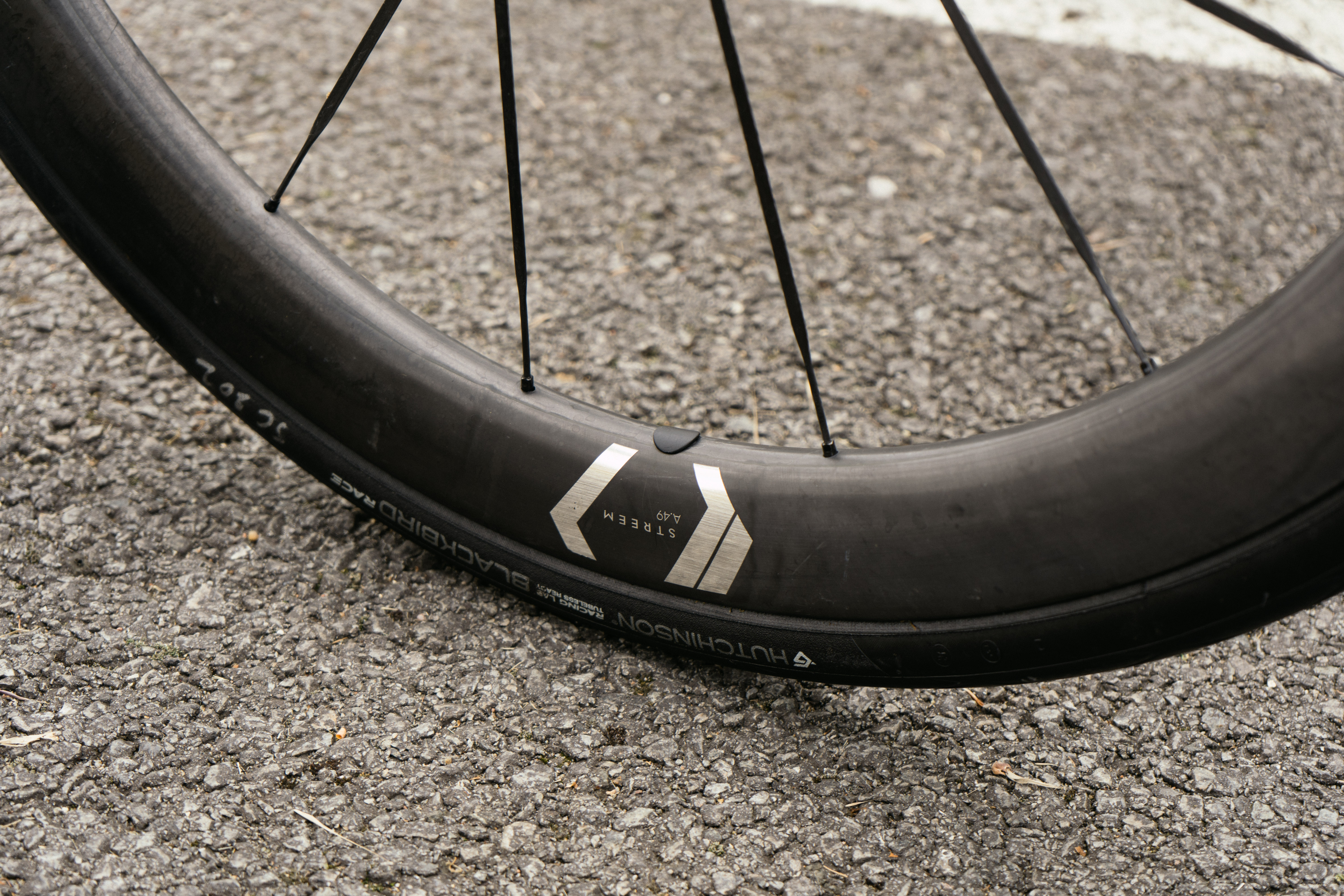
The Newmen wheels of Intermarché are tubeless, but have hidden valves for aero gains.
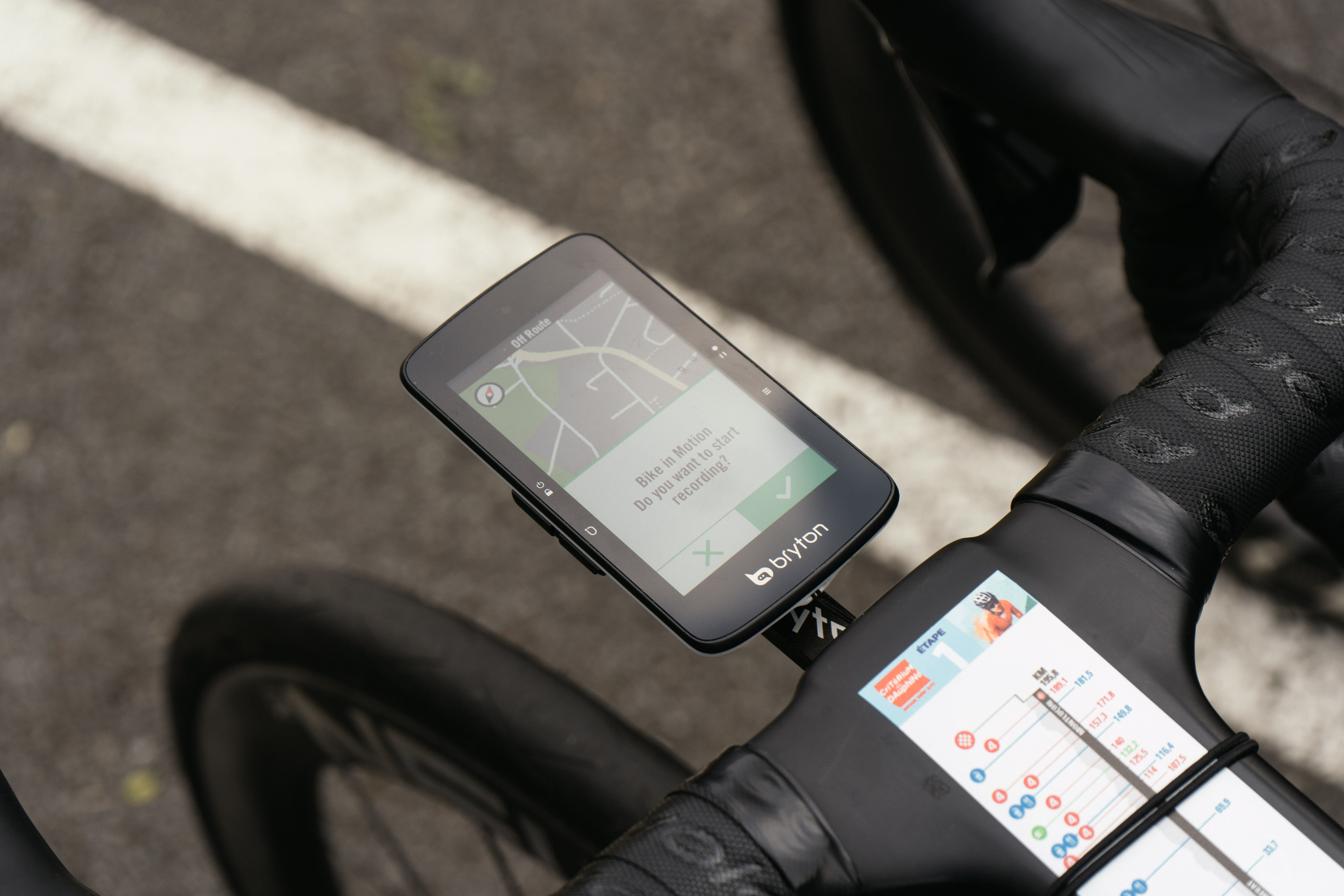
This computer from Bryton is a new one on me. It might be the S800 but I’m not sure, but in any case it’s fun to see something other than Garmin and Wahoo.

If you’ve been paying attention to my tech galleries in recent months you’ll know what these are, but I’ll forgive you if you don’t.
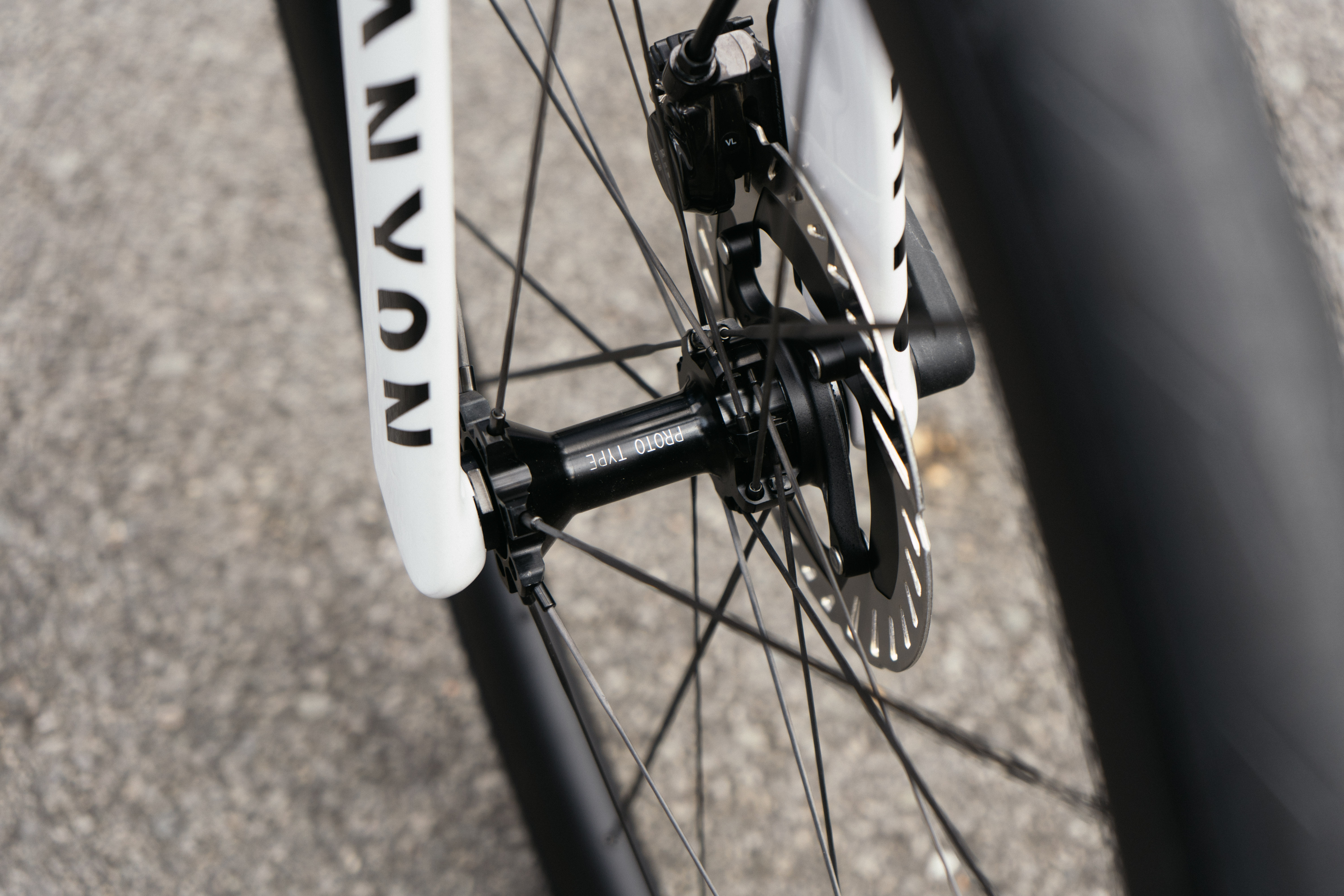
Here’s another clue, and they’re on Mathieu van der Poel’s bike. They are likely a new Dura-Ace wheelset, but he’s been using them since the Spring Classics.
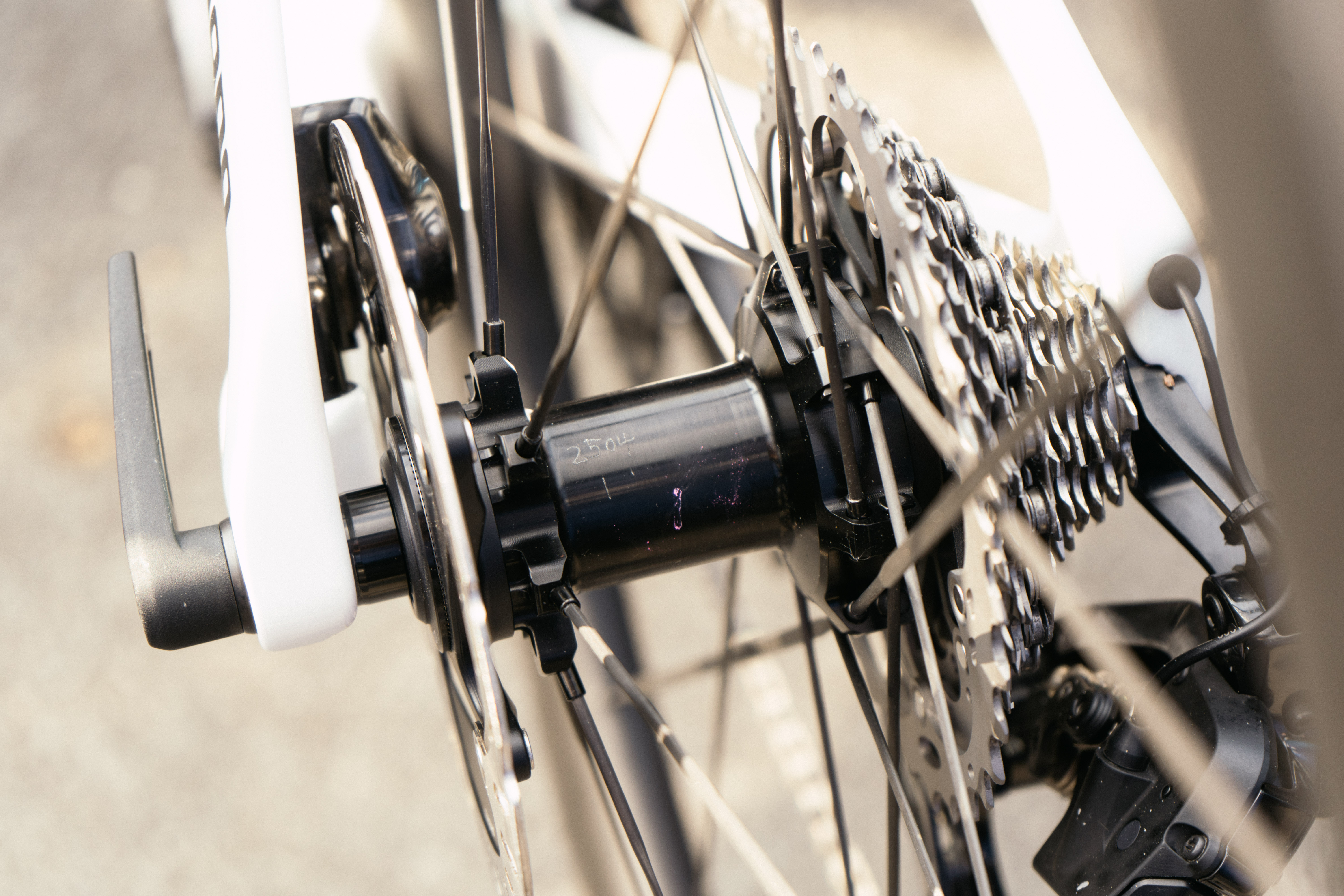
Interestingly Van der Poel leaves his axle levers in despite the aero penalty. The hub also shows some test markings.

The nipples are fully shrouded by the rim in this case.
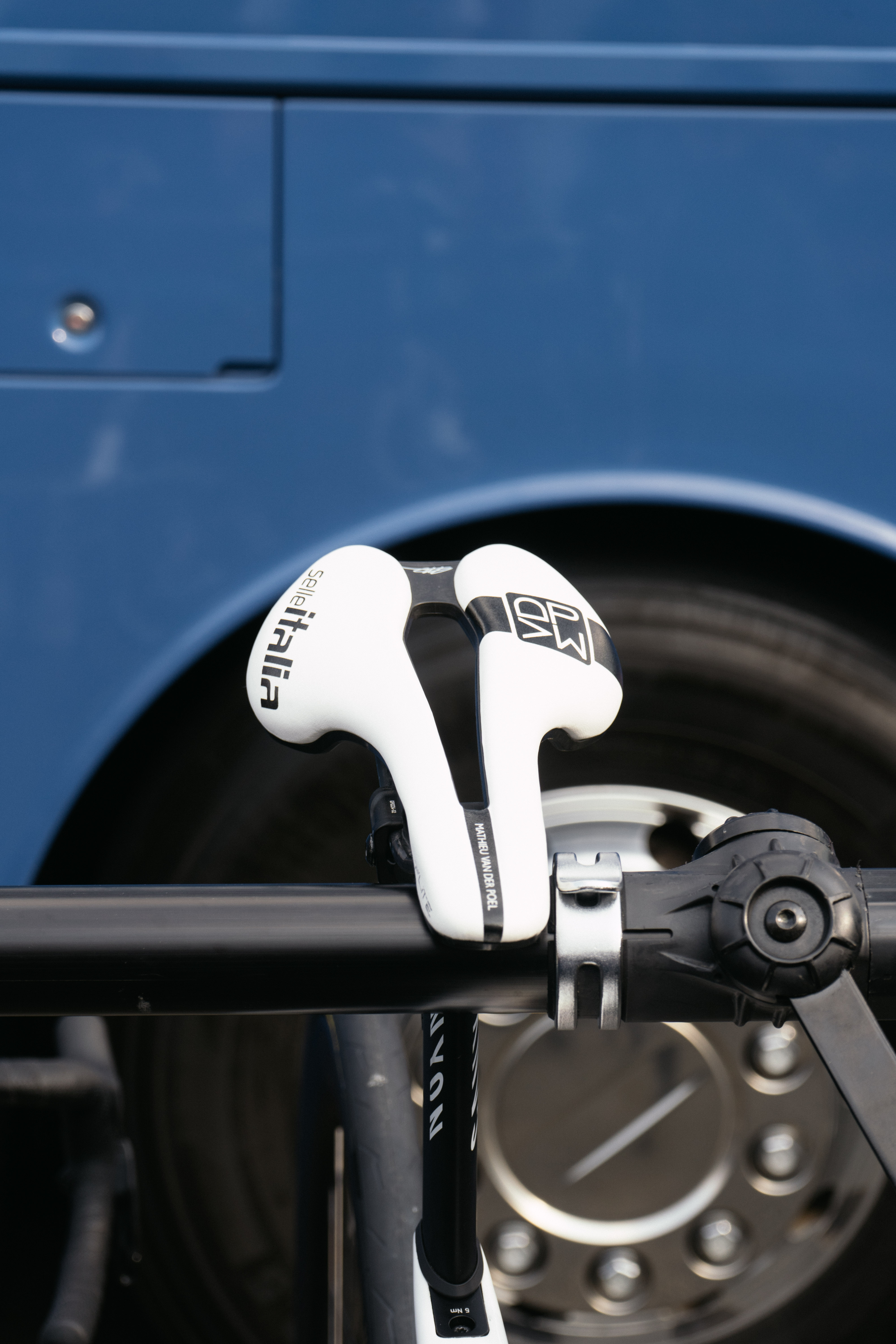
Van der Poel gets his own custom Selle Italia saddle.
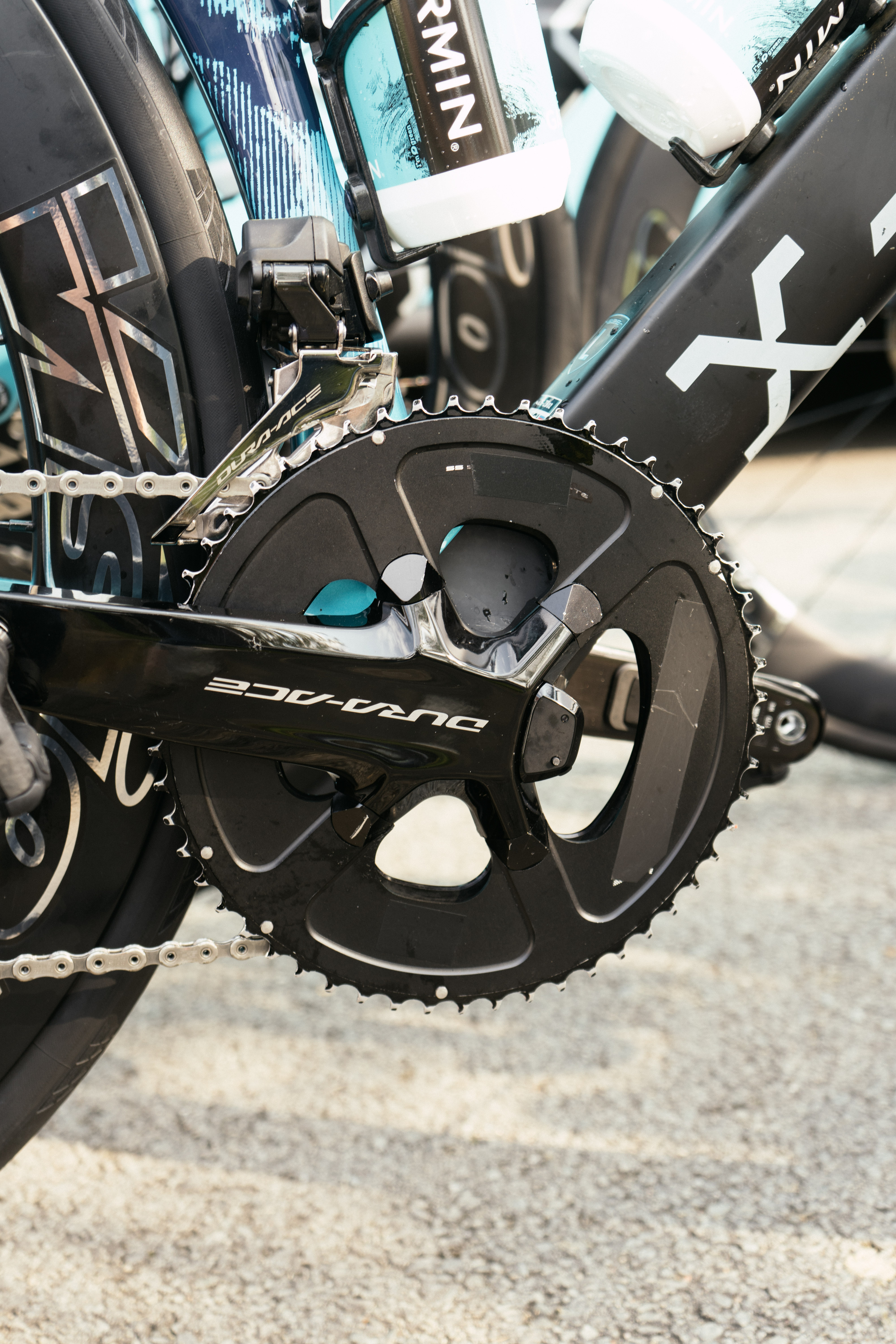
Despite the tape covering the logos, we’re confident this X-Lab bike from Astana Qazaqstan is running a 55-tooth Miche R92 chainring. The team presumably has a few left over from last year’s partnership with Wilier, a brand that works closely with Miche.
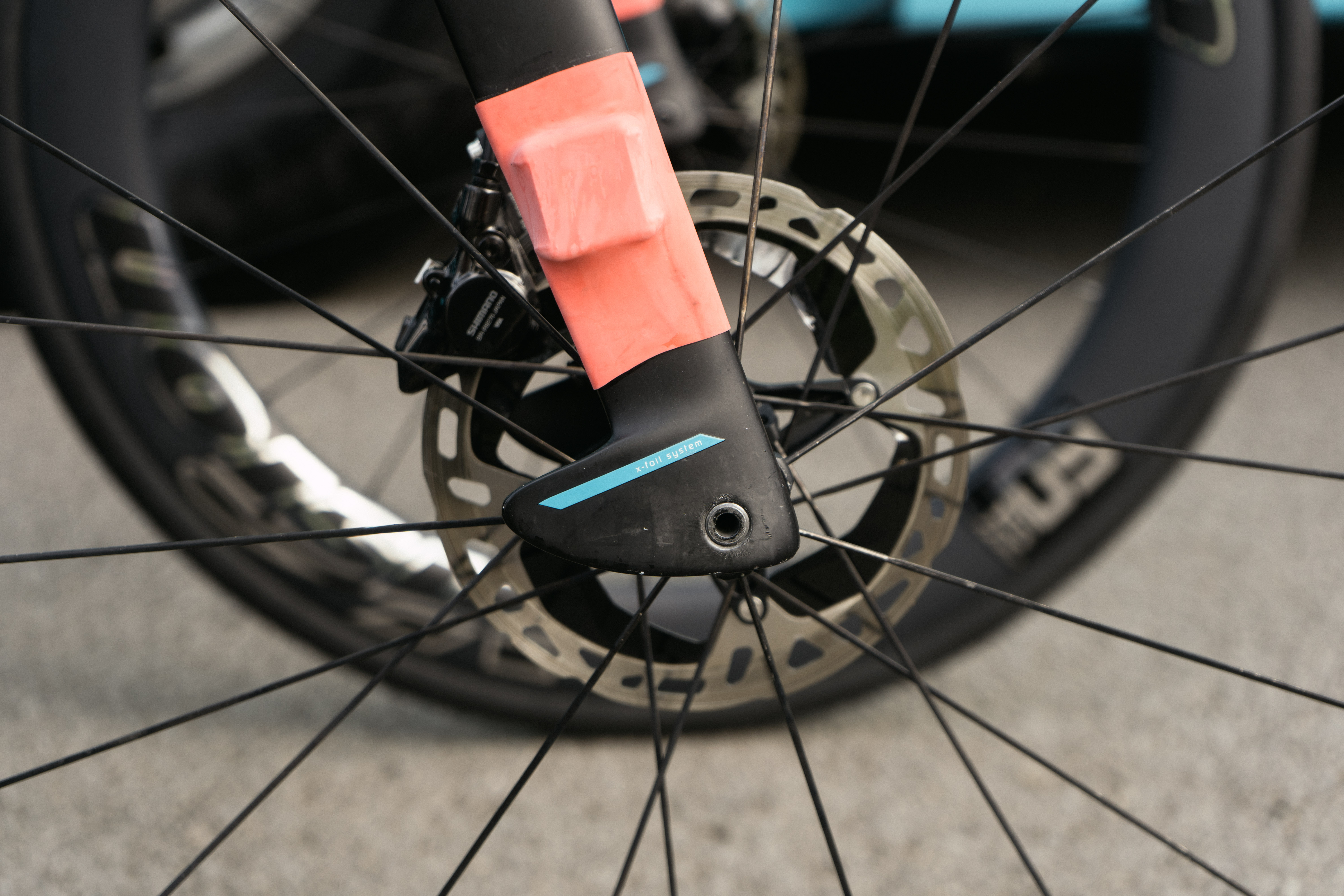
Interestingly the X-Lab forks have a tab behind which a transponder could conceivably be tucked, but it’s mounted to the fork anyway.

Nothing ground breaking here, I just like seeing a colour matched axle on the Wilier bikes of Groupama-FDJ.
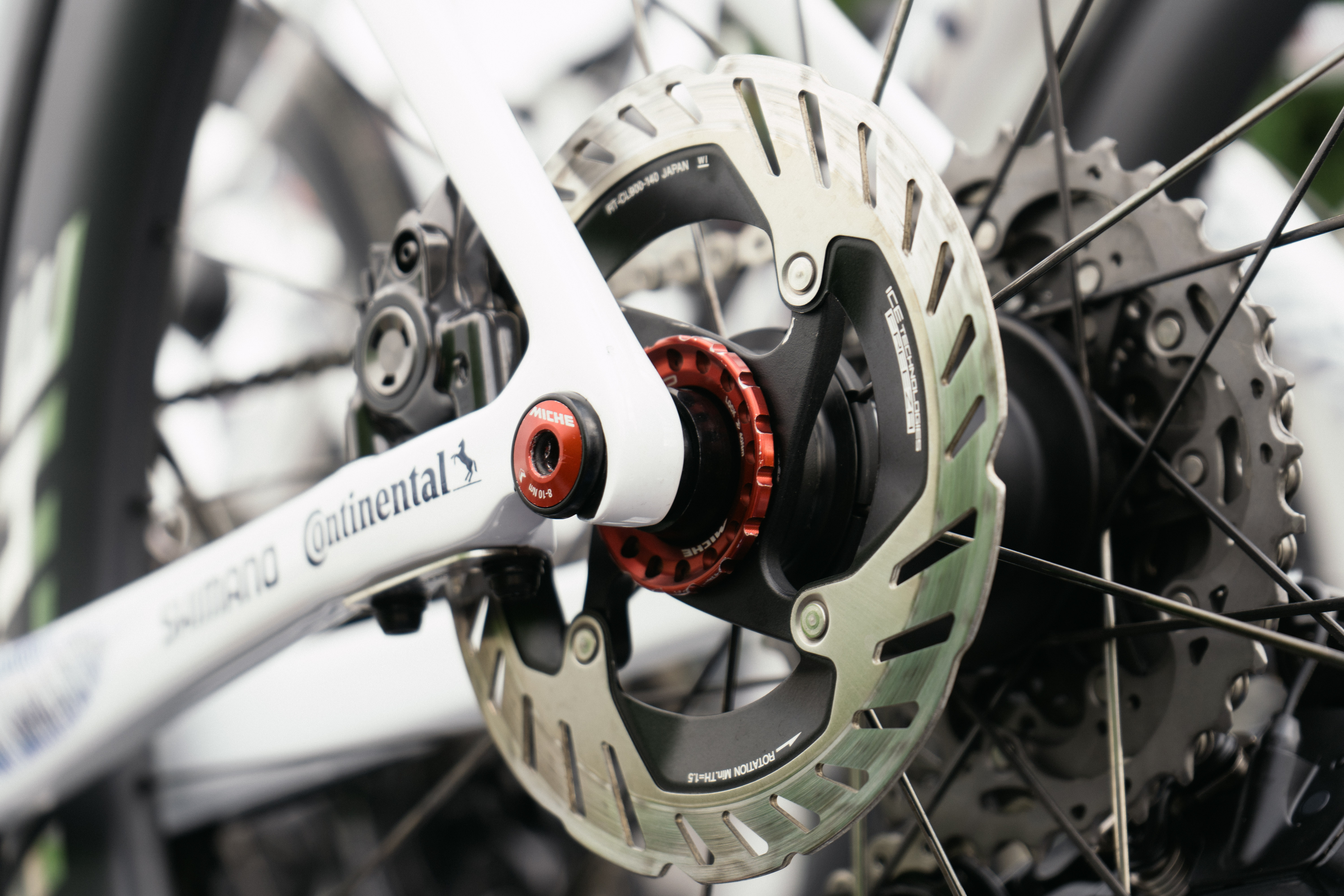
Not to mention the red lockrings for the rotors too.
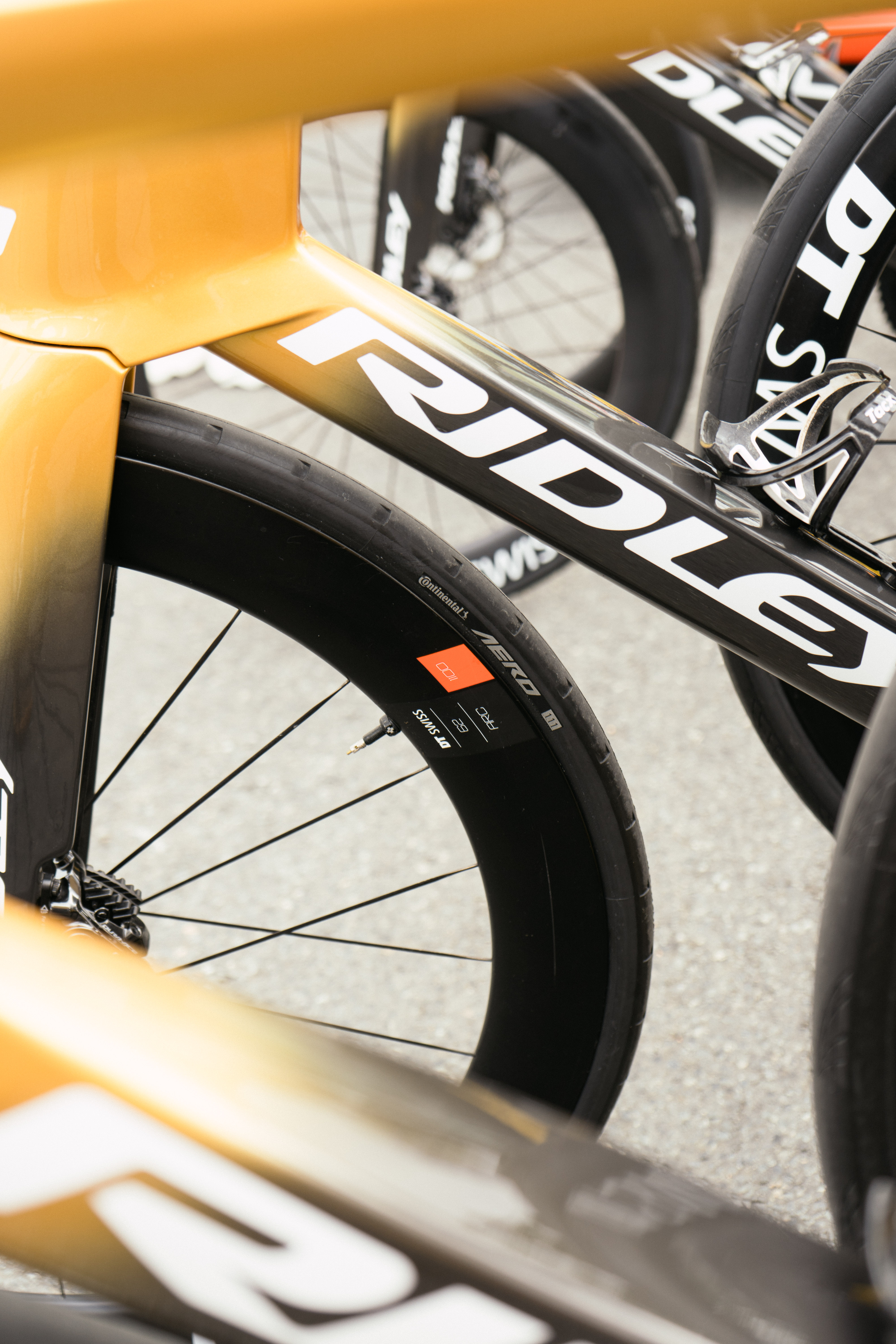
Uno-X was the only team I saw using the Continental Aero111 tyre.
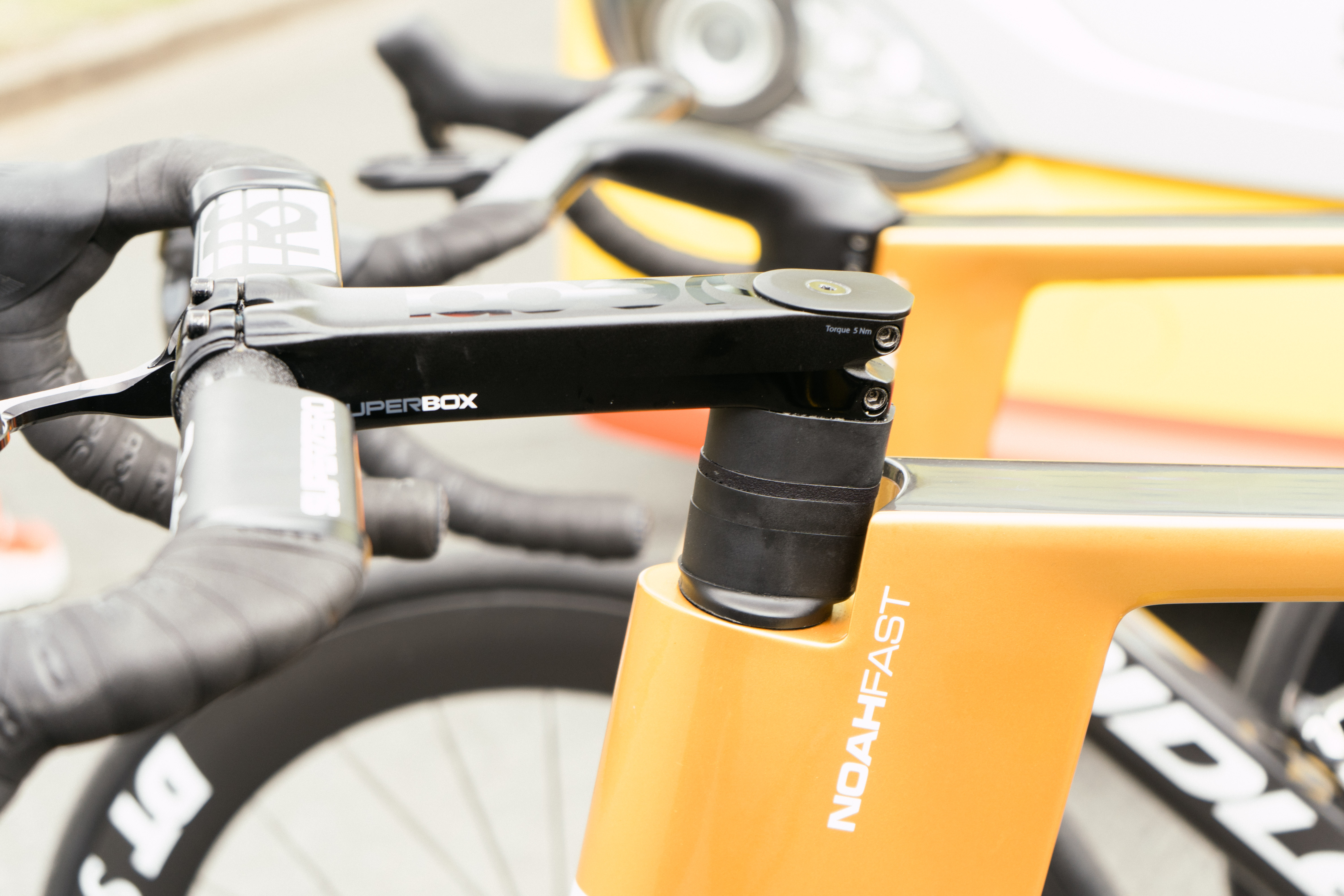
I understand that for setups like this the team uses an extra long bung in the steerer for support, but even so this gives me the jitters.
That’s your lot, folks. Sit tight, and we’ll do it all again in a few weeks for the Tour de France. ‘Til then, adieu.
Is there anything we’ve missed? Let us know in the comments below, and stay tuned to Cyclingnews for all the race results, news and features from our team on the ground throughout the classics season.
Thank you for your Cyclingnews subscription. We use our subscription fees to be able to keep producing all our usual great content as well as more premium pieces like this one. Find out more here.







